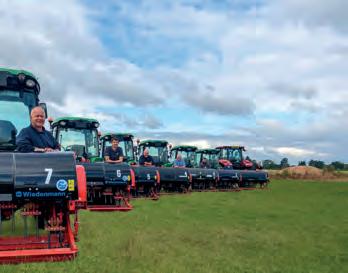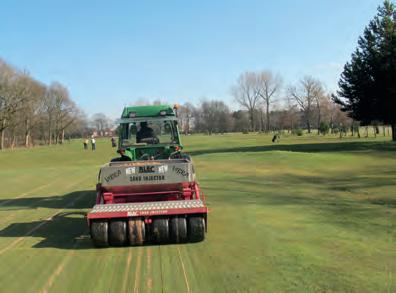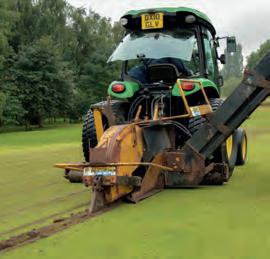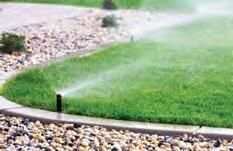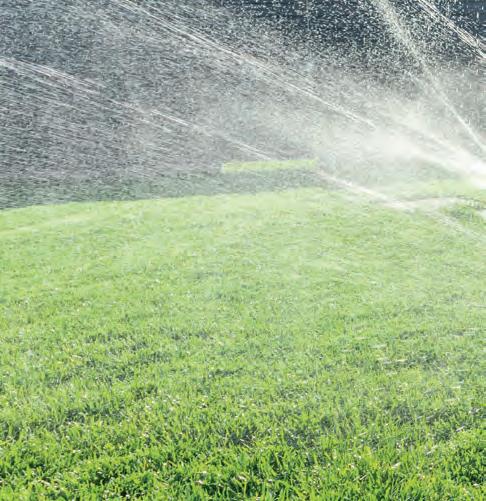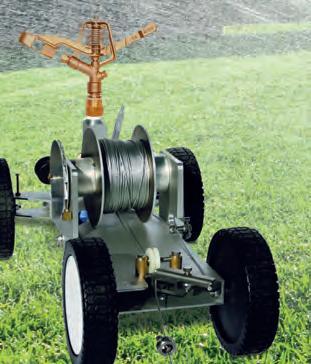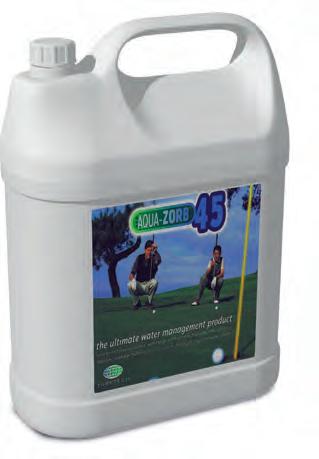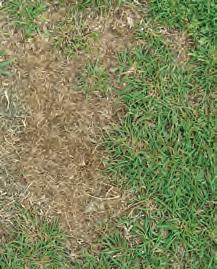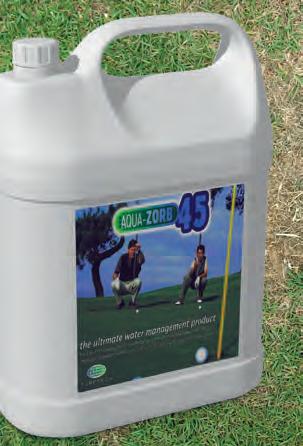PITCHCARE



MANAGING POA ANNUA CAN BE A MAJOR CONCERN FOR TURF PROFESSIONALS DUE TO ITS OPPORTUNISTIC NATURE, SHALLOW ROOTING SYSTEM, SUSCEPTIBILITY TO DISEASE AND ENVIRONMENTAL STRESS. WE EXPLORE HOW TO MANAGE IT…
Shropshire to Almeria: An extreme change of environments
TALKING TURF: ADDRESSING THE SKILLS SHORTAGE
Volunteering at tournaments: A chance to gain insider experience




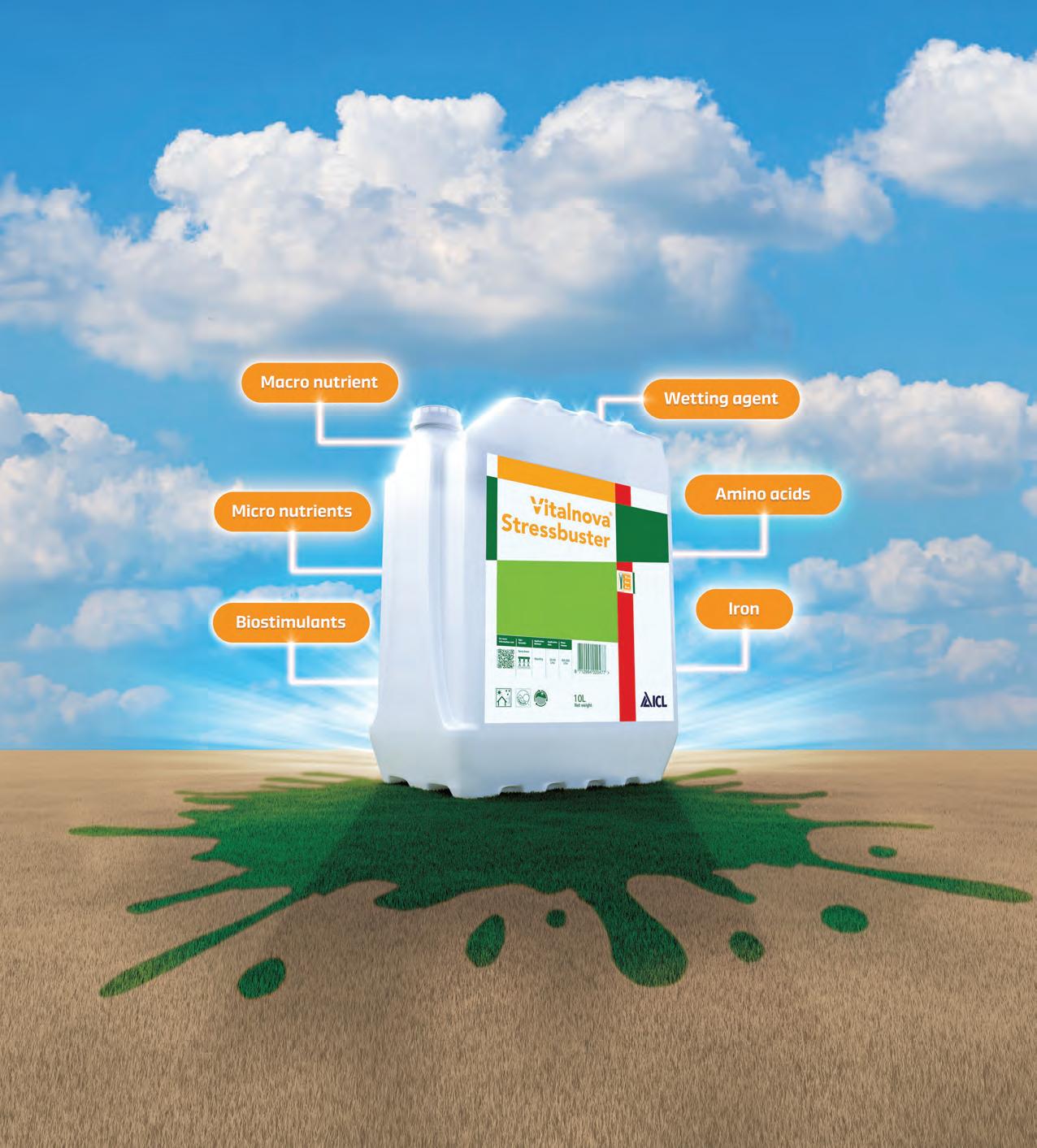






www.icl-growingsolutions.uk | www.icl-growingsolutions.ie Researched, formulated and produced in house by ICL



Editor Kerry Haywood

Turf professionals are increasingly expected to balance playability, aesthetic standards, and environmental responsibility under increasingly volatile summer conditions.
By mid-May, it was declared that we had experienced the driest spring on record in over 100 years. A drought status in multiple areas has meant a really tough summer so far for many turf managers. Adaptability, data-driven decision-making, and sustainable practices are essential.
With that in mind, understanding jet streams, high and low-pressure systems, and how they impact rainfall, light levels, wind, and ultimately grass growth can only help achieve top-quality playing surfaces. Our expert Mark Hunt explains all on page 24.
The recent high plant-stress conditions can also be a precursor for disease development and outbreaks - therefore, understanding summer disease risk is essential. Our feature on page 30 puts three key summer diseases in the spotlight: Pythium Blight, Grey Leaf Spot and Brown Patch.
As you face the challenges of a variable climate, water is firmly in the spotlight. Our top tips feature (page 22) discusses how effective irrigation is arguably the most critical component of a successful drought management strategy.
Another part of that strategy is understanding the unique traits, strengths, and weaknesses of Poa annua. From seed selection and establishment techniques to maintenance practices including mowing, fertilising, irrigation, and disease management - an integrated management plan is key to reducing negative impacts from Poa annua and achieving optimal turf performance. We explore how to manage it from page 8.
As above-average temperatures are expected to continue throughout July and August, communication with golfers, players, coaches, board members, and others will be essential for helping them understand the daily challenges you face. From a health and safety aspect, it’s important to prioritise wellbeing and to ensure regular team breaks
Stay hydrated!
Kerry
t: 07973 394037
e: kerry.haywood@pitchcare.com








No part of this publication may be reproduced without prior permission of the publisher. All rights reserved. Views expressed in this publication are not necessarily those of the publisher. Editorial contributions are published entirely at the editor’s discretion and may be shortened if space is limited. Pitchcare make every effort to ensure the accuracy of the contents but accepts no liability for its consequences. Images are presumed copyright of the author or Pitchcare, unless otherwise stated.
Printed by Buxton Press Advertising TSP Media t: 01952 234000 Allscott Park, Allscott, Telford. Shropshire TF6 5DY t: 01902 440270
Managing


With increasingly tight establishment deadlines, the margin for error is smaller than ever.
The
A
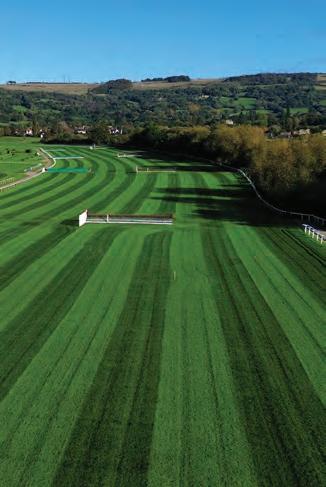

One of the world’s oldest rugby clubs is pioneering technology to streamline its groundcare.


• HIGH SEED PURITY

• NEW 2025 FORMULATION BLENDS FOUR TOP-RATED PERENNIAL RYEGRASS CULTIVARS
• OUTSTANDING QUALITY ACROSS ALL CRICKET PLAYING AREAS
• EXCEPTIONAL DISEASE RESISTANCE, YEAR-ROUND COLOUR AND RECOVERY
• PRONITRO COATED OPTION AVAILABLE
• GROMAX COATED FOR IMPROVED ESTABLISHMENT




J Premier Wicket delivers proven results at the highest level – rapid establishment, high disease resistance and camera appeal can be expected as standard.

The Sports Turf apprenticeship trailblazer group are pleased to announce that a new Level 5 apprenticeship, with integrated Foundation Degree (FdSc), has been published subject to funding band approval.
The new Level 5 apprenticeship will be titled Sports Turf Technical Manager with delivery proposed for late 2025 or early 2026. The integration of the Foundation Degree in Sports Turf provides a high-quality vehicle for learning and allows the apprentice to achieve an industry leading degree level qualification as part of their apprenticeship.
As the professional body for grounds management, the Grounds Management Association (GMA) has recently issued a formal letter of recognition to the Institute for Apprenticeships and Technical Education (IFATE) confirming that the qualifications are a suggested requirement for professional recognition at a range of levels of membership across our broad industry.
The sports turf trailblazer view this as a potentially game changing educational development for the Sports Turf Industry, offering a funded educational pathway from
initial entry into the industry, to degree level.
The apprenticeship also aligns directly with the Grounds Management Framework, which brings together a range of training and education opportunities provided by both the GMA and other providers, including apprenticeship providers, to ensure a clear and coherent career pathway for those working, or wishing to work, in sports turf maintenance and management. Employers are encouraged to check the funding rules for more information and eligibility, but apprenticeship levy payers will receive funds up to the funding band maximum, whilst non-levy payers contribute just 5% towards the cost of training. The funding of the government backed sports turf apprenticeships removes the primary barriers faced by apprentices and employers which in turn should increase uptake of apprenticeships and drive professionalisation at all levels within the industry.
Expressions of interest for the new L5 Sports Turf Technical Manager are welcome here: https://forms. office.com/e/edTeaZfv3E
Howardson Group, home to market leading brands Dennis Mowers, Hunter Grinders, and SISIS Machinery, officially opened its new purpose-built facility, marking a significant milestone in the company’s continued growth and investment.
The new building, located on the original Howardson site in Ashbourne, Derbyshire, will serve as a central hub for office space, warehousing, and cutting-edge training facilities, further solidifying Howardson’s commitment to training, education and customer support within the sector.
“This new building represents a pivotal moment for the Howardson Group,” stated Megan Oliver, Managing Director. “We are confident that this investment will futureproof our business for years to come, enabling us to continue leading the way in the industry.”
It is a tangible demonstration of our unwavering commitment to continued investment in infrastructure, equipment, and new products.
Megan Oliver, Managing Director
BIGGA and Toro Reesink UK announce contenders for the prestigious awards, celebrating the brightest talents in golf turf management.
BIGGA and co-founders and sponsors Toro and Reesink UK have revealed the line-up for the 2025 Toro Student Greenkeeper of the Year Awards. Now in its 36th year, the awards have helped unearth some of the brightest talents within the turf management industry and laid the foundations for decades of professional success.
Held at Rudding Park in Harrogate on 9-11 September, the finalists will compete in a series of challenges that are designed to test their technical knowledge and passion for the greenkeeping profession. Winners will then be crowned in the categories of Toro Student Greenkeeper of the Year and Toro Young Student Greenkeeper of the Year.

A list of the finalists and more informtion can be found on the BIGGA website, where you can also find information about the incredible prizes on offer for the awards winners and their endorsers and the runners-up in each category, including a 10-week placement on one of the industry’s most influential training courses.
Visit bigga.org.uk


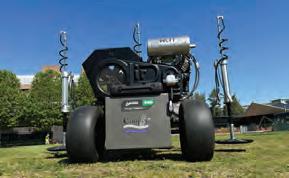
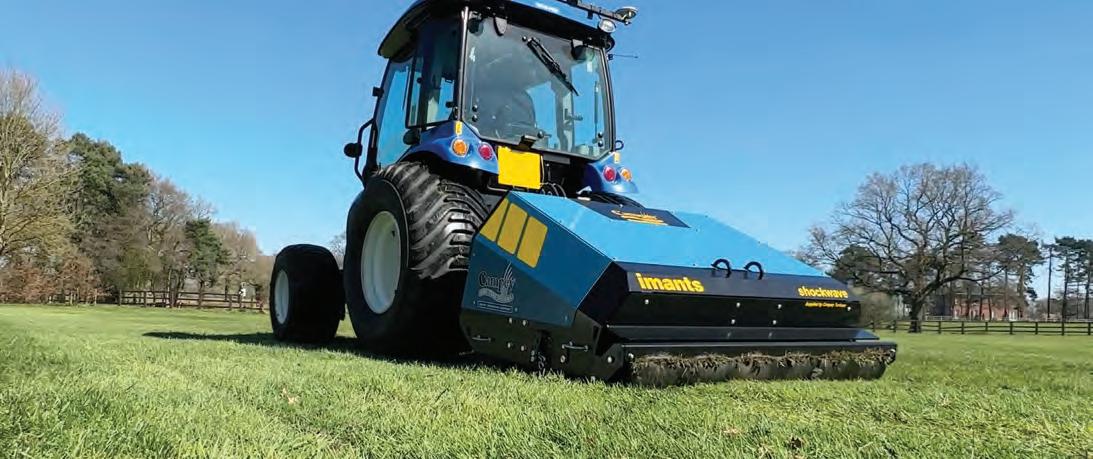

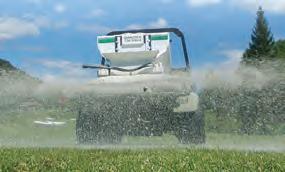

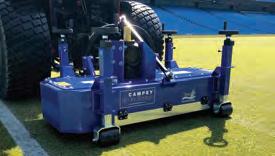

Online training helps amenity professionals deliver on
The UK National Action Plan (NAP) for the sustainable use of plant protection products calls on everyone involved in weed, pest, and disease control to adopt integrated management strategies and develop plans often referred to as IPM plans.
Whilst still not a requirement, it is at the core of the NAP and the sector needs to fully understand what IPM is and how to develop and implement IPM plans.
To support this, BASIS offers a dedicated course providing practical, easy-to-access online training tailored specifically for the amenity sector. The course entitled ‘Planning IntegratedApproachesinAmenity Situations’ guides users step-by-step through developing and implementing effective, environmentally responsible management plans.
This course is part of a set of five within the PrinciplesofSustainableAmenity Management series, created with input from industry experts including former Amenity Forum Chair John Moverley.

GroundsFest 2025 is revving things up with one of its boldest and most exhilarating attractions yet - Lawn mower racing and the inaugural GroundsFest Cup.
Taking place across both days of the event, this professionally run spectacle promises edge-ofyour-seat action, heart-pounding excitement, and a whole lot of fun.
This is no gentle ride around the garden. These are specially modified racing mowers, stripped of their blades but supercharged with adrenaline, skill, and competitive spirit. Expect high speeds, roaring engines, tight turns, and a field of elite riders battling it out on a custom-built track in front of a live crowd.


The full series covers key topics such as navigating policy, enhancing biodiversity, and managing water and air quality in amenity environments.
Designed for busy professionals, the courses are interactive and self-paced, allowing learners to fit training around their work. Real-life case studies and expert insights ensure the knowledge gained can be applied immediately on site. Whether you work for a local authority, manage grounds, consult on environmental issues, or contract on site, this training is relevant and accessible, with no prior qualifications required.
Each course costs £50, or the full five-part series is available for £200 + VAT, providing great value for anyone committed to sustainable amenity management.
More information and enrolment is through the link: basis-classroom. co.uk/courses/amenity

Organised by the West Midlands Lawn Mower Racing Association, some of the UK’s most experienced lawn mower racers will be competing for glory and the honour of becoming the first ever winner of The GroundsFest Cup. It’s fast. It’s furious. It’s fiercely competitive – but above all, it’s seriously good fun.
Who will take the chequered flag on 9th and 10th September at Stoneleigh Park, Warwickshire? Register for your FREE tickets at groundsfest.com






















































































































































Managing Poa annua can be a major concern for turf professionals due to its opportunistic nature, shallow rooting system, susceptibility to disease and environmental stress. We take a deep dive into what poa is and how to manage it…
UNDERSTANDING POA

Understanding the unique traits, strengths and weaknesses of Poa annua is essential for effective management of turf surfaces. From seed selection and establishment techniques to maintenance practices including mowing, fertilising, irrigation, and disease management, an integrated management plan is key to reducing negative impacts from Poa annua and achieving optimal turf performance.
Poa annua is a globally widespread grass species, recognised in the Global Compendium of Weeds due to its opportunistic and adaptable nature. It’s ability to adapt means it has established in a wide range of environments, from coastal regions to elevations in excess of 1,000 m and in climate zones spanning from the tropics to the poles. The persistence of Poa annua in turf surfaces is due to its highly adaptable nature which sees it

thriving in a range of soil conditions and tolerating frequent mowing, foot traffic and even freezing temperatures.
Considered a contaminant in grass seed production, Poa annua seeds can be difficult to separate from desirable turfgrass species. With individual plants capable of producing large amounts of seed (1000- 2000+ seeds per plant) throughout the growing season, the risk of spread into new areas is high.
Poa annua prioritises reproduction through seed production with the result being that the roots tend to be relatively small. This means that conditions, uses, or management of turf surfaces that promote bare soil can lead to the introduction of Poa annua due to reduced competition from other turf species. Conversely, practices that promote deep rooting and a dense sward reduce the competitive ability of Poa annua
Sources:https://www.cabidigitallibrary.org/doi/full/10.1079/cabicompendium.42485
Managing poa requires multiple practices; mowing, irrigation, fertilising, aeration and disease prevention

Whilst complete eradication is unrealistic in many amenity turf settings, consistent suppression and favouring of desirable species can keep poa populations under control and turf quality high.
● Overseed with the desired perennial species
● Apply Plant Growth Regulators
● Apply a balanced spring feed
● Light scarification
● Rolling: Consolidate surface while conditions allow
● Deep and infrequent irrigation
● Selective weed management
● Soil moisture monitoring
● Verticutting or grooming
● Surface hardness testing
● Aggressive overseeding
● Hollow coring or linear aeration
● Topdressing
● Fungicide (if needed)
● Limit traffic when wet
● Monitor for disease
● Manage surface moisture


Tom Wood Technical Specialist
B.Sc (Hons) | BASIS | FACTS.
Managing Poa annua requires a nuanced approach that combines multiple practices such as mowing, irrigation,
fertilising, aeration and disease prevention.
If Poa annua is the enemy your friends are the perennial grassess, ryegrass for sportsturf or bent and fescue for fineturf and the ‘enemy’ being annual meadowgrass.
Poa annua is demanding and requires careful management, if done well it can produce reasonably acceptable surfaces in the fineturf setting in the short term, however it’s what’s required to meet those demands in terms of inputs and resources that make it the less sustainable choice.
It’s weak nature and prolific seeding makes it unacceptable in the sportsturf environment where ryegrass is the leading species. With a strategic and integrated approach, the goal is to be in a position where the dominance of this highly opportunistic and adaptable grass can be reduced significantly.
1. Cultural methods
● Aeration: Regular aeration and topdressing improve soil structure and drainage, reducing the favourable conditions Poa annua thrives in.
● Mowing practices: Maintaining consistent mowing heights that are appropriate to your turf species. Avoiding scalping, which encourages poa ingress. Additionally, grooming and brushing can help manage seedheads.
● Irrigation: Avoiding overwatering, by utilising deep and infrequent irrigation which encourages deep rooting of the desirable grasses.

● Nutrition: Maintain optimum plant health with a balanced fertiliser programme which acts to discourage any poa dominance. Nutrient inputs should be based on soil testing, avoid excess nitrogen and phosphorous which promote rapid poa growth.
● Overseeding: Regular overseeding with high quality cultivars of desirable species (e.g. bents, fescue and perennial ryegrass) helps compete against Poa annua
2. Chemical Control methods
● Plant Growth Regulators (PGRs): Products like trinexapac-ethyl and Prohexadionecalcium regulate plant growth, reducing clipping yield and produces a dense sward which reduces Poa annua ingress. Prohexadione-calcium applied ahead of seedhead emergence can reduce flowering and the number of new seeds, lowering the next generation seedbank.

3. Environmental methods
● Encourage soil microbial activity: Diverse microbial life enhances soil health and the interactions with the perennial grass species, indirectly reducing poa competitiveness.
● Light management/airflow: Improve light availability and airflow by removing trees, reducing shade and encouraging drier conditions and less disease incidencewhich discourages Poa annua and supports perennial species thriving.
While complete eradication of Poa annua is unrealistic, sustained reduction is achievable through integrated turf management practices. A combination of cultural, chemical and environmental strategies, tailored to your site’s needs, will reduce poa populations and improve playing surface quality. Forward planning that is well communicated and consistent, with data-driven decision-making, is key to achieving long-term success.






Ph.D. Professor and Turfgrass
Specialist

in Cooperative Extension Department of Botany and Plant Sciences University of California, Riverside.
How does poa differ to other grasses used in the USA? James H. Baird, Ph.D. Professor and Turfgrass Specialist reports.
In terms of poa management, describe it from a global view of solutions and practices
Annual bluegrass (Poa annua) is the most ubiquitous turfgrass species in the world. Often managed as a turf by default, due to widespread distribution in climates represented by California, annual bluegrass is also one of, if not the world’s most serious turfgrass weeds - in part because it is extremely susceptible to most biotic and abiotic stresses, often resulting in sudden death. Thus, more pesticides are used on annual bluegrass to eradicate or help keep it alive than any other turfgrass species. If the turfgrass industry had both an effective and selective means of maintaining poa-free turf, then far fewer pesticides would be needed
for managing turfgrasses, especially on putting greens. Currently, few herbicides are registered for pre and postemergence control of annual bluegrass in creeping bentgrass (Agrostis stolonifera) putting greens in the United States. Both cumyluron and PoaCure offer great hope for poa management on putting greens and other turf surfaces.
We have not observed significant reduction in poa with bensulide herbicide. Both Cumyluron and PoaCure are complementary to one another in that they possess different modes of action and strengths (one is stronger preemergence while the other is stronger postemergence), which can ultimately prevent or at least delay development of herbicide resistance if used properly and in rotations.
Tell us about Cumyluron and its presence in the global sphere including the USA and how it is being used as an approved solution in amenity situations?
Cumyluron is a urea herbicide under development in the United States by Marubeni Corporation, Tokyo, Japan and their subsidiary, Helena Chemical Company, Tennessee. Environmental Protection Agency (EPA) registration is anticipated in 2026/2027.
Cumyluron has mostly selective preemergence, but also postemergence activity, against annual bluegrass and other weedy grass species in creeping bentgrass and most other major cool and warm-season turfgrass species.

What sets Cumyluron apart from almost all other poa herbicides, is its safety for use on putting greens. Only methiozolin (PoaCure) and bensulide (Bensumec) are currently registered in the U.S. for poa control in bentgrass greens.
In addition, only two applications of Cumyluron are needed per calendar year - with at least one application in the autumn for optimal poa control.
Other than that, timing of Cumyluron
is also one of, if not the world’s most serious
application is not that critical, given that it has both post and preemergence activity. UC Riverside has been conducting research with Cumyluron off and on since 2010. Our research has demonstrated that Cumyluron can maintain or restore putting greens to 100% bentgrass within 2-3 years of semi-annual applications on putting greens containing <20% poa populations. In another study on a green with ca. 60% poa, Cumyluron reduced poa populations by about one-half following two years of applications.
My viewpoint of poa management in the U.S. vs. elsewhere is largely based on climatic conditions and golf industry/golfer expectations. Poa has more difficulty surviving in regions with weather extremes; too hot, cold, wet, dry, humid, etc. Couple this with high or unreasonable expectations from golfers, or often from members of the golf turf industry trying to outdo one another.
Poa, especially perennial biotypes, can provide ideal playing surfaces UNTIL the combination of weather and unrealistic expectations cause sudden and rapid loss of turf. Although climate change is affecting the entire world and it’s getting hotter in places like the UK, my impression is that golfers and greenkeepers alike in the UK are more realistic in terms of turf management and the golfing experience. Greens do not have to be lightning fast to enjoy the game or risk loss of poa, so perhaps there isn’t as much of a need to rid poa on greens and other surfaces with herbicides.
*PLEASE NOTE-SomeoftheproductsmentionedwithinthissectionarenotUKbased. Theyaren’tyetintheUKmarketandarecurrentlybeingtrialledandregisteredintheUS.
Kiel, the Head Groundskeeper at Leeds United, recently detailed a significant turf issue that arose during the past season - a rare and widespread outbreak of Poa annua on stadium pitch.
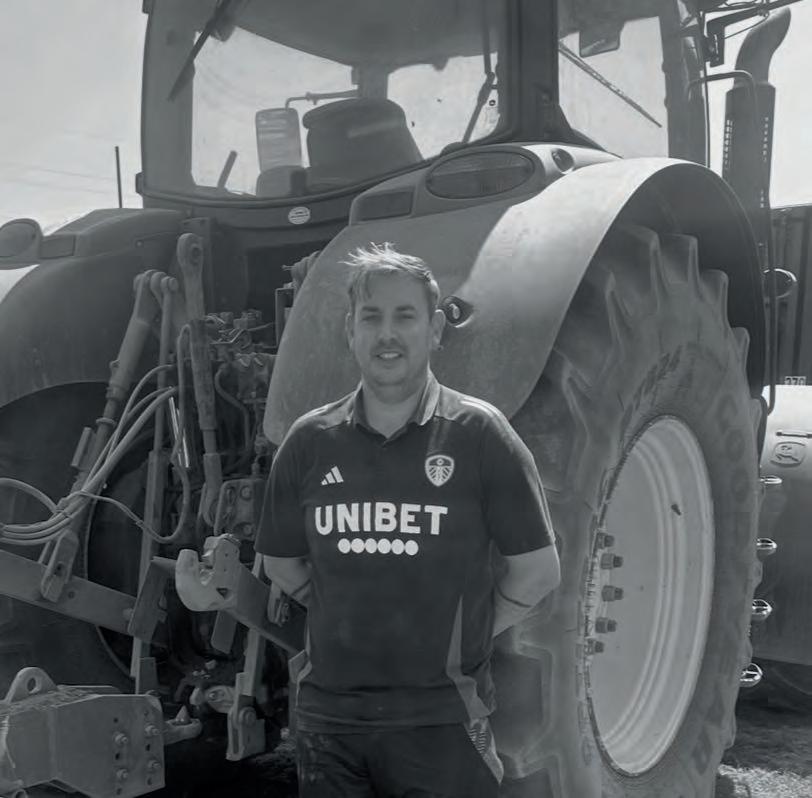
iel said. “This season, we had to tackle a larger outbreak of Poa annua within the stadium than we have previously seen. Given the even coverage across the pitch, I suspect it may have been due to contamination
is not unusual at the club’s training ground, which is located near open farmland, its appearance at the stadium is far less common. Kiel emphasized the importance of maintaining turf quality at Leeds United, noting the stark difference between the two sites.
“The training ground will always have outbreaks because of its rural location. But at the stadium, it matters more - that’s where the matches are played, week in, week out, in front of 37,890 fans, thousands more on TV, plus highlight clips on social media. If you have a Poa annua outbreak, you can clearly see it.”
One of the main issues with Poa annua is its unsightly appearance compared to Perennial Ryegrass, which is typically used on elite football pitches.
“Aesthetically, it is an unwanted visual in a somewhat perfect Perennial Ryegrass sward. The lighter yellowish colour takes away from the shiny, deep green leaf of the ryegrass. It impacts the uniformity of colour within the mowing stripes. Once the Poa annua plant becomes established, there is little that can be done - you can’t get away from it.”
Beyond aesthetics, Poa annua can also affect playing performance and safety. Kiel reported

FIFA’s pitch rating tests assess various elements such as surface traction, ball roll, and uniformity. Despite the outbreak, the pitch retained a high-quality rating, reflecting the grounds team’s effective maintenance efforts.
Kiel and his team implemented a range of targeted measures to manage and suppress the outbreak. The timing of interventions was critical, depending on the seasonal conditions. Kiel commented: “I suspect that Poa annua was in the seed mix - that’s why we saw even coverage across the entire pitch.”
“We went back to basics. We carried out a light rake on the surface to keep it clean, then verticut it to try and remove as much Poa annua seed head as possible. After that, we continued with regular overseeding using Perennial Ryegrass.”
They also reinforced internal procedures to reduce the risk of cross-contamination between sites.
“Due to the closed-off nature of the stadium at Leeds United, we’re extremely cautious when sharing equipment between the training ground and the stadium. Everything is cleaned thoroughly to avoid introducing Poa annua spores from one site to the other.”

When it comes to selecting seed for a top-level football pitch, many assume that most seed mixes on the market are more or less the same. However, according to Kiel, one key factor sets the best apart from the rest; seed cleanliness.
“Most of the seed mixes on the market are similar,” Kiel explained. “For me, it’s about the cleanness of the mix. That’s the real differentiator.”
Whilst seed from different suppliers may have varying coatings and hard seed compositions, Kiel emphasises that the true marker of quality is how clean and pure the mix is.
“I would advise grounds staff to visit a seed factory in person. It’s essential to see the process up close - how the seed is handled, processed and cleaned. You need to make sure the mix meets the highest purity standards before selecting it for your pitch.”
For Kiel, this means using only seed that meetsand often exceeds - the Higher Voluntary Standard (H.V.S.) of 98% purity. This is significantly higher than the EU minimum requirement of 96%.
“Even a 2% difference might not sound like much, but it’s actually huge. A 2% impurity equates to one 20kg bag per tonne that could be made up of chaff, debris, or undesirable species like Poa annua.”
Clean seed is more than a preference - it’s a professional standard. Contaminants such as Poa annua not only affect the visual quality of a playing surface, but can also compromise safety and performance - especially at elite levels of competition.
Kiel’s meticulous attention to seed selection reflects a broader commitment to excellence in pitch care - one that ensures Leeds United’s playing surface performs under pressure - both on the pitch and in front of thousands of fans and viewers worldwide.


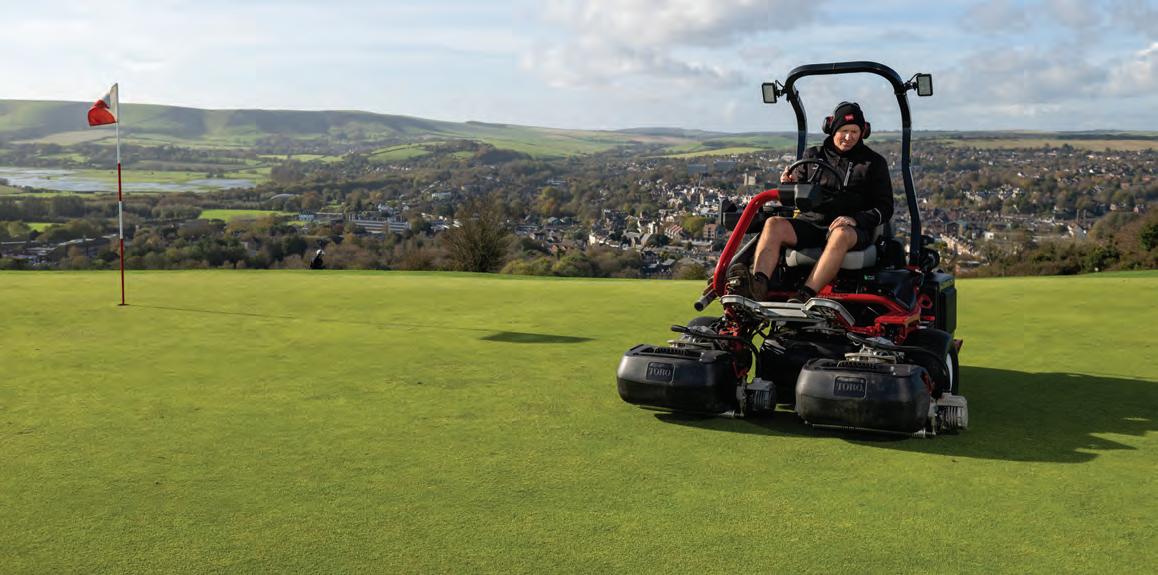
Reimagining turfcare, together. Get

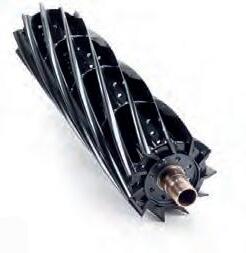

Every
reesinkturfcare.co.uk


In an ideal world, Poa annua would not exist on golf courses, at least, that is the viewpoint of Tom Hayward, Course Manager at Bath Golf Club.
“Even top-end golf courses in the UK, with great greens, correct drainage, and good airflow, struggle to keep out poa. The main reason you don’t want poa on the course is the requirements; it’s a very needy grass. It requires more irrigation, so you’re using more water. And with poa being more prone to disease outbreaks, it requires fungicides which are not as strong as they once were due to chemical restrictions.”
Tom outlined the biggest challenge they face with poa at Bath Golf Club: “The greens are all slightly different. We have some that are 30% poa and others that are 60 to 70%. We’re seeing colder and drier starts to the year compared to fifteen years ago. The colder start means the soil temperature doesn’t rise quickly, so the poa doesn’t grow. Your bent grass then dominates at 5 millimetres, while the poa sits at 3 millimetres. That’s good from an agronomic point of view, but it’s a nightmare for course management because your greens run at different speeds and look inconsistent.”
Managing poa grasses is a constant balancing act: “Typically, the wetter the green, the more poa you have; the more shaded the green, the more poa you’ll have; and the less air flow, the more poa there’ll be. That’s because it naturally thrives in those areas. There isn’t a lot you can

The challenge is looking after the poa, but not too much. The members want good greens, and they don’t care what grass it is. You have to explain that fescue and bent are much better long-term options.”
Tom described how he has tackled poa on his greens: “Our main objective is to create an environment which will discourage poa; by reducing our organic matter levels. We used to be at 8% in the top 20mm and now we’re as low as 5%. We’ve achieved this by regular coring and topdressing as well as annual Topchanger work which injects sand into the profile.”
“Managing moisture levels is crucial. We avoid over using the sprinkler system and hand water the areas which dry out faster. One of the biggest changes to my management has been the implementation of Plant Growth Regulators on our greens and we’re currently using Attraxor and, occasionally, Primo Maxx II from Agrovista Amenity. I play around with the rates depending on climate conditions and plant stress. Finally, preventing shade from trees and allowing natural airflow and light is crucial. We’ve done a fair amount of tree clearance and the results have been instantly noticeable.



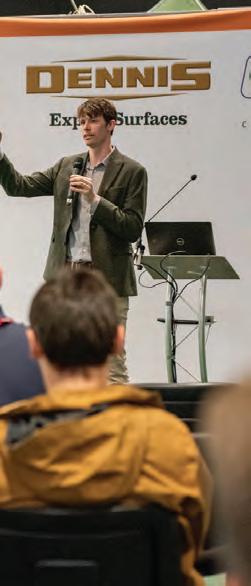
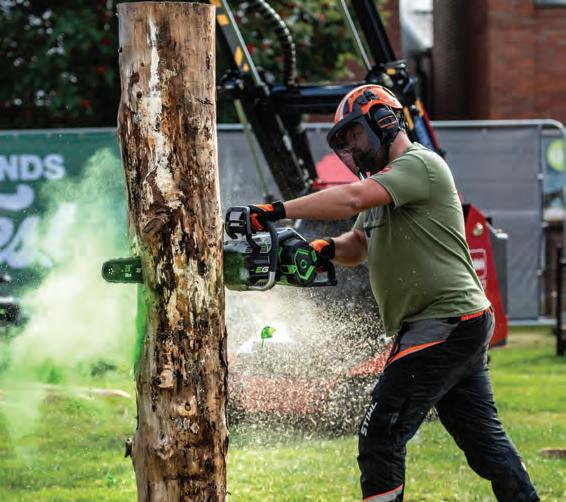









































at Worksop Golf Club
James Kimmings sat down with Head Greenkeeper Sam Wardill at Worksop Golf Club to discuss the difficulty of implementing sustainability projects while also managing members’ expectations.
Sam recently completed a gorse management project, which left some members asking why.
“We had gorse that was about 14 feet high, and it was encroaching on a large part of the 10th hole tee. Golfers were only using the right-hand side of the tee because it was impossible to see the green. We took it right down to the stump with the aim of maintaining it at a height and width that doesn’t interfere with play.”
“As with everything, some members loved it and some weren’t as keen. It’s a balancing act to keep the golfers happy whilst also promoting sustainability. Previously, we could only use one
side of that area, and the tee shot was going straight into the gorse, but now, we can maintain the area as we want.”
“From an agronomic point of view, it has allowed us to use the whole tee, which spreads out the wear. It has also opened up the view down towards the green, so aesthetically, that hole looks a lot more inviting.”
“It can look brutal when you first take gorse down to the stump, but members need to understand that it regenerates - and in a year’s time, you won’t notice.”
Last year, Sam and his team completed a small heather scrape aimed at regeneration. He offered some advice on how to do it effectively:
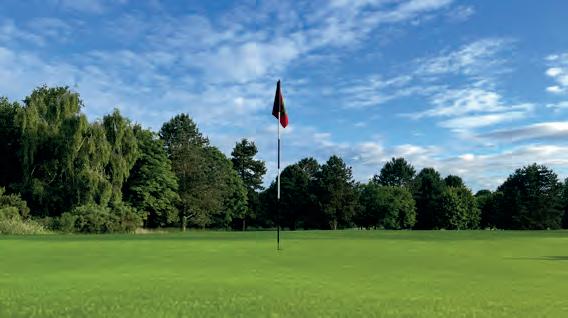

“Historically, the area was always heather, but over the years it was lost due to the planting of cherry trees and other species. We did a small trial site; the seed was already in the groundwe just needed to expose it and give it a chance. Seeing the results from that, we extended the scrape area and applied brash to speed up the growing process.”
“It’s a slow burner. I understand why golfers don’t like the sight of it - it’s exposed ground. But in the long term, we’re making the best of the natural plant.”
Communication has been key when it comes to managing member expectations: “You can use social media, reports and presentations. If members know what you’re doing and what the long-term plan is, they give you more leeway. If they turn up in the sunshine and three holes are shut, naturally they aren’t incredibly pleased. But if you sent out information about the work three weeks prior, you might get more freedom.”
Historically, golf courses have had a poor reputation in environmental circles due to the use of machinery and chemicals. Sam pointed to a shift in attitudes: “Years ago, golf courses used a lot more fungicides and pesticides, which obviously didn’t help environmentally. However, everything is strictly monitored now and greenkeepers are much more aware.”
“As an industry, we’re trying to support the environment. It’s our responsibility to promote sustainability projects. We have a lot of natural gorse on the course, and we want to promote


its growth as a natural hazard. We also want to maintain wild areas to attract moths and bees. There used to be a lot more gorse and broom, and we’re trying to bring that back.”
Sam also looks beyond just golf when it comes to course management: “You want interest on every hole. Growing out the rough areas and the gorse allows for visual and strategic interest. If
you go into it, you’re struggling - but it gives you another element and adds colour to the course.”
When starting sustainability projects, it’s always helpful to speak to organisations that can offer funding and advice. Sam explained: “We work closely with the Sherwood Trust. They’re local to us and focus heavily on heathland regeneration. Between the Sherwood Trust
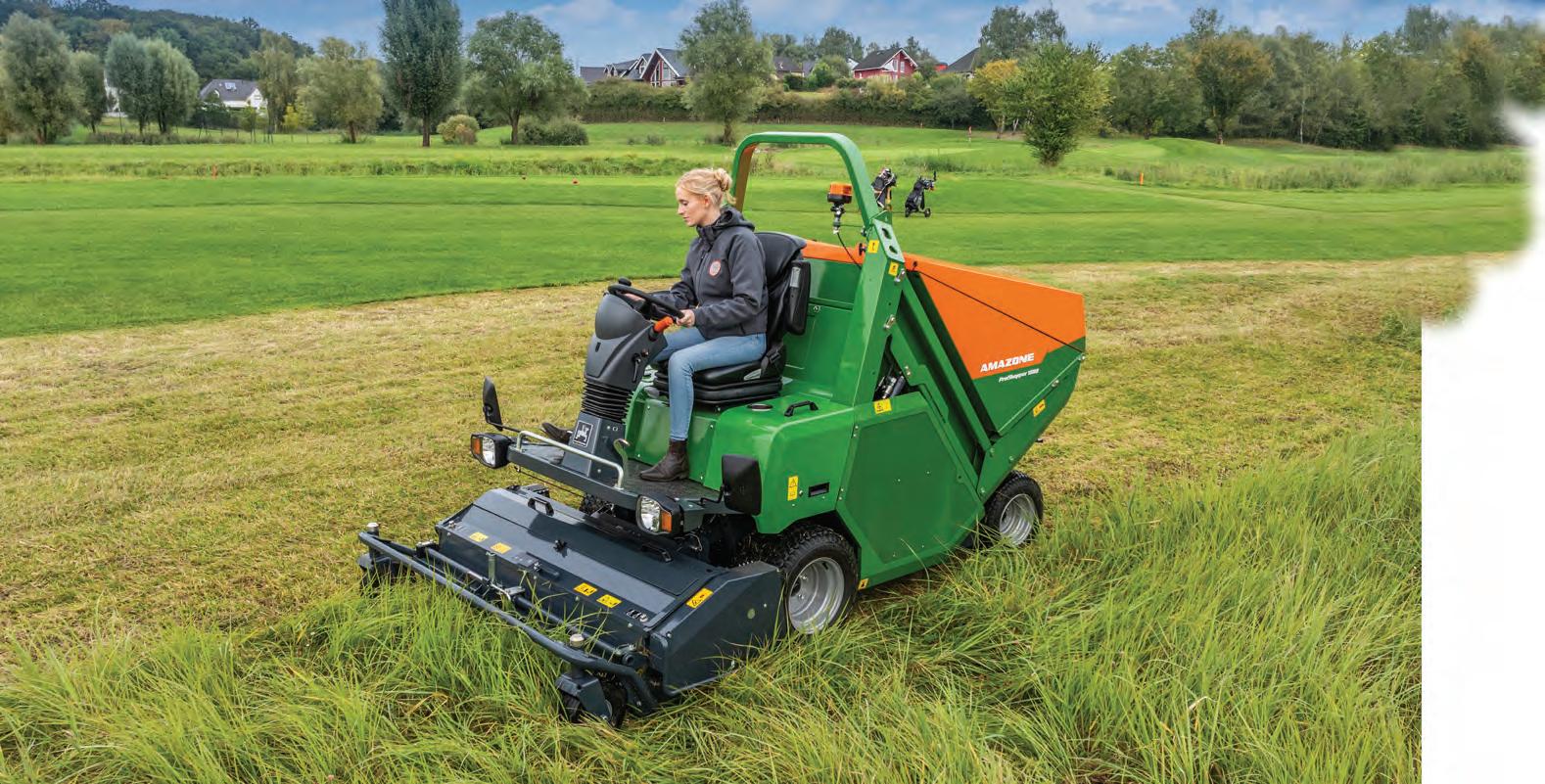





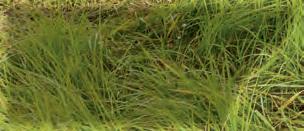










and The Fairways Foundation, we’ve received funding for a heather nursery at the top of our practice ground. The long-term plan is to grow on site and then use the plants throughout the course when needed. It isn’t an arduous process - just speak to the right people and fill in a few forms.”

The course has seen several changes over the years, and trees have always been a hot topic. Sam outlined the pros and cons of tree planting.
to remove a tree that’s blocking sunlight rather than overspend on products. I suppose it eliminates the cause rather than dealing with the effect.”
“They give you definition between holes and an element of protection. Members seem to like fairways bordered by trees. From an environmental point of view, there are benefits - trees bring more wildlife to the course by providing places for birds to stop off. However, planting non-indigenous trees can negate some of those benefits. We have a lot of Silver Birch and various European pine species, which don’t belong in this environment.”
“You have issues with shading, which we all know can cause problems. From a budgeting perspective, it might be cheaper
Sam summarised a brief history of tree planting at Worksop: “In the ’70s and ’80s, the club went through a phase of planting a lot of trees. They’ve never been thinned or maintained.”
“We’ve recently started to thin out many areas to promote sunlight onto greens. We also have roots growing underneath the greens, which causes moisture loss.”
We’re having to apply more product to counter that. If your greens sit in shade for most of the day, you’re fighting a losing battle when it comes to disease.”



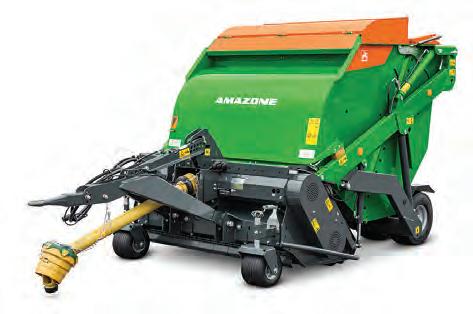

By James Matthewman, Deputy Head Greenkeeper at Maesteg Golf Club.
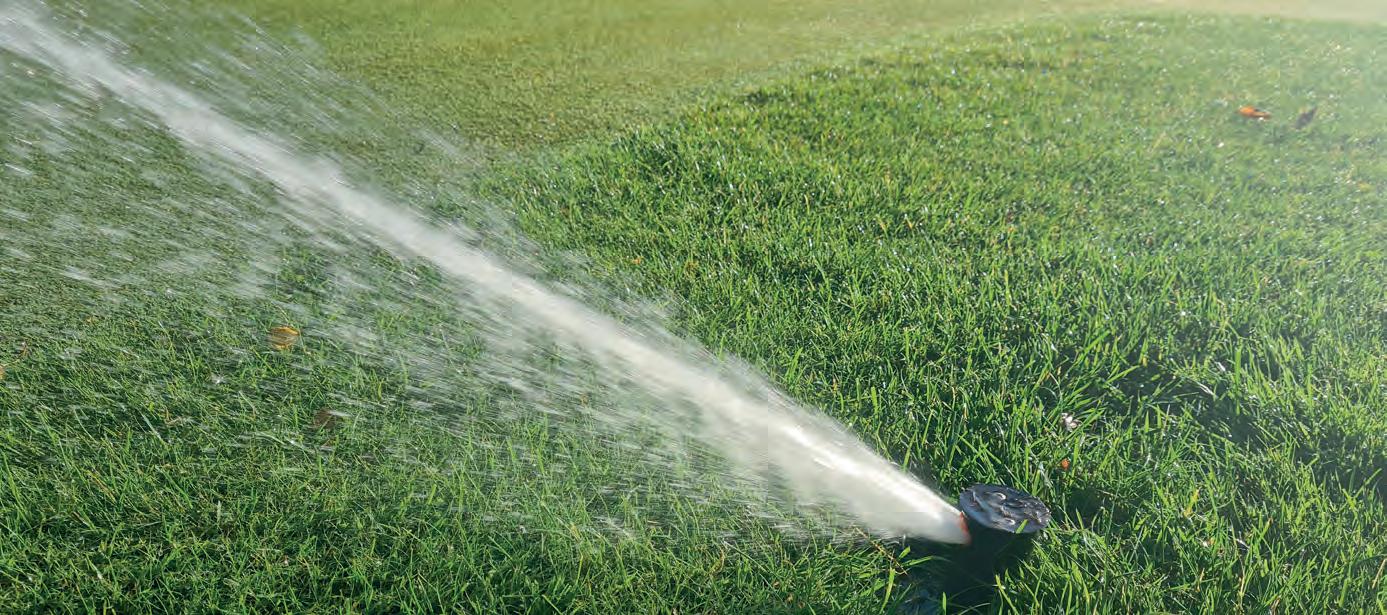
Effective irrigation is arguably the most critical component of a successful drought management strategy. Water is indispensable for maintaining plant physiological function, especially under water-stressed conditions.
Before deployment, it’s crucial to conduct a thorough irrigation system audit. This diagnostic process confirms proper system pressure, verifies nozzle output consistency, and ensures the correct angular trajectory (arc) of each sprinkler. Such meticulous verification guarantees uniform water distribution across the playing surface. Remember, the primary objective of supplemental irrigation is plant survivability - not inducing soil saturation, which could compromise surface integrity.
During periods of high temperatures and intense solar radiation, raising the height of cut is a highly effective strategy. Mowing turf too short under such stressful conditions significantly harms the grass’ health. A low cut can quickly cause the grass to dry out and the leaf tissue to die. By increasing the mowing height, you promote a larger leaf surface area and stronger root development. This helps the plant perform better in photosynthesis, water absorption and overall resilience against challenging environmental factors.

More precisely termed soil surfactants, wetting agents are an exceptionally valuable resource for drought mitigation. During prolonged periods of desiccation, soil can develop hydrophobicity - a condition characterised by water repellency. This leads to reduced infiltration rates and increased surface runoff,
rather than optimal absorption. The strategic application of an appropriate wetting agent significantly enhances the soil’s moisture retention capacity and improves water penetration throughout the soil profile.

Effective communication with stakeholders is paramount during periods of environmental stress such as drought. It’s essential to establish continuous dialogue with both management and members. This involves not only sharing critical information about the impacts of prolonged water scarcity on turf health but also providing education on the strategies and contingency plans being implemented. The goal is to demonstrate proactive measures taken to maintain turf viability. Fostering a supportive and patient atmosphere among members is essential to navigating these challenging conditions.



Spring 2025 vs. 2024 couldn’t have been more different from a turfgrass maintenance perspective. The former, wet, cold and dull, the latter, bright, warm and very dry.
Why the big difference?
Well, it is all down to the position, speed and shape of the jet stream.
Last year, the jet stream flowed strongly and sat south of the U.K. That combination allowed low pressure system after low pressure system to push in from The Atlantic
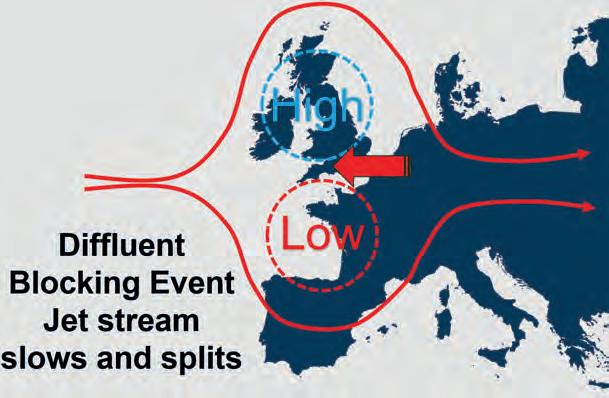
and provide one of our wettest, coolest, dullest springs ever.
This year, we have seen a slow-moving jet stream, which split into two and formed into a so-called ‘Diffluent blocking event’, pushing rain north and south of the U.K & Ireland and providing us with a very dry scenario from late March.
With the wind funnelling between the ‘stuck’ high and low pressure systems, the dominant direction was easterly/north easterly. Winds from the east tend to be drier and this year we also received much higher light levels to boot. That makes sense because more unsettled weather means more cloud and therefore less direct sunlight. The flipside of this coin is that brighter, clearer days means clearer night skies and consequently lower air temperatures and more frosts.
Data from our Davis weather stations showed 25% more plant-available radiation in Spring 2025 vs. 2024, but with clearer skies, average overnight temperatures were 2°C lower. Although it was cooler at night, the main issue with growth this spring was lack of moisture, particularly on un-irrigated outfields.
Let’s look at the two spring seasons from a rainfall and evapotranspiration perspective using data from our default Thame, Oxfordshire location.
Just look at the difference between the two years when it comes to the soil moisture deficit/surplus. In 2024, at the end of May, we were +30mm vs. -189mm at the same point in 2025.
Agronomically, we couldn’t have two more different spring seasons for us to manage turfgrass growth, yet the expectations are the same.
It graphically highlights the need for both efficient drainage (2024) and efficient irrigation (2025) as we strive to meet the challenge of our variable climate.
This spring has also put water and its use in our industry in the spotlight, with a significant requirement for irrigation before we have even started meteorological summer. Quite where we will be in 3 months’ time is anyone's guess and entirely down to the behaviour of our unpredictable jet stream. visit:


Have you ever dreamed of working at a major golf event? Volunteering is much more than just cutting grass and raking bunkers, it’s a chance to gain insider experience, connect with top professionals, whilst being in the thick of it and part of the action!

From perfecting championship conditions to seeing the game’s best compete up close, volunteering offers an unforgettable opportunity to grow your professional skills and career while playing a vital role in the event’s success.
Of course there are some challenges:
● Long hours and physical demands
Expect early mornings, long shifts and physically demanding work in all weather conditions.
● High expectations and pressure
Maintaining elite course conditions means working under strict first-class standards and tight schedules.
● Costs and expenses
Some tournaments require volunteers to pay for travel, making it a financial commitment.
That said, it is widely recognised, from those who have earned their ‘tournament stripes’, that putting yourself forward for such an experience pays dividends not only for their personal growth and development but also more commonly recognised, their professional and career enhancement.
In a recent trip to this year’s U.S. Open event at the amazing Oakmont Country Club in Pittsburgh Pennsylvania, I caught up with a wide range of volunteers. The range of age and experience (from seasoned superintendents with decades of knowledge to younger assistants just starting out in the industry) were poles apart. I was curious, I asked myself, “What was their motivation for signing up to the gruelling routine of tournament support?” I soon realised they had all volunteered for varied reasons, but all knew the value of participation would help them reap a multitude of benefits from their involvement.
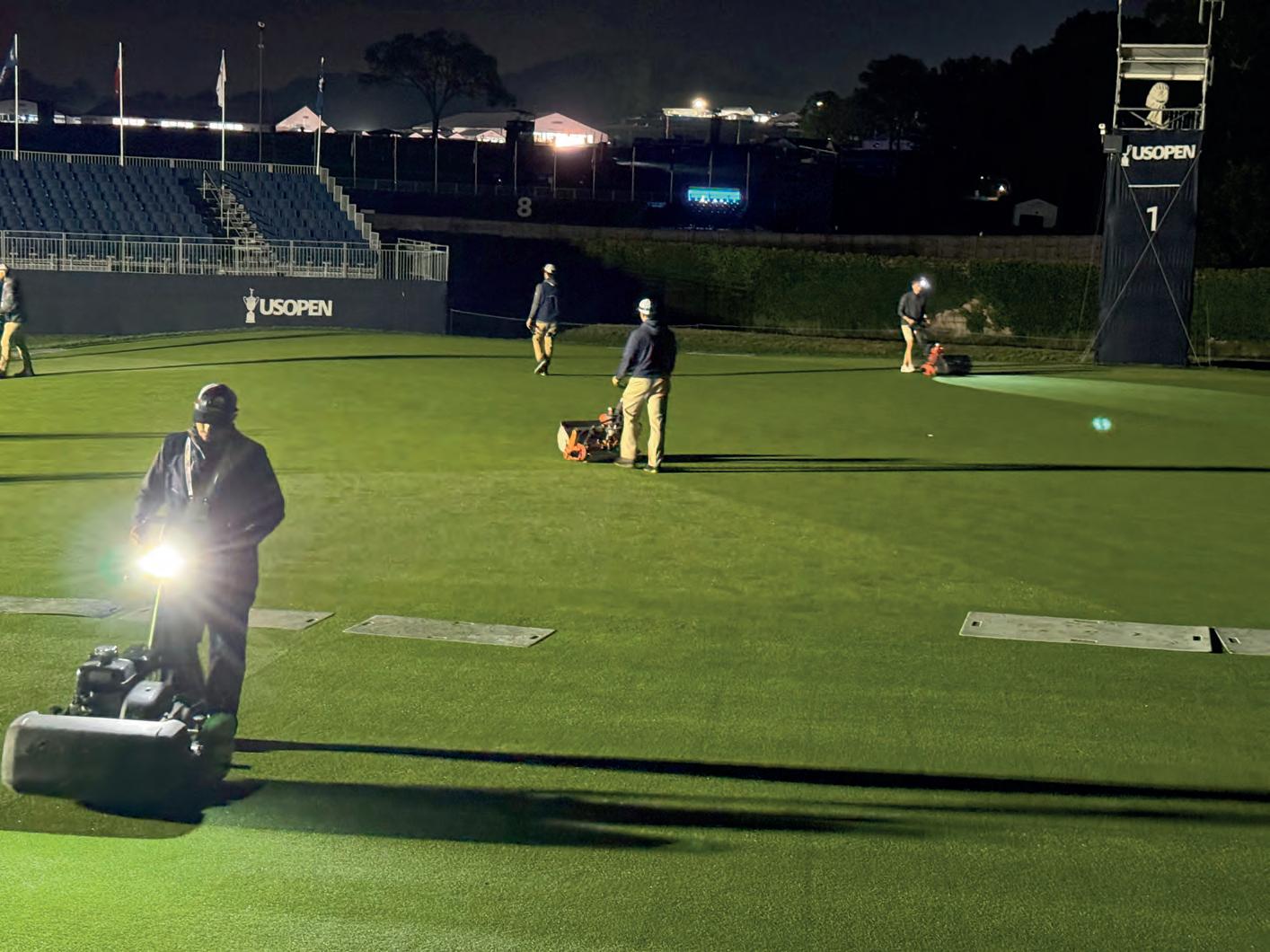
If you can’t see excellence, it’s difficult to achieve it

As an aspiring turf professional, volunteering at major golf events can be a stepping stone for your career in several ways:
● Experience at prestigious events enhances your credentials, setting you apart in job applications.
● Firsthand exposure to best practices, equipment handling and tournament organisation.
● Job offers after impressing their supervisors at the host club.
● Using new equipment for the first time (plus seeing new equipment).
● Travelling abroad enriches perspectives, cultural appreciation, enhances adaptability through immersive experiences in diverse environments.
● Self-discovery by challenging limits and resilience and courage. It broadens perspectives, deepens self-awareness and cultivates confidence.
As an established turf professional and leader, diving into these experiences not only enhances your existing abilities and skill levels, but can also position yourself amongst your peers as a dynamic, well-rounded manager who is prepared for the ever evolving challenges of golf course management.
Volunteering benefits in several ways:
● Connects you with inspiring individuals, reminding you why you love what you do.
● Experiences fuel motivation, renews purpose and cultivates a lasting drive for re-evaluating your personal and professional priorities.
● New tips and tricks! No two courses are alike, each one delivers fresh insights, unexpected wisdom and helpful strategies.
● Finding tomorrow’s talent at high profile events can be useful when you need to build for the future.
● Cutting-edge operational strategy exposure, advanced turf care methods and high-level event coordination insights.
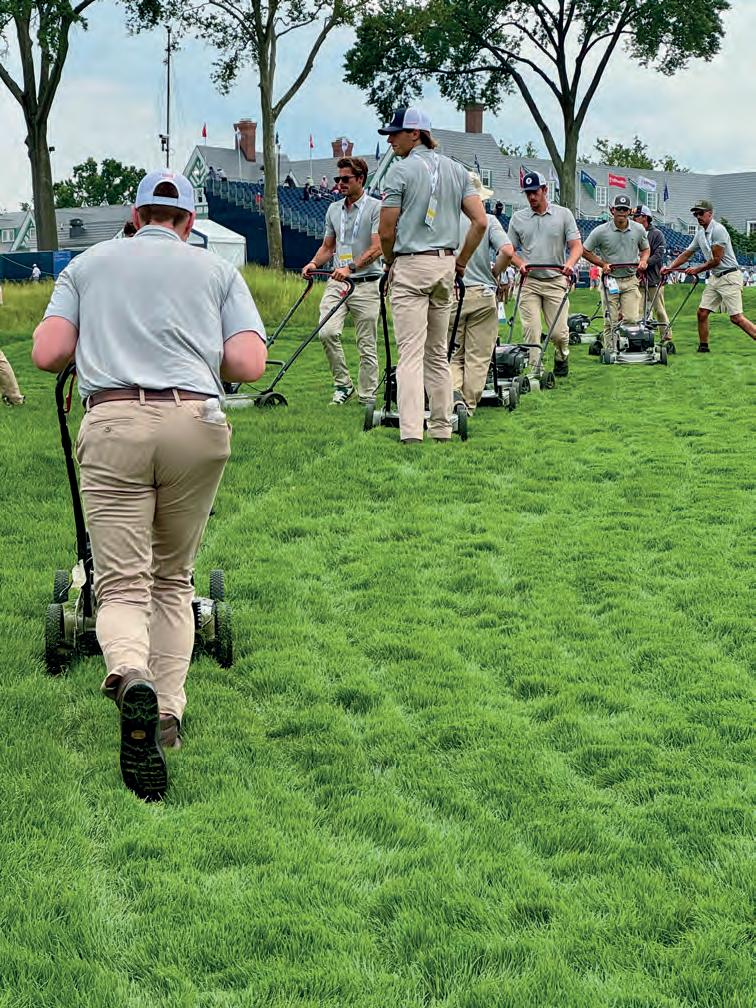
ways to optimise efficiency.

for members and guests alike by integrating innovative practices and advanced techniques taught whilst working on a top-tier event. Members and guests will appreciate the elevated quality of meticulously cared for surfaces, while the infusion of fresh ideas and best practices foster a culture of continuous improvement, instilling pride among maintenance staff and inspiring an environment that supports excellence, environmental stewardship and unity, ultimately redefining the standard of excellence at your club.
The necessity of having a clear vision of high standards can inspire success. When excellence is clearly visible, it acts as a powerful catalyst that encourages us to surpass our current
The knowledge and insights gained from volunteering at a major event can be brought back to your home club. The benefits can be considerable, enhancing every aspect of course management and, therefore, playing experience



limitations. Without this visibility, we risk accepting mediocrity and remaining unaware of the possibilities for extraordinary performance. This insight pairs naturally with the idea that “You don’t know what you don’t know,” reminding us that our growth is restricted by our ignorance of better methods or higher benchmarks. By embracing these concepts, we
learn to seek knowledge and opportunities for improvement and innovation.
Regardless of your ultimate career goals, volunteering is a prime opportunity to work alongside and observe the strategies of top professionals. Volunteering offers invaluable exposure to high-level operational excellence, industry-leading techniques and offers first-hand insight into the mindset of experts, igniting your ambition or simply elevating your ability and shaping your future success.
Thanks to Mike McCormick (superintendent) and the Oakmont team.












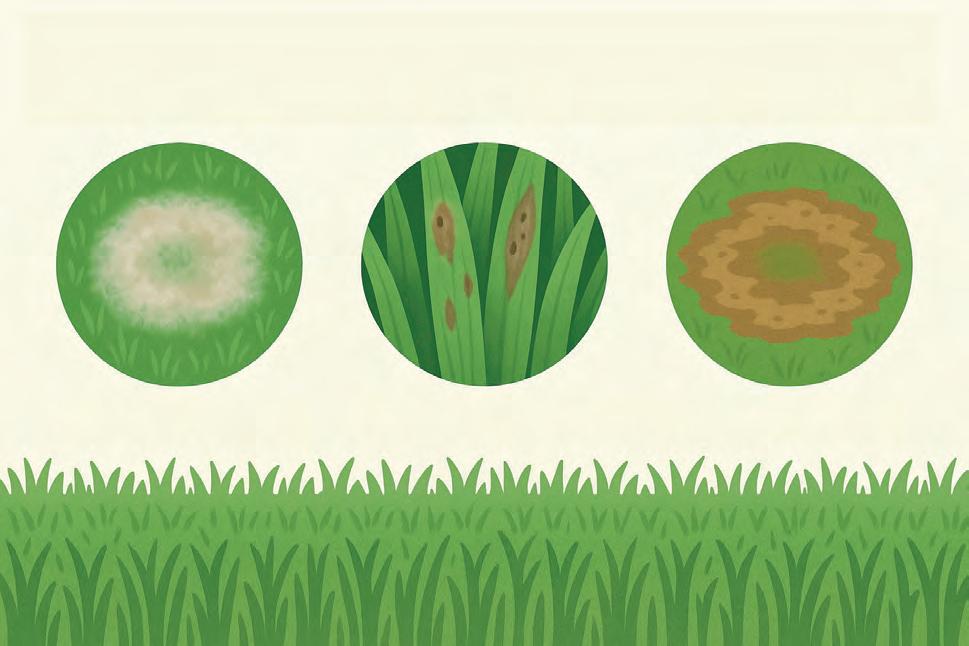
Strengthening your defence against:
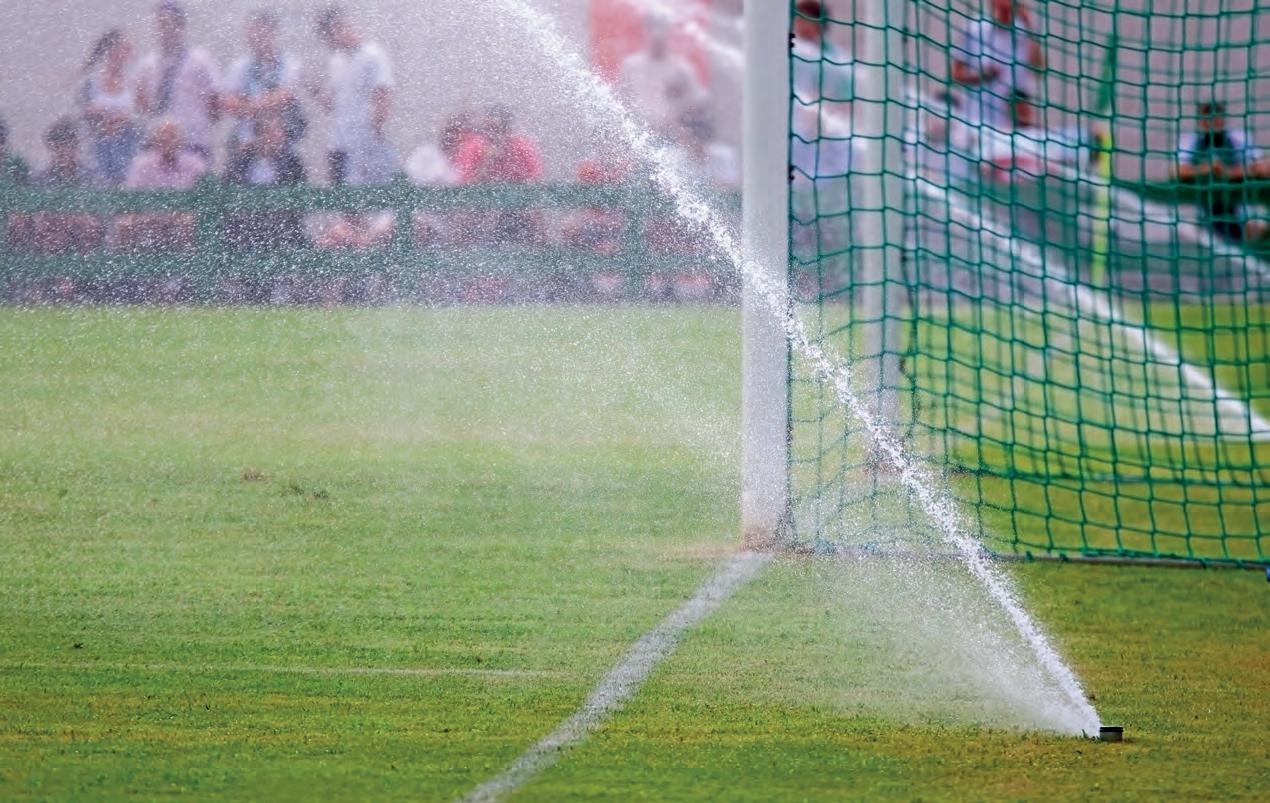
Summer is a time of renovation and renewal for elite sports turf. With increasingly tight establishment deadlines, the margin for error is smaller than ever.
Even the smallest lapse in disease vigilance can trigger rapid, costly outbreaks that compromise pitch performance and put a dent in our professional pride.
Understanding the disease triangle
Before delving into the specifics of pythium blight, grey leaf spot and brown patch, it is vital to revisit the
disease triangle, which forms the foundation of any disease management strategy.

For a disease to develop, three elements must coincide: a susceptible host (such as juvenile ryegrass after renovation), pathogen presence (such as spores of Pythium spp., Pyricularia grisea or Rhizoctonia solani), and a favourable environment (such as moisture, warmth and poor airflow).
Disrupting any one of these elements is the key to reducing disease risk.

Each pathogen has a distinct life cycle, influenced by temperature, humidity and plant growth stage. To manage these diseases effectively, it’s important to understand their individual life cycles.
Pythium blight peaks in sustained warm, wet weather when daytime highs exceed 27°C and nights remain warm.
Grey leaf spot follows periods of humid, warm weather, particularly where high nitrogen applications encourage soft, succulent growth.
Brown patch typically develops during warm, humid nights above 17°C, especially in thick, lush turf with poor air movement.
Recognising these activity windows allows turf managers to time interventions effectively, particularly when using fungicides with systemic and contact modes of action. A preventative approach, incorporating alternating chemistry to avoid resistance, is essential.
Why summer disease pressure is rising
Several factors are making these diseases more aggressive and frequent. Our renovation cycles mean juvenile ryegrass is widely present just as the summer temperatures peak. High-input regimes, such as heavy irrigation and high nutrient inputs, might also encourage lush, disease-prone growth.
Stadia environments with limited airflow
and free draining rootzones trap humidity and can create softer leaf tissue, tipping the balance in the pathogen’s favour. Climate shifts are bringing hotter, more humid spells to traditionally milder regions, while playing surfaces are under ever-increasing usage and scrutiny with much shorter renovation windows.
Key environmental and cultural factors
Beyond climate, conditions that favour disease include inconsistent moisture management, imbalanced nutrition and the presence of organic matter at the turf base.
Turf species and cultivars play a role too, as some are more susceptible than others. Managing these variables with the right choices is crucial for long-term resilience.
Accurate diagnosis and modern identification tools
Effective disease control starts with accurate identification. Symptoms can be subtle or mimic other stresses, so precision is crucial. Use a hand lens to spot early lesions or mycelium and consider microscopic checks for spore masses.
Quick lab tests, including advanced qPCR testing can confirm pathogen presence within hours. This ensures fungicide applications and cultural adjustments are targeted and cost-effective.

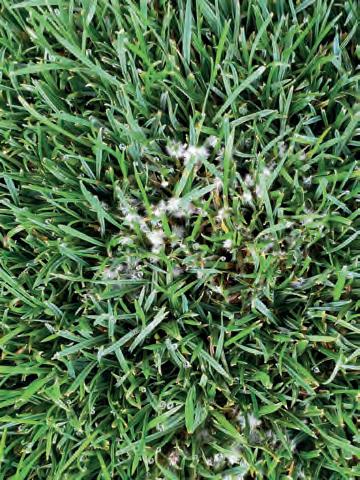

Early signs include:
● Greasy, water-soaked patches
● Cottony mycelium in humid mornings
Management focuses on reducing leaf wetness through early morning irrigation and surfactant use such as H2Pro TriSmart or Qualibra. Improving airflow in enclosed stadia and maintaining rigorous equipment hygiene are also essential. Proactive fungicide programmes incorporating Heritage, Medallion TL or Instrata Elite provide reliable protection during high-risk periods.
Early signs include:
● Grey or tan lesions that look water-soaked
● Twisting and wilting of leaves
● Velvety spore masses in humid conditions
To reduce susceptibility, switch to controlled-release nitrogen after germination and optimise irrigation inputs using surfactants like H2Pro TriSmart or Qualibra. Improving airflow and using resistant cultivars where available provide an added layer of protection. Preventative fungicide applications with Ascernity or Medallion TL will help hold disease in check.
Irrigation and microclimate management
Irrigation is a double-edged sword in summer. While essential for sward establishment and rapid playability, it can prolong leaf wetness and create disease conditions if not carefully managed. Generally, irrigate early in the morning when evapotranspiration is low, and turf can dry out during the day. Avoid evening applications
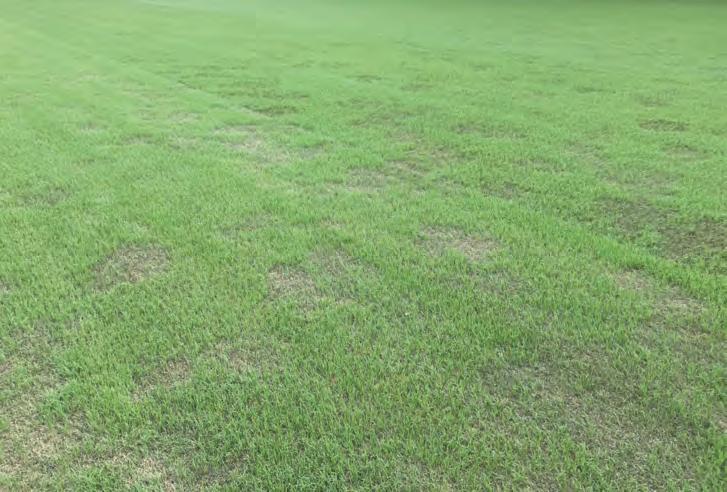
Early signs include:
● Smoky-edged rings
● Tan lesions with dark margins
● Brown mycelium on dewy mornings
Brown Patch management focuses on moderating nitrogen to avoid lush, vulnerable growth and reducing thatch through topdressing and aeration.
Early morning irrigation helps reduce overnight wetness, while fungicides like Ascernity, Heritage or Instrata Elite provide preventive cover.
that can prolong leaf wetness. It is essential to use moisture meters and other equipment to monitor rootzone moisture levels and ET rates. Similarly, under-soil heating and grow lights can accelerate soft, succulent growth that is more prone to infection. Balancing these factors is a critical part of modern integrated pest management (IPM) strategies.
Surfaces face intense usage and increasingly high expectations from players and clubs. There is little tolerance for disease-battered turf in elite sport. Every management decision, from nutrient inputs and irrigation to fungicide selection, must support both aesthetics and performance.
Predicting and staying ahead
Modern disease prediction models and real-time weather data help turf managers plan ahead rather than react. These tools, paired with agronomic expertise, form a robust decisionmaking framework for disease prevention.
Final thoughts
Summer diseases are not new, but they are becoming increasingly cunning and persistent. Staying ahead means disrupting the disease triangle, monitoring vulnerable juvenile turf and using preventative fungicide programmes

carefully with rotation to avoid resistance. Accurate diagnosis remains the first line of defence, and collaborating with an agronomist or technical advisor can provide crucial reassurance when disease pressure intensifies.
The end goal remains the same: maintaining the highest standard of playability and appearance because every blade of grass counts.






















Bradley Tennant Head Groundsman and Co-founder of International Greenkeepers For Hire
We’ve
been facing growing challenges for years, but now, more than ever, the cracks are showing. We’re not just struggling to fill roles - we’re also experiencing shifts within the industry that are stretching clubs and professionals to their limits.
The greenkeeping and grounds management industry is at a crossroads. If we don’t take action now, there’s a real risk of long-term damage to the profession and the quality of sports turf across the country.
The elephant in the room: salaries and working conditions
Anyone working in greenkeeping or grounds maintenance will tell you this isn’t an industry for the faint-hearted.
We work long hours in a physically demanding role, which often includes weekends. That makes recruitment challenging - especially when wages don’t always reflect the level of skill and dedication required.
It’s no surprise that younger generations are looking elsewhere for careers with better pay and a more structured work-life balance. Skilled professionals are also leaving for industries that offer higher salaries and more predictable
hours. And that’s where the real issue begins.
While we’ve been losing experienced workers, the demand for sports turf professionals has been climbing. More grassroots teams are forming, and public interest in sports continues to grow.
However, as the number of pitches and events increases, we simply don’t have enough skilled professionals to keep up. Clubs are already struggling to maintain surface quality, and without investment in staffing and training, standards will inevitably drop. Some clubs may lose members or be unable to host as many fixtures, impacting revenue and long-term sustainability.
This isn’t just a manpower issue. We’re also facing significant gaps in agronomy expertise, turf science knowledge and machinery maintenance skills. Technology in our industry is advancing rapidly - robotic mowers and sustainable turf management techniques

require professionals who understand how to manage these new systems. Yet, we don’t have the workforce to support these changes. Clubs and venues are investing in modern solutions, but without the right people to oversee them, these tools aren’t being used to their full potential.
The retirement challenge
Another pressing issue is the number of


have trained apprentices and have shaped the profession as we know it.
As they retire, we’re not just losing staffwe’re losing invaluable knowledge. With fewer young people entering the industry, there’s no clear path to replace them. This puts additional strain on volunteers and unqualified staff, who are often left to take on responsibilities they aren’t fully trained for. When that happens,
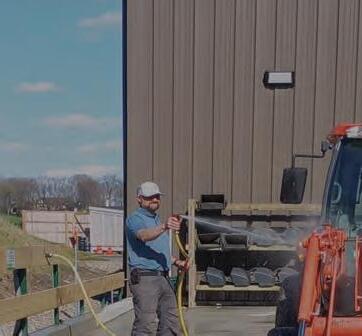


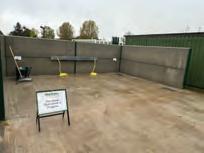

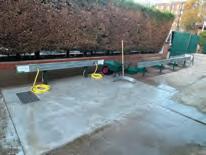
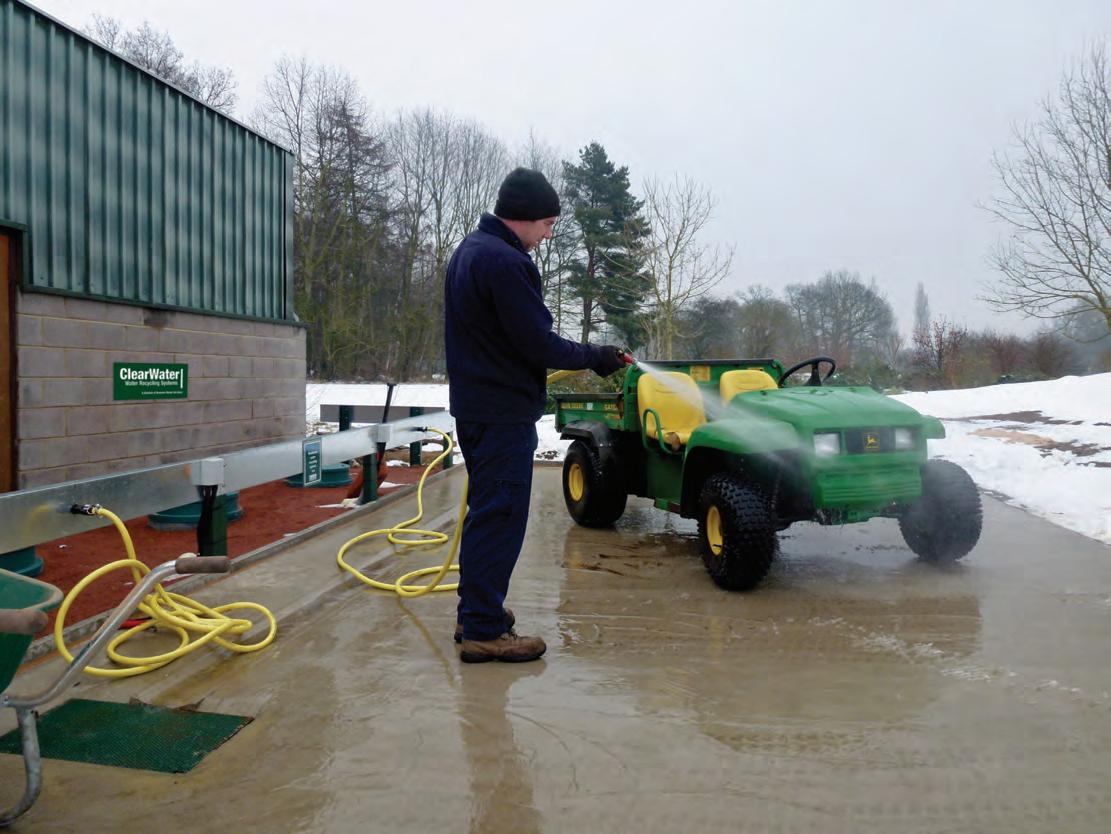
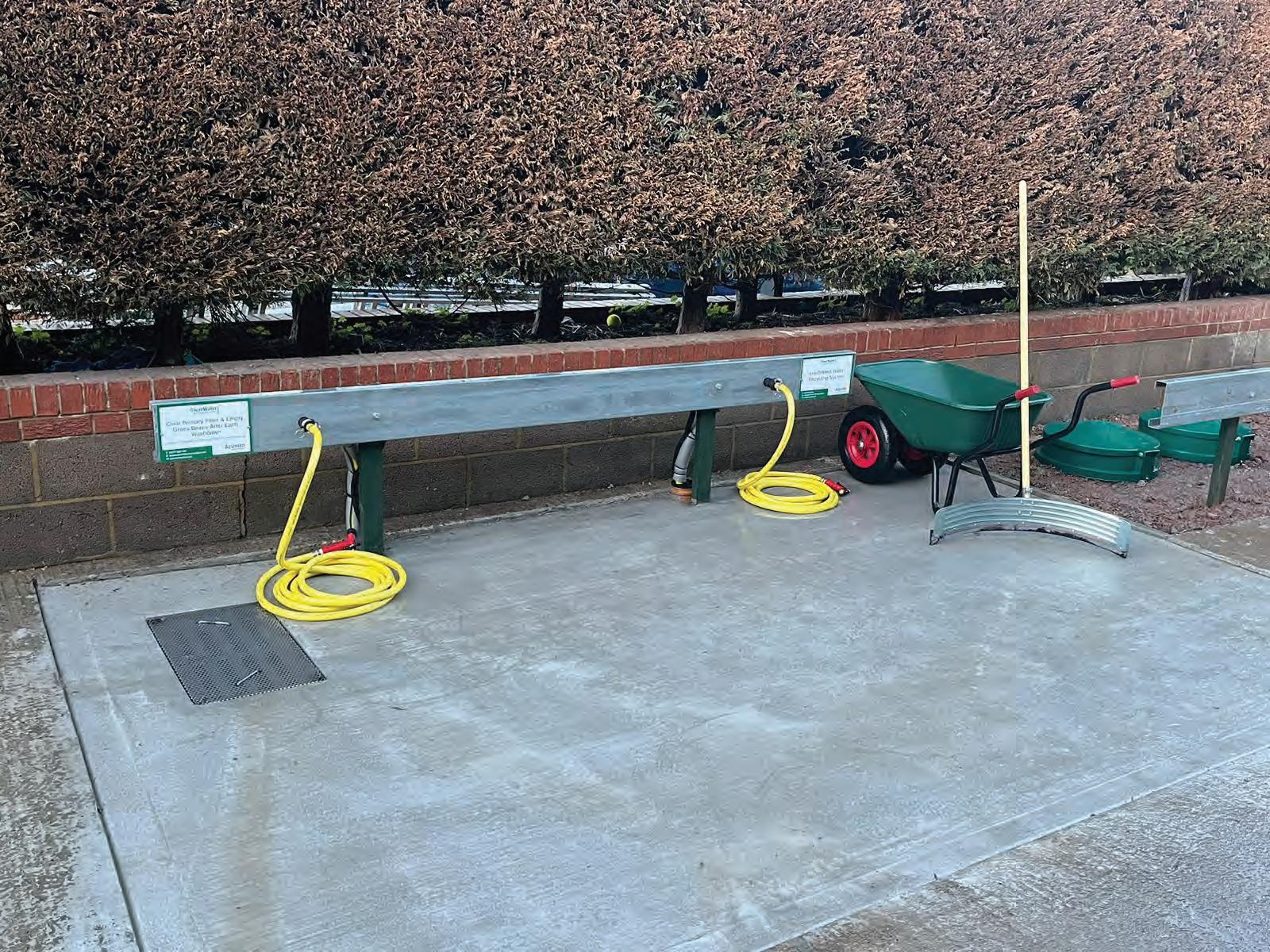



The reality is that most people don’t even know it’s a viable career. There’s a massive lack of awareness, especially in schools, where career discussions rarely, if ever, mention sports turf management. Without that exposure, how can we expect young people to consider it as an option?
Apprenticeships should be a key route into the industry, but training providers have declined over the years, limiting opportunities for structured learning. While numbers are improving slightly, you could argue that the damage has already been done. Fewer providers mean fewer apprentices, creating a pipeline issue we’ll be dealing with for years.
Then there’s the work itself. It’s physically demanding and requires working in all weather conditions, but it’s also incredibly rewarding. There’s real satisfaction in seeing a course or pitch in perfect condition, knowing you played a role in making it happen. The challenge is communicating that to potential newcomers.
We can’t sit back and hope people will suddenly flood into the industry. Here are some actionable steps we can take to push greenkeeping and grounds maintenance careers further into the limelight:
1. Invest in education and training
Expand apprenticeship programmes and get sports turf careers on students’ radar.
Engage with schools, attend career fairs, and work with educators to highlight this profession.
2. Stronger industry collaboration
Clubs, manufacturers, governing bodies, and training providers must form stronger partnerships.
Creating structured career pathways will help attract and retain talent, offering more than just a paycheck.
If we continue down this path without making changes, we risk seeing a decline in the quality and sustainability of sports turf management.
3. Upskilling and knowledge transfer
Retiring professionals hold decades of knowledge that must be passed down.
Implement structured mentoring programmess and encourage knowledge-sharing between clubs and professionals.
4. Better career incentives
Structured pay rises based on experience and additional qualifications.
Performance-based bonuses and opportunities to attend international career events.
Exchange programmes with overseas clubs to keep professionals engaged and motivated.
But there’s good news - we have options. By focusing on education, training, collaboration and career progression, we can attract new talent, retain experienced professionals and ensure that greenkeeping and grounds management remains a respected and sought-after profession.













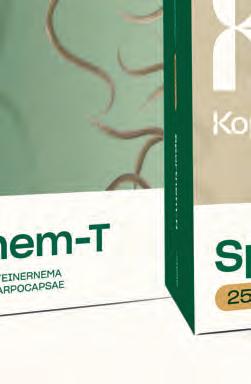
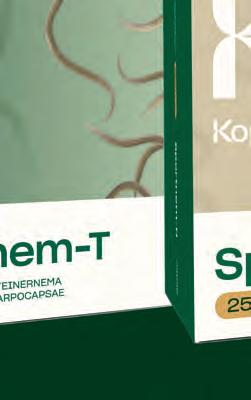




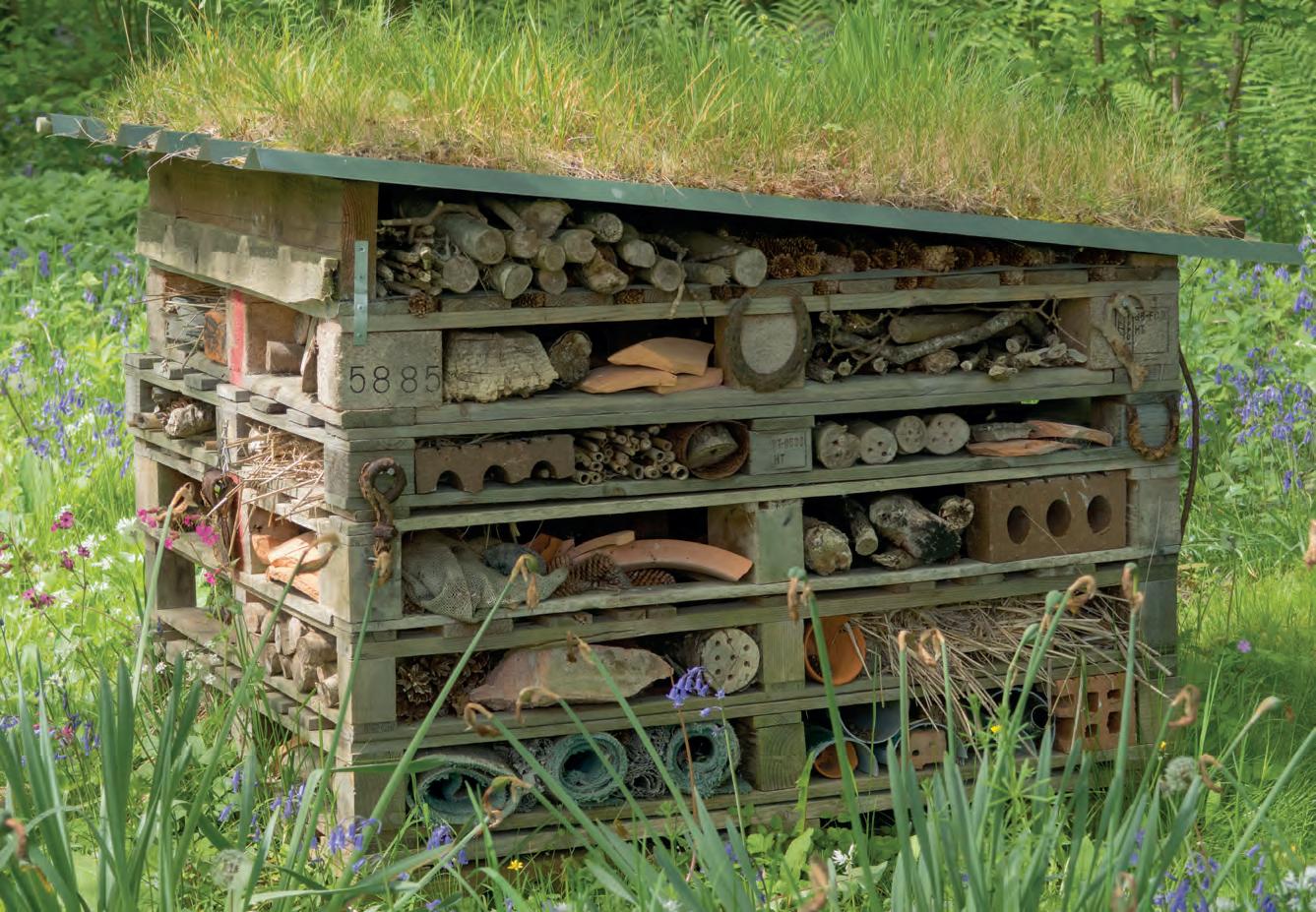
Often tucked into woodland edges or near wildflower areas, bug hotels are simple but effective tools that contribute to your course’s biodiversity, integrated pest management, and environmental credentials.
Abug hotel is typically a wooden frame packed with a variety of recycled materials: bamboo canes, drilled logs, pinecones, straw, bark, and bricks. Each component offers nesting or overwintering habitat for different beneficial insects:
• Solitary bees (e.g. mason or leafcutter bees) use hollow reeds or drilled wood.
• Ladybirds and lacewings shelter in dry leaves and pinecones.
• Ground beetles, centipedes, and spiders prefer logs or loose bark.
Bug hotels require minimal investment, but they align closely with current sustainability goals promoted by The R&A and STRI, making them a valuable addition to any course’s ecological programme.


1. Boost pollination for wildflower areas
Solitary bees - frequent bug hotel residents - are exceptionally efficient pollinators. Encouraging their presence improves the pollination of wildflower roughs, tree lines, and native plantings, helping maintain colourful, biodiverse habitats around the course.
2. Promote natural pest control
Insects such as ladybirds, lacewings, and hoverflies feed on aphids, mites, and other turf pests. By providing a safe habitat, you reduce the need for chemical interventions - supporting Integrated Pest Management (IPM) approaches, a core focus of STRI guidance.
3. Demonstrate visible sustainability action
Bug hotels are a cost-effective, highly visible way to showcase your environmental commitment to members, visitors, auditors, and sustainability partners. They’re especially impactful when paired with GEO Certified® reporting or biodiversity action plans recommended by The R&A’s Golf Course 2030 initiative.
4. Support biodiversity and ecosystem resilience
STRI and The R&A both advocate creating small-scale, species-rich microhabitats to support wider biodiversity. Bug hotels contribute to this by offering refuge to insects affected by habitat loss and fragmentation, particularly in manicured landscapes like golf courses.
A valuable addition to any course’s ecological programme
• Location matters: - Position bug hotels in sunny, sheltered spots, ideally facing south or southeast. Common placements include woodland edges, behind tee complexes, or near out-of-play wildflower meadows..
• Use varied, untreated materials: This ensures suitability for different insect species and avoids introducing harmful chemicals.
• Ensure good drainage and elevation: Raising bug hotels slightly off the ground prevents damp and extends lifespan.
• Annual maintenance is essential: STRI recommends refreshing materials each winter to prevent buildup of mold, disease, or parasites.
• Integrate into wider ecology plans: Bug hotels work best alongside other features like log piles, pollinator strips, and reduced chemical use.
As highlighted in The R&A’s Golf Course 2030 roadmap, future-proofing golf course management depends on enhancing ecosystem services and increasing biodiversity. Bug hotels are a practical, low-cost solution that aligns with this vision.
Whether you’re seeking GEO certification, improving your IPM strategy, or simply showing leadership on sustainability, bug hotels are a small but effective step forward.
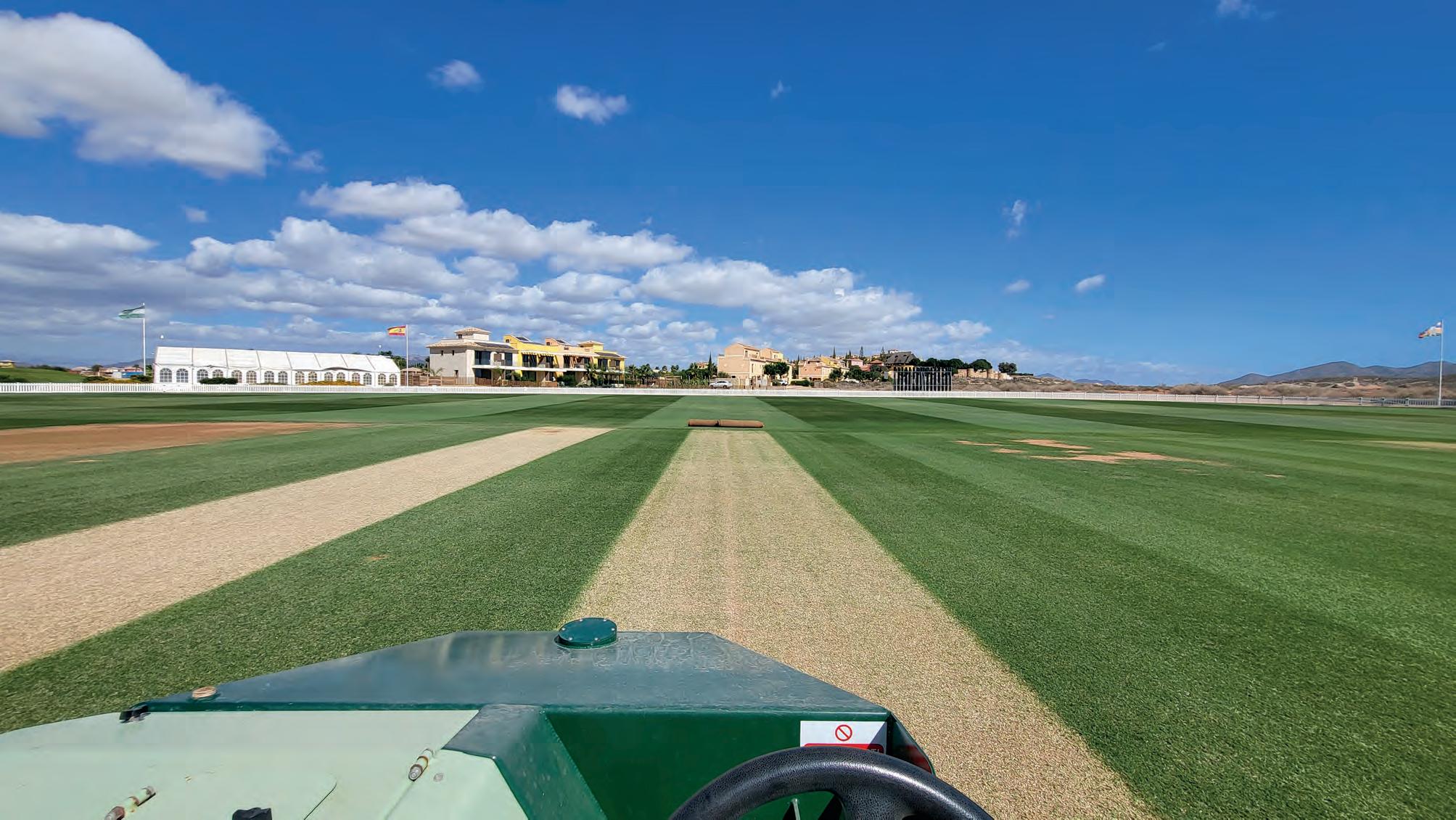
Just over a year ago, Tom Nutting moved from the rainy elements of Shropshire to the sun-stricken Almeria as he became the Head

In this candid article, he highlighs why he made the move but also acknowledged the naivety behind the phrase “the grass is always greener.”
There were several reasons why Tom took up the role at Desert Springs Resort. He said: “The move worked for my family. I’m married and have a four-year-old son. He was at the perfect age to move, as I didn’t want to disrupt his education. My wife works remotely, so the change hasn’t caused much disruption.” Tom has been in the industry for nineteen
years, but the two years before the move were the hardest. “It was the worst weather I had seen in my entire career - it was almost depressing how much rain we were getting. It was the wettest summer on record. There weren’t even four consecutive days without rain.”
Why Desert Springs Resort?
“I had been exploring my options. I didn’t want to go as far as Australia or New Zealand due to family commitments. I knew a bit about the resort, spoke to people who had worked there,


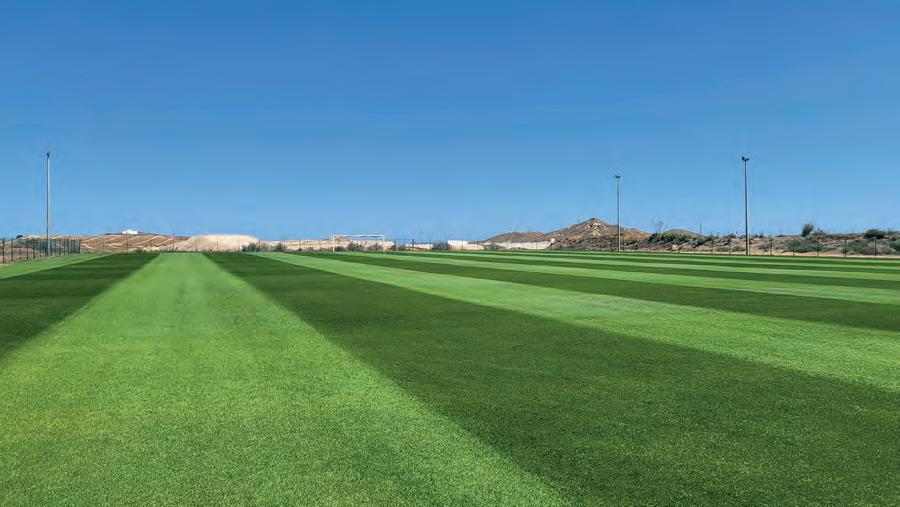
Cricket isn’t widely played in Spain, so it’s hard to find some essentials

and I understood there would be challenges. I wanted a project, and I knew I’d thrive on the challenge.”
Is the grass greener?
Tom was surprised by how swift the recruitment process was. “I had a Zoom interview, and they flew me out ten days later to see the facilities. From the moment I sent the enquiry email to being in Spain permanently took just three months.”
He wanted more responsibility in a new role and addressed whether that has happened. “I’ve always worked on cricket grounds alongside my full-time job. However, I’ve never held the head groundsman role in a full-time capacity. Here, I’ve been able to put my own stamp on the job. I have full control over the cricket and football facilities at the resort. It’s rewarding to have that final decision and responsibility.”
The consistent weather has made event
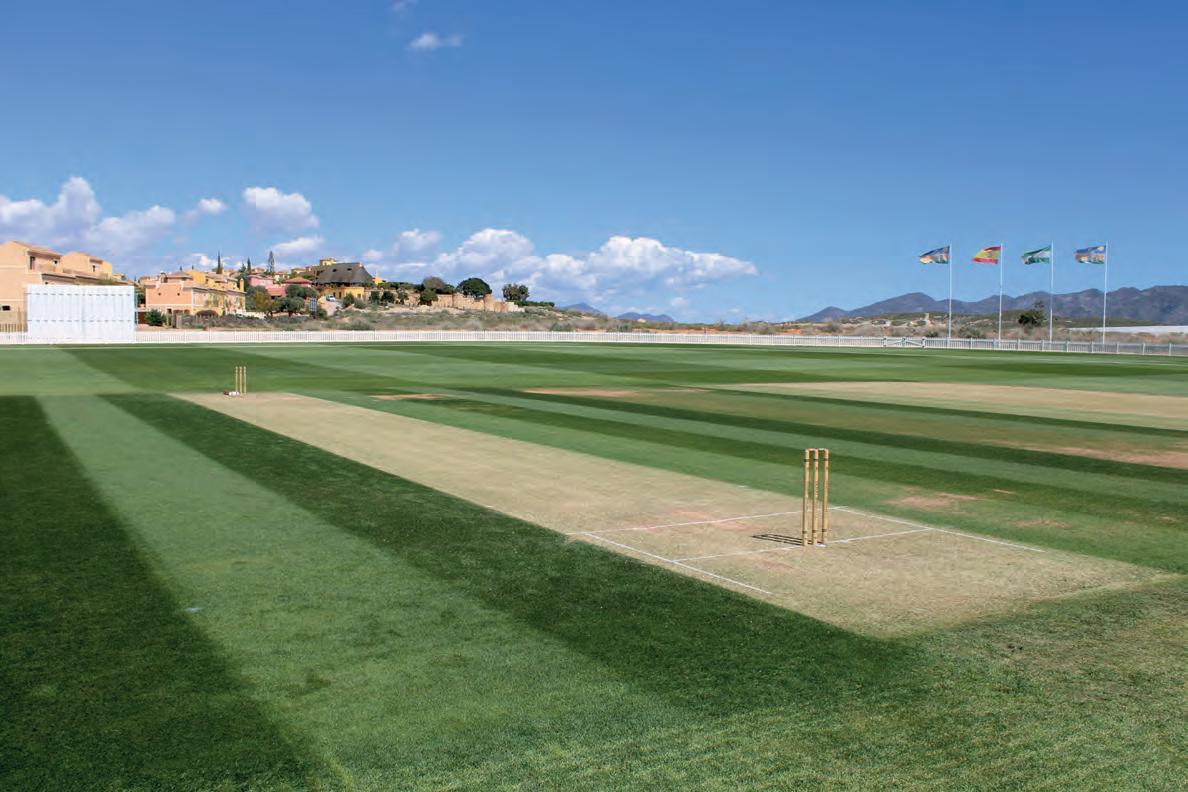
planning easier. “If I have a team coming in ten days for pre-season, I can prepare without many issues. I know the weather will be fairly consistent. Compare that to the UK in February - you might have one day of heavy rain, and that throws everything off.”
The move has been positive for Tom, but it hasn’t been without challenges. “At the beginning, it was stressful. I had to move on my own for several months before my wife and son could join me. She was back in the UK speaking to letting agents and managing the house with a toddler. It was tough for her, but
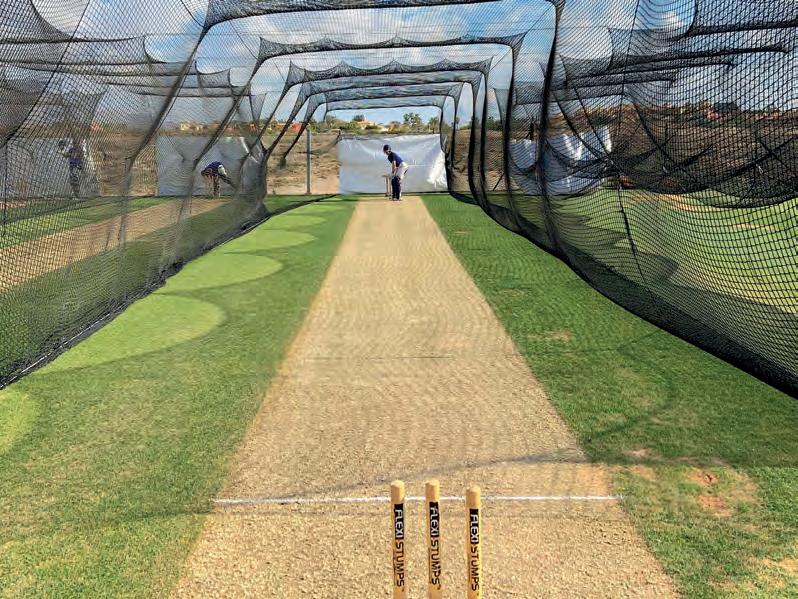
they came to visit a few times and have now moved here permanently.”
Tom reflected on the challenges of the past year
“The language barrier was difficult at first. A lot of the staff are Spanish and don’t speak much English. They also don’t know much about cricket apart from what they’ve learned here. I’ve tried to learn some Spanish to better integrate with the staff.”
Brexit has also complicated access to materials. “It’s been a nightmare getting certain products. We can get things like seed and fertiliser, but because cricket isn’t widely played in Spain, it’s hard to find some essentials. I ordered sheet covers from Stuart Canvas, and they took three months to arrive because they were stuck in customs in Madrid.”
Despite escaping the rain, working in a desert climate brings its own challenges. “The weather isn’t as predictable as you’d think. We had the Ireland International cricket team here in February. I put out flash sheets the day before they arrived. The next morning, the sheets had frozen water on them, and by 10 a.m., it was 22°C and sunny. The grass has no idea what’s happening.”
“In summer, when it’s boiling, it’s not pleasant. Because of the lack of rainfall, we have to source water from elsewhere. We’re surrounded by farmland, which makes water access competitive. Sometimes we use desalinated water, but that brings its own problems.”
Making a positive impact Since arriving, Tom has identified problem areas and implemented improvements. “We’ve overhauled all of the cricket facilities. We renovated the main cricket


square and the two academy squares. We stripped them and killed off any existing growth. We introduced Seeded Hybrid Bermuda grass - a first here. The climate allows warm-season grasses to thrive, unlike elsewhere in Europe. Bermuda doesn’t need much water and grows well in 40°C heat.”
He explained the science behind the seed
You want your team to match the standards you set for yourself
selection. “Ryegrass grows in individual blades, making it ideal for cricket. Bermuda grows like a strawberry plant - it spreads, which is great for covering a field but not ideal for cricket pitches. We established it, and now we constantly verticut to inhibit the natural, lateral growth pattern allowing us to produce cricket pitches with these types of grass species. When

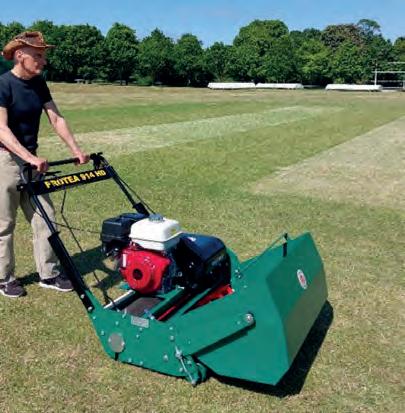
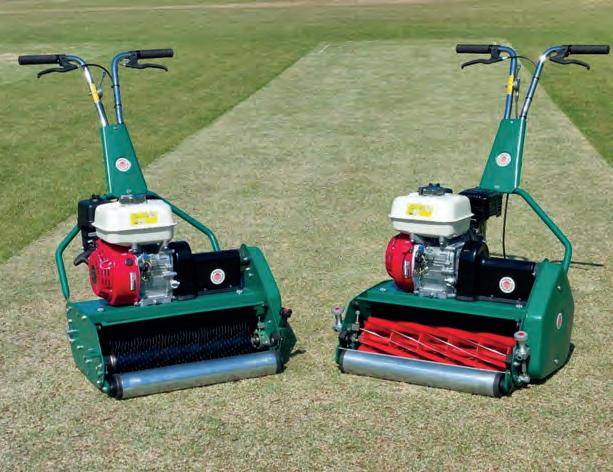
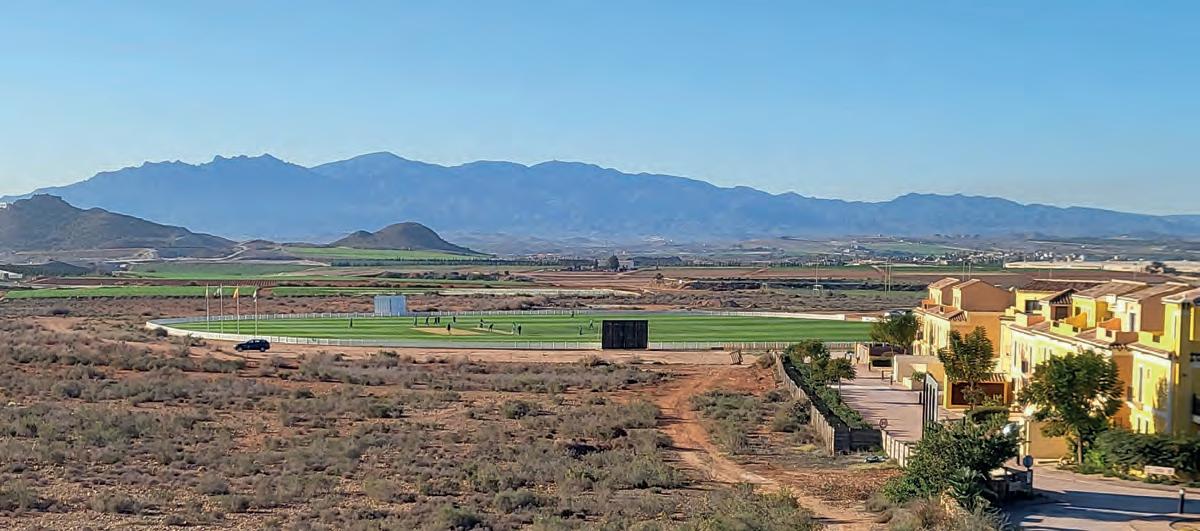
Here, I’ve been able to put my own stamp on the job
Like many in the industry, Tom found his passion for turfcare by chance. “I was always academic at school - my dad was a headteacher, so I was pushed to work hard. I always loved cricket and played it. I went to Loughborough University to study Chemistry, but I didn’t enjoy it. I came back that summer and started working in turfcare. I did my Level 2 at Rodbaston College and went from there.”
He has worked at several multi-sport venues including Wrekin College, St Dominic’s Grammar School, and Birchfield School. He values the experience gained in those environments. “There’s a common misconception about the glamour of working in professional sport - you’re working when no one else is. Working in the private school sector gives you a broader skill set across different sports and surfaces. You also get a change of scenery and can focus more on horticulture. This afternoon, I’ll be cutting the football pitch while cricket matches are on - more for my own wellbeing than anything else.”
temperatures drop, we scarify the Bermuda and sow three types of ryegrass. The Bermuda goes dormant in the cold, but its strong root structure remains. The ryegrass takes over until the warmer months return, at which point the Bermuda thrives again - it’s essentially a natural hybrid pitch.”
“Undertaking these conversions on the cricket surfaces and transitioning the grass plants with the seasons, is enabling us to produce cricket pitches all year round... I think we´re the only cricket venue in Europe that is offering that!”
Tom has also invested in his staff by enrolling them in the Level 1 GMA Cricket course. “They’ve never had the opportunity to learn more about the industry. They’ll always go out and cut the field if I ask them to, but they might not know why. You need that level of understanding. You want your team to match the standards you set for yourself.”
Article by James Kimmings.
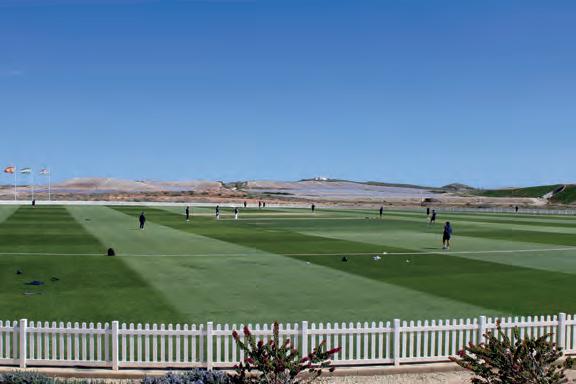


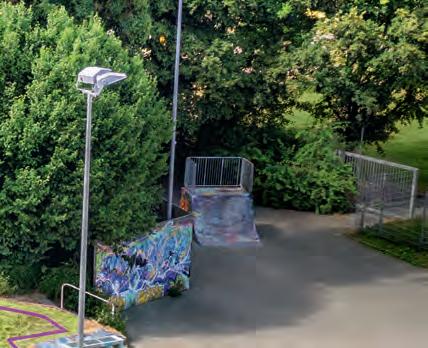
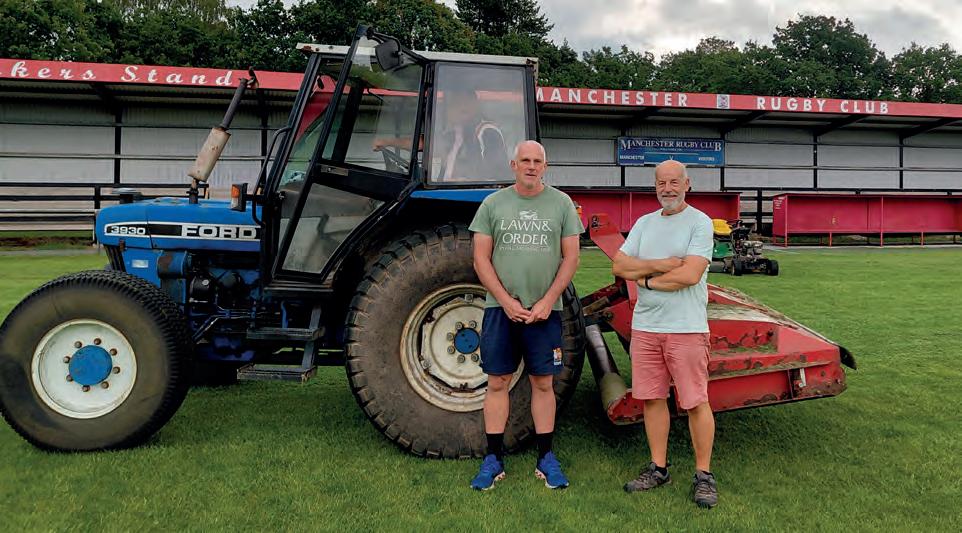
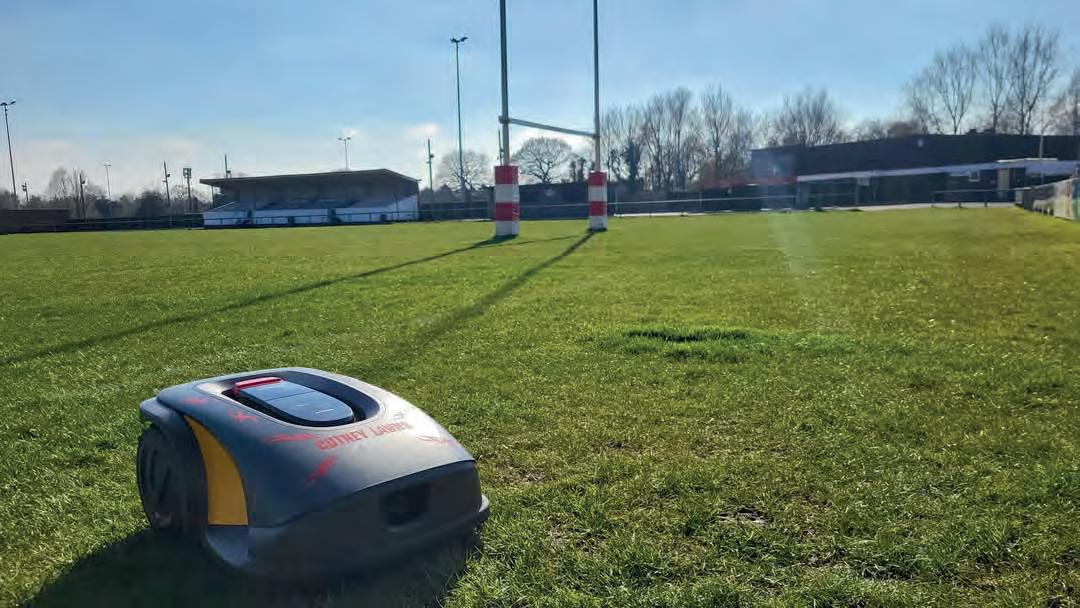
One of the world’s oldest rugby clubs is pioneering newest technology to streamline its groundcare.
Manchester Rugby Club ranks second or third behind Blackheath and Liverpool St Helens, formed in 1860 and still a major force in the grassroots game, fielding men’s and women’s teams across all age groups.
“The jury is out on exactly which club can claim the crown of ‘Oldest rugby club in the world’,” says Jonathan Sheard, who is sitting with me in the bar with fellow longserving volunteer groundsman Mike Stewart.
Manchester finished a respectable third place in the Level 5 Regional 1 North West league this season and is now anticipating an exciting period into autumn, not only preparing for the new season, which kicks off in September, but also focusing intensively on preparing the site
for some special visitors, who will be using the grounds later in the summer.
The club runs three men’s senior teams and one women’s side, plus a large boys’ section with ten age groups and a rapidly expanding girls’ section across four age groups.
With a sporting calendar of some fifty home league and cup games, Jonathan and Mike, along with volunteers Neil, Tim and Di, usually prepare for two senior side fixtures on Saturdays and Sundays – tending four full-size playing areas in total. Time management is critical, therefore.
“We average thirty hours a week on pitch surfaces,” says Jonathan, whose son plays here, “but cannot afford to run a full-time groundsman. The last time we did was in the ‘90s.”

Mike adds: “Our calculations show that looking after four pitches would need one and half groundsmen, so 60 hours a week.”
The importance of volunteers to delivering professional playing surfaces is only too clear to see for what is an 18-acre site.
Both men have been managing Manchester’s ground “for more years than we care to mention”, though they do anyway. “It’s over twenty years since we were dropped in at the deep end,” recalls Mike, who played prop from the ‘70s at junior and senior levels.
Three volunteers are assigned grass duties, the others see to everything from hedge trimming and sweeping up to looking after recycling.
The club has recently added to its grounds staff, however the latest recruits differ markedly from their predecessors. Two Stiga A10000 robotic mowers are regularly moving purposefully across the club’s stadium and training pitches to bring their hardworking human colleagues welcome relief from the timeconsuming task of mowing.
“We use the mobile app to programme the robots to cross cut the playing areas,” says Mike.
“One mower is dedicated to the stadium pitch, the other cuts where we programme it to, while we use a rotary deck for outer edges, as the robots’ turning circles dictate how much they can cut beyond the pitch perimeters.”
It was a club player who had an ‘in’ with Stiga, a machinery and equipment manufacturer that regularly donates items to charities, clubs and amenity sites.
“They were happy to provide us with two GPS controlled mowers in return for publicising and promoting the products and the company,” says Jonathan, adding: “The stadium carries their perimeter advertising.”
As the mower name suggests, the robots can cut up to 10,000m2 before needing a recharge from their own docking unit, which came with the package. “That was a key reason for selecting these models,” Mike explains. “As a pitch is 70 X 100m, once you include deadball areas, it’s nearly at the robots’ charging capacity.”
Jonathan then checks his mobile before confirming: “One of the robots is cutting the stadium pitch as we speak (it’s around 7pm), and that’s the beauty of these mowers – you can

A roller cut rotary, Verti-Drain 7416, 1.2m SISIS slitter, two Honda rotary walk-behinds and a fertiliser spreader are housed there, as well as the robots and tractors. Oh, and a Bowcom Linemarker Plus, used to mark out the stadium pitch every fortnight and the other playing areas as required.
After expressing my surprise at how wellequipped Manchester is, Mike responds: “A GMA report said we needed more equipment. A sportsturf consultant for ProPitch, engaged
by the RFU, visited us three times to report on the stadium pitch. Meanwhile, we’d installed dedicated changing rooms, designed to meet RFU standards.”
The team has stepped up nutritional inputs too – “NPK fertilisers,” Mike confirms. “We’ve upped the quality of nutrition over the last four

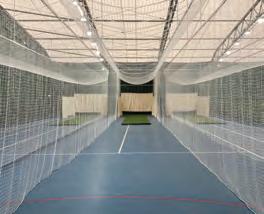





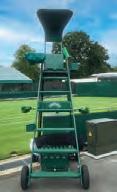
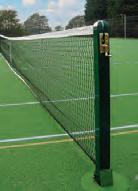


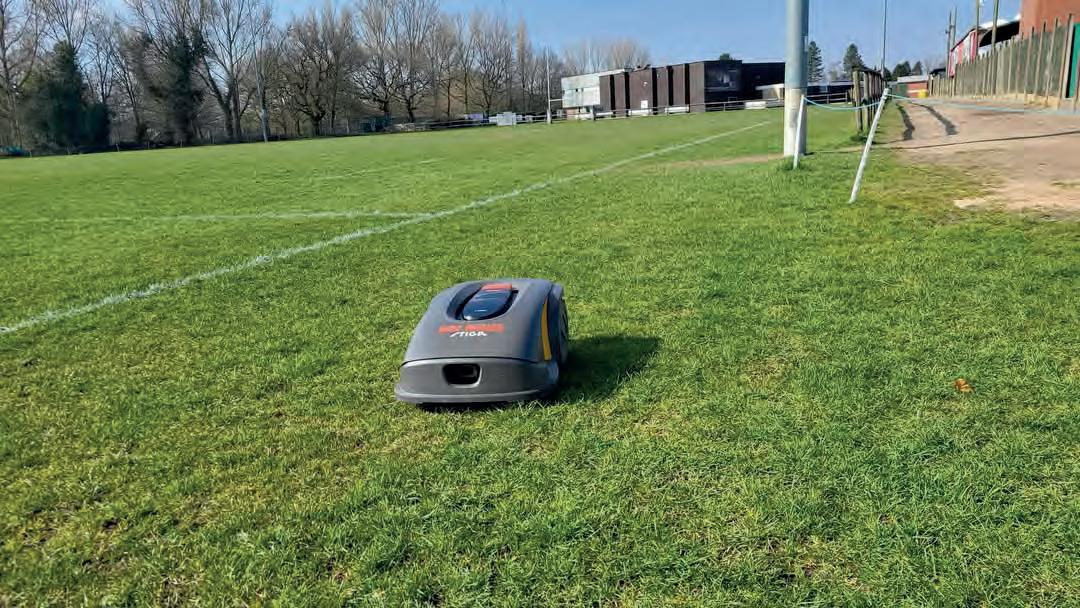
Stiga autonomous robot mowers are cable-free. The installation is virtual and the working perimeter of the robot can be adapted anytime. With the patented AGS technology, the robot can plan mowing sessions intelligently. You have full control of your robot from the STIGA.GO app.
• Intelligent mowing using AGS technology
• Stiga Active Guidance System to predict GPS signal availability and mow efficiently
• 4G connection and Stiga Cloud for constant communication
• Three mowing cyles a day - suitable for grass up to 10,000m2
• Precision cutting for a fine finish
• Free connectivity included
or five years, in part to enhance pitch colour, and also apply a four-cultivar perennial rye seed
The size of the grounds and their semi-rural location require the team to bring external help. “At the end of the season, we put out the scarifying and topdressing to a local contractor,”
Arb work is an outsourced task too. “Lots of oaks line our boundaries,” Jonathan notes, “and we simply cannot manage that kind of work ourselves, so the arborist comes in at the end of June to look over things and undertake any work required.”
Jonathan tackles the hedging, itself no mean task – “it takes me seven hours” – work he completes with the Stihl hedgetrimmers bought a couple of years back, and augmented last year with blowers and brushcutters.
Are the hedgetrimmers battery powered? “They wouldn’t be practical,” states Mike. “The hedges take so long to trim that we’d have to keep coming back to recharge the tools.
Then there’s climate change to contend with. “Last year, we were underwater in April. This year, it was so dry we bought a Plantex mobile irrigation system to enable us to seed the pitches. Permanent pipes are laid under the stadium and best second pitches, supplying water to the mobile sprinkler, which we can move around the surfaces.”
With 800 members, of which some 450 are rugby players, the demands on the team to satisfy playability standards is mounting as Manchester Rugby Club continues to grow.
“I started working on the grounds with very little equipment,” Mike recalls. “Knowing the right people and networking with the Cheshire Grounds Association for example has helped us build up the fleet and the quality of our pitches.”
“Visiting clubs praise us when they play here, remarking that the pitches look really good. But we want more volunteers to help maintain the structure behind the groundcare programme and the quality of the playing surfaces.”
Playing rugby over the years gave Mike the impetus to develop facilities for youngsters. “I wanted to get as much playing surfaces for girls and boys as I could, so created a handkerchief pitch, 50m by 30m for tag rugby, draining, levelling, seeding and nurturing an unused area. Now we have 50 kids playing on it every Sunday.”
Article by Greg Rhodes.












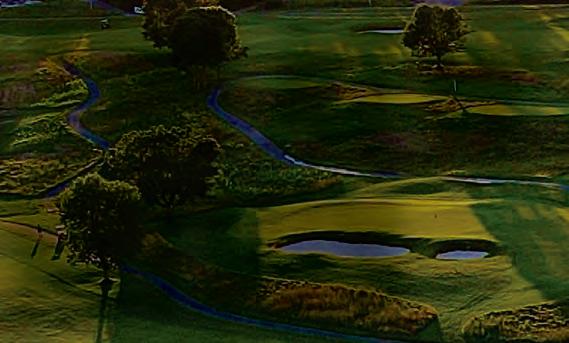



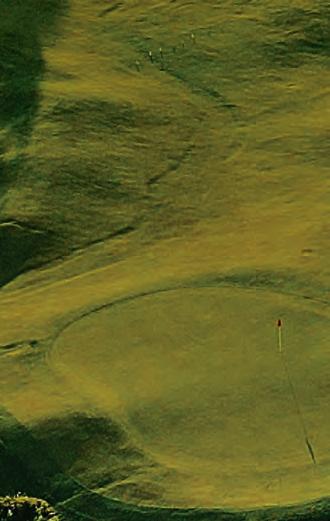

A Groundbreaking Nutrition Line that Enhances Plant Health while Minimising Environmental Impact & Honouring our Legacy
An innovative nutrition line o ering environmentally and economically smarter solutions through two proprietary technologies exclusive to the VerdeLNX range
Designed to signi cantly enhance nutrient absorption, optimising both foliar and root uptake of macro and micronutrients
Minimises nutrient losses by retaining nutrients higher in the soil pro le for longer. This maximises nutrient uptake by grass plants and reduces the risk of environmental issues caused by leaching


Highly eco-friendly, fully renewable, and completely biodegradable, leaving no trace or residue in the soil or water
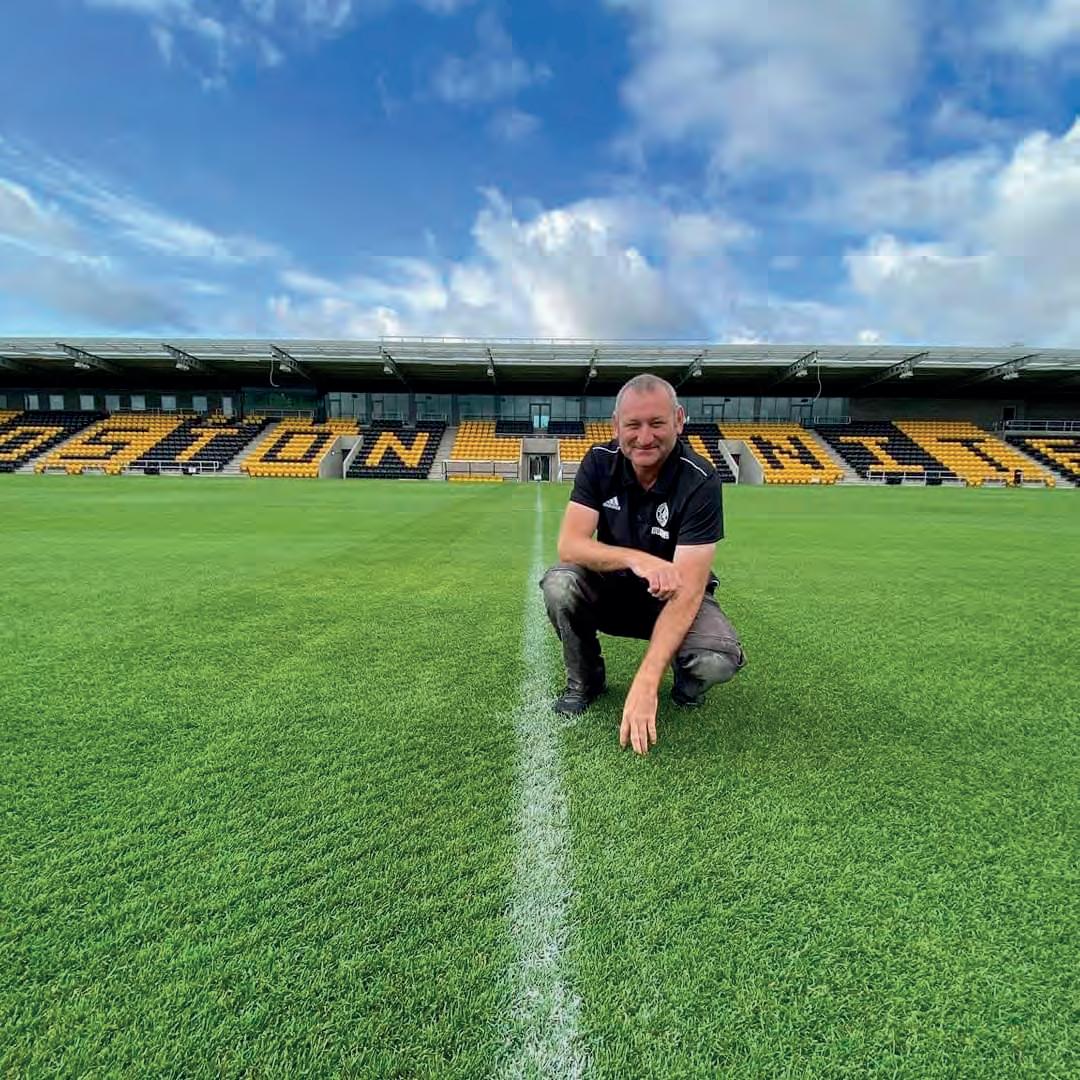
Back in 2016, Jim Portas was made redundant from his long-term factory job. He had been involved with voluntary grounds maintenance at Boston United since 2005, but he never imagined becoming the head groundsman.
Jim had worked in a printing factory for over thirty years before becoming the head groundsman at Boston United.
“I was lucky because I had experienced life before turfcare and it helped me realise how much pressure and stress comes with the job here at Boston United. However, it is much better than working in a factory environment. You’re outside in the
sunshine; you can see the results of your hard work. Coming into the industry at an older age, I suppose I had seen a tougher side of working life than turfcare.”
“Wintertime is doom and gloom; you have to push through those hard times when the weather is against you. However, compared to the factory, my mental health is much better working here. I always said after being made redundant that I would never go back to that


environment, and I was lucky to find this job.”
Jim explained how he got the role of head groundsman at Boston United: “The club already knew who I was through my volunteering work. In 2020, I received a call from the chairman asking if I was interested in becoming the head groundsman at the new stadium, and we had a good relationship. With the club moving forward, I thought it would be an exciting challenge.”
“I had already done ten years of turfcare and I wasn’t new to the club, so the transition into the new role was straightforward. I had the experience and understanding of what was required and I knew a lot of people which helped. We’ve faced challenges; the old pitch at York Street was clay-based and this one is sandbased, so that was something I needed to figure out when I arrived.”
Despite being made redundant from his previous role, Jim credits the experience for his personal development: “I was in that industry for thirty years, and for ten of those I was a supervisor, which gave me a lot of management
They trust my opinion, and that allows me to get the best out of what we have
skills and helped me become independent. We had a brand-new stadium here at Boston United, but I didn’t feel much stress making important decisions because I had experienced that kind of pressure in my previous factory role.”
“Despite my volunteer experience, I reached out to a few people across the industry to gain more knowledge. I spoke to Craig Housley and later Brad Jeffries from Lincoln City Football Club, as well as Ben Kay from Accrington Stanley. I’ve tried to learn as much as possible about the pitch and people have been a huge help.”
Jim highlighted the increasing pressures of turfcare: “Pitch quality over the last fifteen to twenty years has improved across the UK. Standards have changed. It doesn’t happen often but, if I feel stressed, I’ll take a few minutes to step away and reset, then get back to work. Local grounds staff at smaller
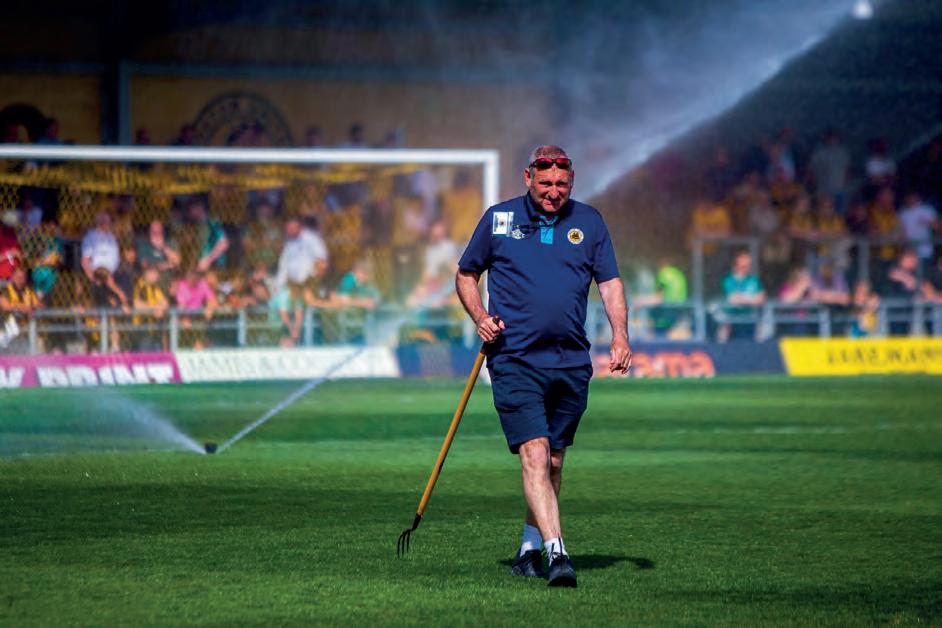
Above
Below
clubs shouldn’t put too much pressure on themselves. You should work with what you’ve got and, as long as you’re working hard, that should be good enough.”
Jim acknowledged the importance of trust and support from the club’s leadership: “I have my budget and targets; and from that you have to take charge and plan, which the club has allowed me to do independently. They’re not constantly checking in and, when you have a good relationship with the Board, that helps reduce stress and pressure. They trust my opinion, and that allows me to get the best out of what we have.”
“Even though the grounds team is small, I never feel like I’m working alone. At the start of this year we took on an apprentice and we have five volunteer matchday staff. It’s a family-run club and everyone knows you. My girlfriend
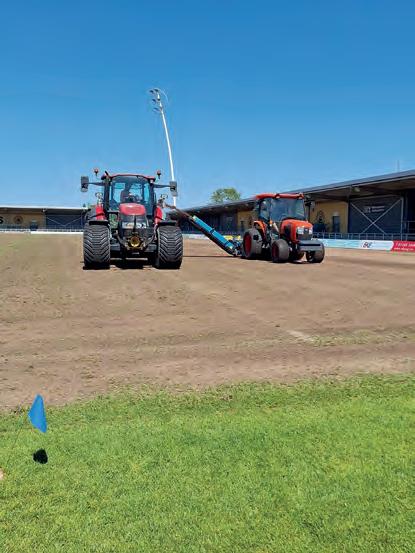

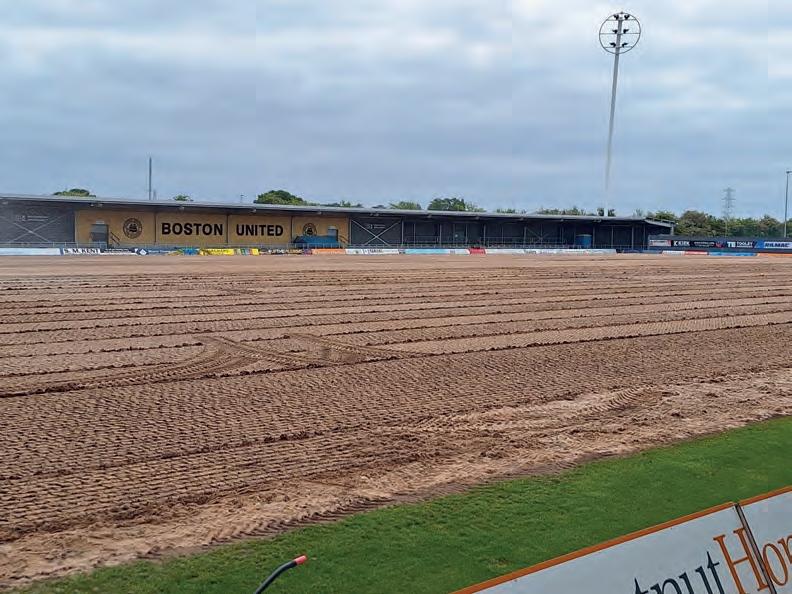
colossal as the pitch has been down for five years. We’ve had to add a lot of fibre at a significant cost - we’re not a big club so this is always a concern. I presented three options to the chairman, all at different price points, and he chose the most expensive. The idea was to prioritise the long-term welfare of the pitch.”
“I try to simplify renovations to fans and people who ask ‘why I have torn up the pitch’. I explain that these things are necessary for the long-term future of the surface and playability. By no means do we have the best pitch, but i believe it is one of the best in the league - and that often comes from hard work and investment.”


























Cricket ground covers have come a long way. Traditionally made from heavy canvas, these early covers offered basic protection but were difficult to handle and lacked durability in adverse conditions.
Over time, materials evolved to PVC, which improved waterproofing and ease of use, followed by polyethylene, which offered further enhancements in strength and reduced weight.
Other innovations, including the ability to inflate the covers to help shed water quickly and specialised coatings have helped further enhance performance by allowing the grass to
‘breathe’ more effectively while covered. Today, materials like Pro-Tech Cricket Sheets, which represent the next step in pitch protection technology are a huge advantage. Designed specifically for the modern game, made with a base fabric of DTEX nylon, these sheets combine lightweight handling (at only 190g per square metre) with durability and strength.


the pitch and square within three minutes with reduced manpower, saving both time and expense. The ergonomic designs mean that it also provides excellent opportunities for generating sponsorship and advertising revenue – an increasingly important requirement for the county game.
Covers are an essential tool for any sports ground. Their primary role is to protect the square or court from rain and maintain consistent playing conditions. But, the quality of your cover makes a huge difference.
The Pro-Tech cloth has been engineered with cricket in mind. It’s lightweight for ease of handling, strong and durable to withstand repeated use, and this unique design helps to reduce the risk of disease and turf damage under the cover. Whilst the Pro-Tech sheets can be left down for extended periods without killing the grass, it’s worth noting that the natural environment is always best for turf health. As with any cover, they shouldn’t be left in place unnecessarily for long durations.
The specialised UV Stabilised coating on ProTech covers is designed for the unique demands
of cricket, ensuring water rolls off efficiently while shielding the square from excess moisture to make sure play gets straight back on.
Best practices for using and maintaining your covers
To get the most out of your cricket ground covers – and ensure they last for years –here are a few practical guidelines:
● Remove water before lifting: Before pulling covers off the pitch, remove as much water as possible. Pulling covers with standing water can damage the material.
● Protect when not in use: If the covers are left pitchside, use a protective cover to prevent damage from spikes. Tiny pinprick holes from players’ boots are hard to detect

but can compromise performance.
● Be wind-wise: Covers can easily turn into sails if mishandled in strong winds. Always secure all eyelets with robust pegs and avoid moving covers during gusty conditions.
● Respect the equipment: Treat covers with care and respect when deploying, storing or transporting them. Poor handling is the most common cause of premature wear.
● Store dry and off the floor: Covers should be stored dry, ideally off the ground on pallets and in a rodent-free indoor space. At the end of the season, clean and dry your covers before storage to maximise longevity.
When buying covers, it’s important that they meet the specific requirements.
For more information or to speak to our team about custom solutions, visit www.stuartcanvas.co.uk

Stuart Canvas, don’t just sell covers – they design and manufacture bespoke solutions tailored to your pitch or court. They offer a wide range of ground cover options, from traditional flat sheets to mobile pitch covers, inflatable covers and hover covers. Their clients benefit from the latest manufacturing technology and expert guidance on the most suitable product for their unique requirements.
They have spent decades protecting cricket pitches from the unpredictable British weather. As the market leader in manufacturing high-quality sports covers to all major UK and European grass events and supplier of pitch protection to all 18 first-class county cricket clubs, they understand both the tradition and the innovation that go into ensuring cricket continues to be played on the best possible surfaces.
Their commitment to quality and innovation means they’re trusted not just by the cricket community, but by the UK’s major grass tennis tournaments too. Their dedication to performance, durability and service is why they remain the top choice for sporting institutions across the country.
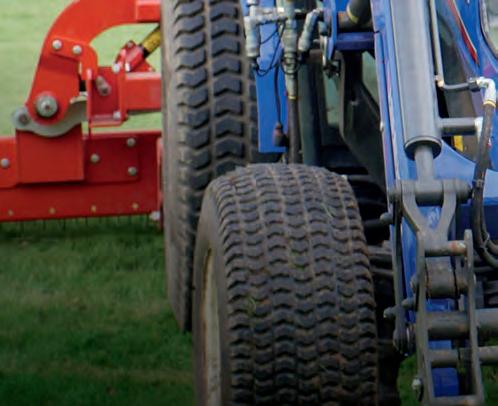





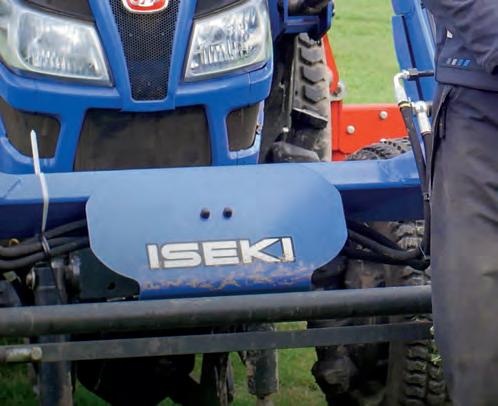

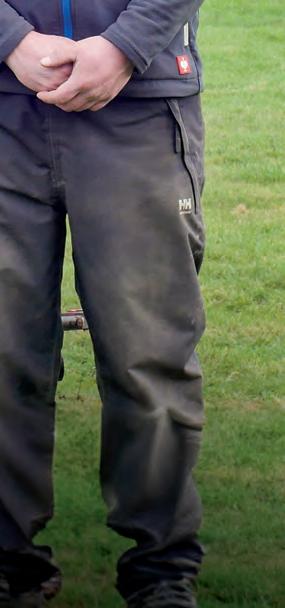
“We needed a tractor to carry out a wide range of tasks, the TG6675 had the lift capacity of 1,680kg and big 67hp engine so we could use all of the current implements. We now also run a blower on the front of the tractor along with woodchipper.
“The PTO switch on the outside of the tractor stops you having to keep jumping in and out of the cab, great feature for us. Front loader moves all our loose materials easily and the pallet forks can be attached to keep everything neat and tidy in the yard
“It is a solid yet compact tractor which is perfect for getting to every area of the golf course. It has been invaluable since day one, the complete package and the best tractor we came across.”
Pete Allen, Gerrards Cross Golf Club
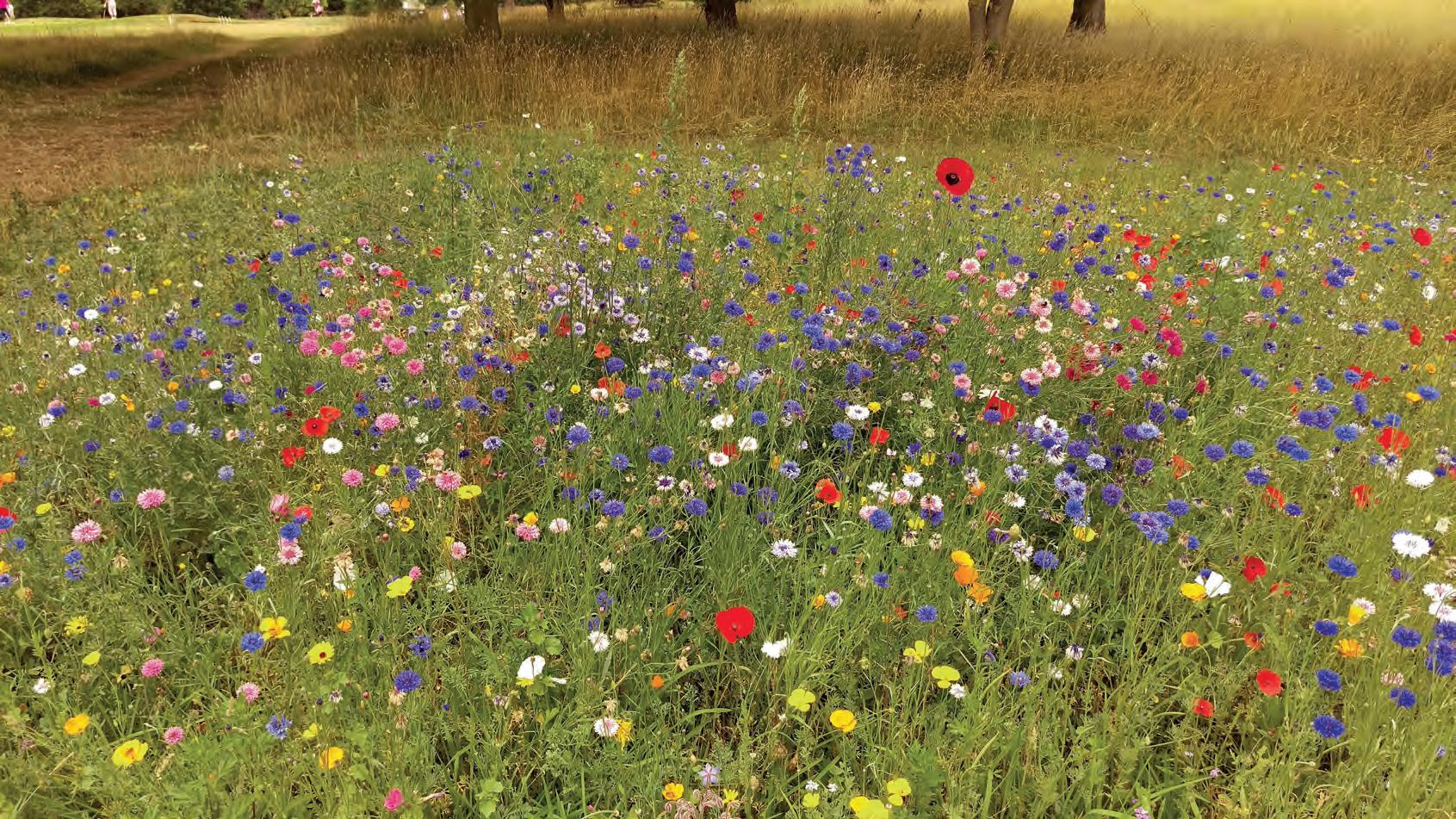
Conservation Greenkeeper at Woodhall Spa Golf Club, Stephen Thompson explains the benefits of wildflower areas….
As you go for a walk on a warm summer’s day - perhaps in your local park, on a golf course, or through a woodland - your senses might pick up the presence of wildflowers. A gentle breeze may carry their scent to you, or you may notice a burst of colour that brings a smile to your face. But by the time you get home, you might have forgotten all about them.
Do we take flowers for granted, assuming they’re simply there to look or smell nice? Do we realise how vital they are to our natural world?
Wildflowers are essential for biodiversity. They provide food and shelter for a wide variety of
wildlife and play a crucial role in maintaining healthy ecosystems. They form part of the food chain: more wildflowers mean more insects to pollinate them. More insects lead to more birds that feed on them, followed by larger birds and other animals higher up the chain.
Wildflower areas contribute to stable soil structure thanks to their complex root systems. When sown in poor soils, they can improve soil quality and help reduce flood risks by soaking up rainwater and preventing surface run-off.
When people think of wildflowers, they often picture bees buzzing around in gardens or meadows, feeding on nectar and collecting pollen. However, it’s not just bees that pollinate

flowers. Butterflies - and more importantly, moths - also contribute significantly. Since bees and butterflies don’t fly at night, moths take over pollination during the evening.
There are roughly 2,500 species of moths in the UK, compared to just 59 species of butterflies (including two regular migrants: the Painted Lady and the Clouded Yellow). This shows how essential moths are. (Note: not all adult moths feed - they gain their nutrients during the caterpillar stage.)
There are approximately 270 species of bees in the UK, including solitary bees, honey bees, and 24 species of bumblebees. All play a vital role as pollinators.
Bees do more than just pollinate pretty flowers in meadows. They are responsible for pollinating many of our food crops, including apples, cherries, strawberries, tomatoes, and even global crops like nuts and coffee. (Where would we be without our daily cup of coffee?)
Many people are now aware that insect populations - particularly bees - have declined dramatically over recent decades, not only in the UK but worldwide. Insects are crucial for food production. Without them, our world would be drastically different.
In a previous issue of the magazine, we discussed how to prepare wildflower areas on
Do we take flowers for granted, assuming they’re simply there to look or smell nice?
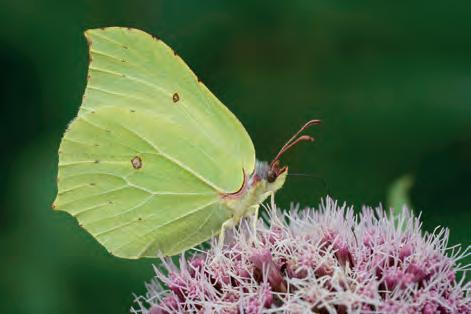
golf courses. By July, you should be seeing the results: areas rich in nectar and pollen, bursting with colour, and hopefully teeming with insects. Take a walk through the flowers, observe the different species, and you might be surprised. Make notes of what you find and repeat the survey annually to build a picture of insect activity in your area.
Wildflowers can offer enormous mental health benefits. Whether you’re walking through your garden or a wildflower meadow, the scents, colours and peaceful environment can be deeply relaxing. Nature is good for the soul! Learn more: www.wildlifebcn.org/wilder-wellbeing
Wildflowers also provide economic benefits. They can help rejuvenate towns, cities and rundown areas, making them tidier, more colourful and more appealing to visit. More visitors mean more money flowing into the local economy.
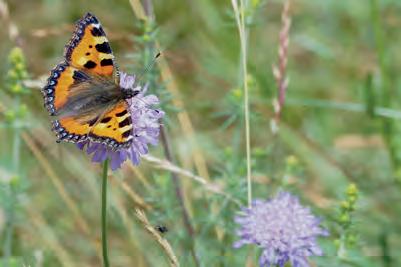

Above
Left A yellow male Brimstone butterfly, Gonepteryx rhamni sipping nectar from a pink Eupatorium cannabinum, hemp-agrimony, flower.
Top The small tortoiseshell butterfly (Aglais urticae).
Bottom Comma butterfly.
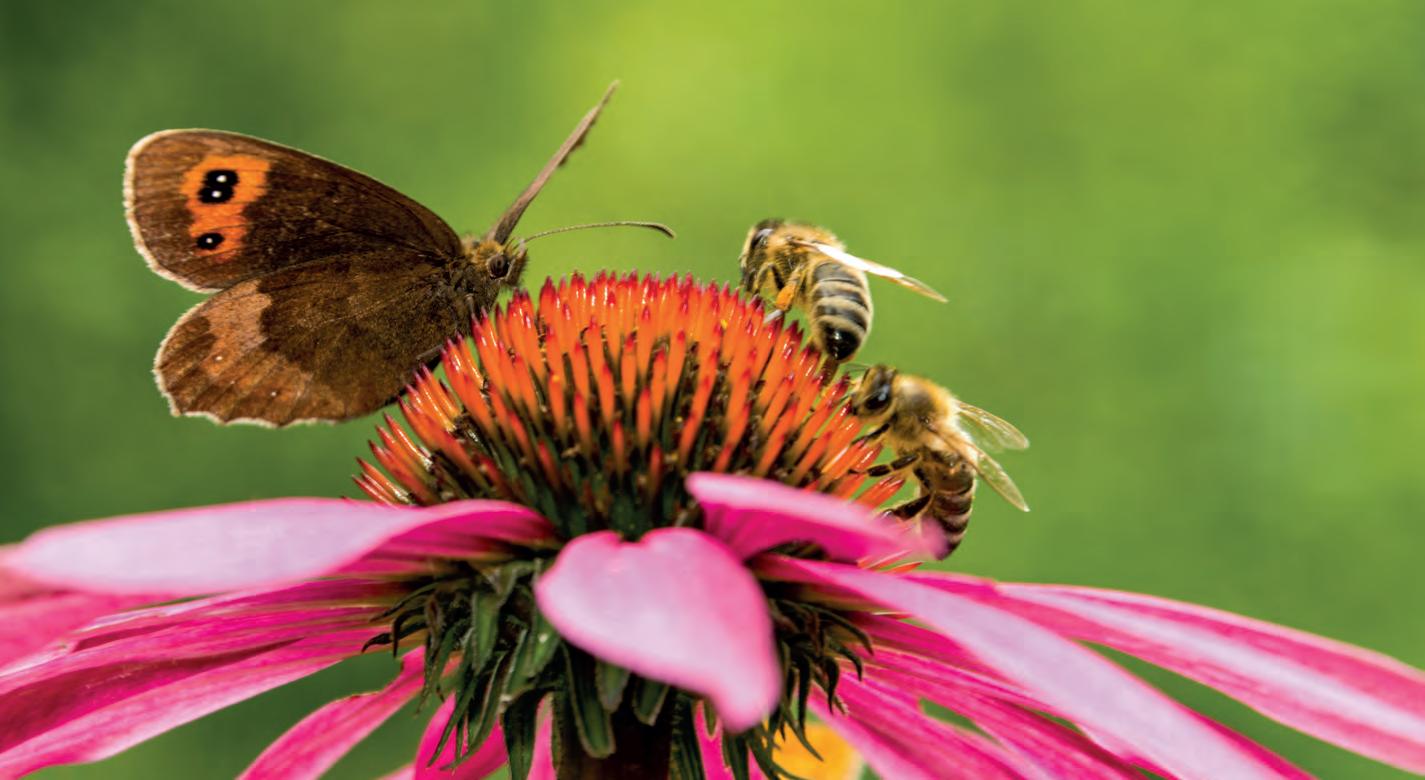
Poppies are widely used as a symbol of remembrance for those who died in the two World Wars.
Medicinal properties
Plants and flowers have been used for centuries in herbal medicine. Today, modern science continues to discover their benefits.
For example:
● Snowdrop and daffodil bulbs contain galantamine, used in Alzheimer’s treatments.
Some flowers are also used in teas - like chamomile, lavender, jasmine and hibiscus.
Watch this video to learn how to make lavender and chamomile tea: www.youtube.com/watch?v=8E4Y1_7-mss
Since the 1930s, the UK has lost 97% of its wildflower meadows. Just imagine how many insects have disappeared along with them. But we can all help - even a small window box can make a difference. Your garden, a golf course or a patch of public land can all host wildflowers. All it takes is one packet of seeds to start making an impact.



● Self-heal is used to treat inflammatory bowel disease, sore throats and internal bleeding.
● Compounds from foxglove (pictured below) are used to produce digoxin, a drug for heart conditions.
Learn more: www.rhs.org.uk/digital-collections/ healing-garden
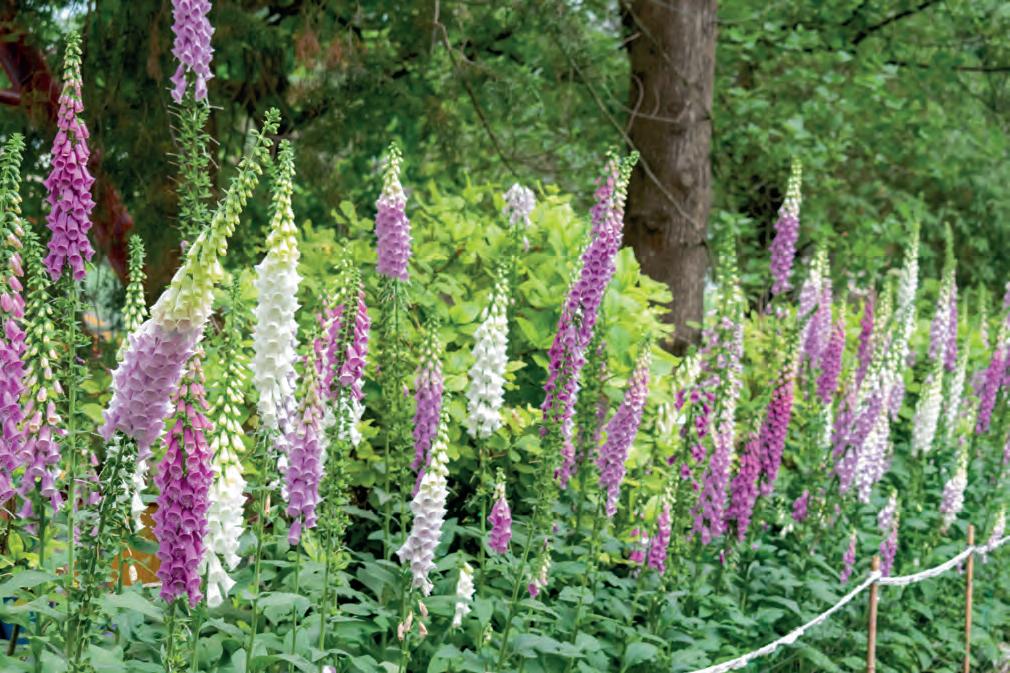


























400+
INDUSTRY-LEADING BRANDS 55+ COUNTRIES REPRESENTED













7, 300+
















GROUNDS MANAGEMENT PEERS 19+ HOURS OF FREE EDUCATION













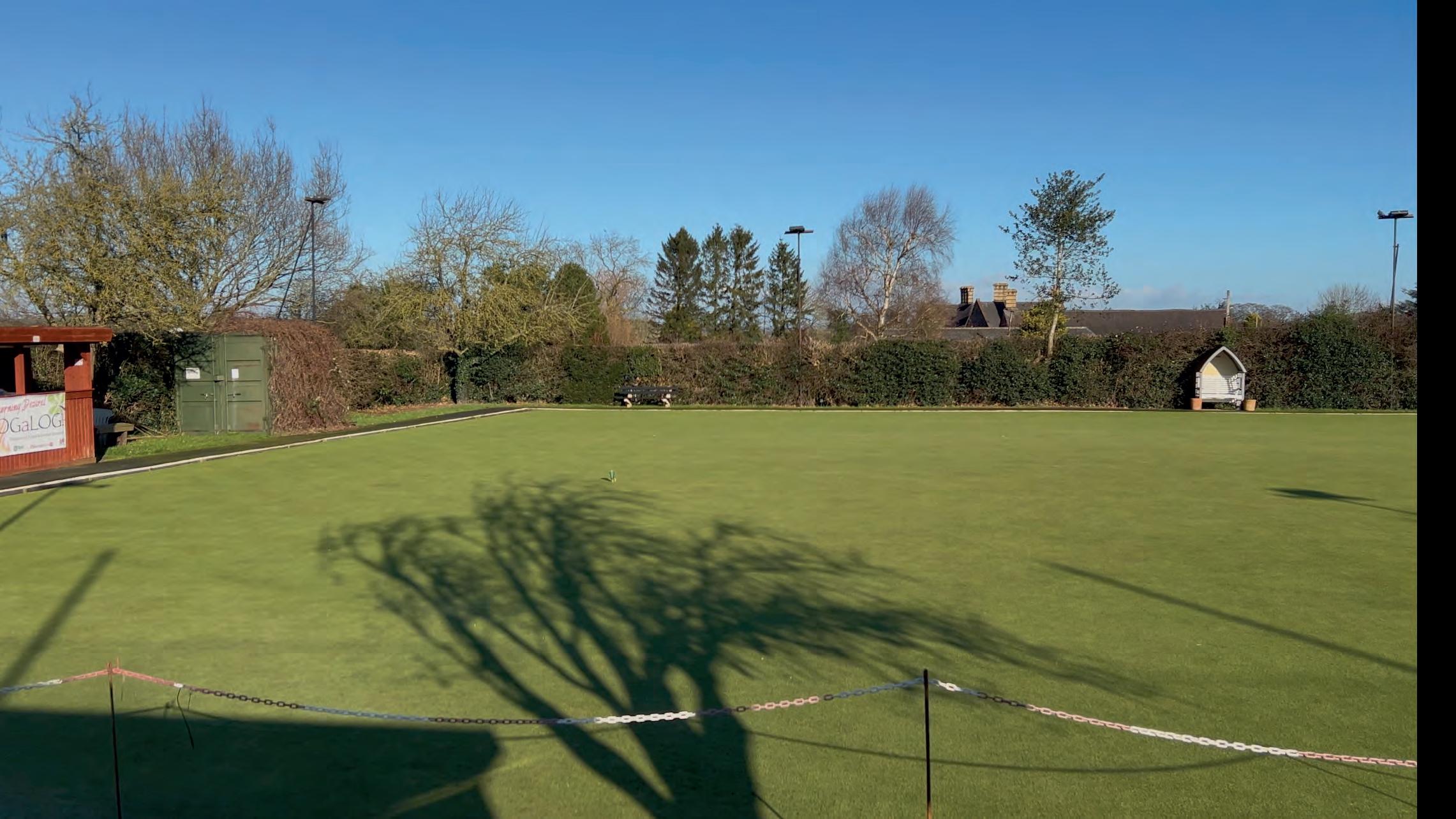

After an amazing 47 years working for the prestigious Shifnal Golf Club, Head Greenkeeper Peter Leath decided it was time to sit back and enjoy a more leisurely lifestyle by taking early retirement... of sorts!
One of Peter’s work colleagues, a keen bowler, suggested he try his hand at bowls as a relaxing new pursuit. Pete took this on board and joined three local clubs. He soon came to love the sport, encouraging his partner, Sarah, and loyal dog, George, to join him. Edgmond Bowling Club became their preferred choice.
Being a council-owned green maintained by contractors, the surface was nothing compared to the highly manicured greens Pete produced at Shifnal. It was time for a change, and it wasn’t
long before Pete couldn’t sit back any longer. With little persuasion, he was encouraged to put his boots back on and improve the green at Edgmond. His goal was to provide a surface as close to the high standards of his golf greens as possible. As he says, “The same but different.” So, the seeds were sown, and Pete made it his mission to succeed.
As the pandemic put us all into lockdown and restrictions were in place, he was able to carry out extensive mid-season renovations without disturbance. The green was heavily scarified and Verti-cut in multiple directions to thin the

However, Edgmond called, and here I am still

sward, removing thatch, moss and undesirable grasses. Bare areas were spiked and seeded, followed by fertiliser applications. With regular mowing, the green started to improve.
Significant surface improvements
Now, with over three hundred hours of maintenance carried out per year - including mowing an average of four to five times a week in the summer, and once every three to four weeks in the winter (when conditions allow) - improvements in the performance of the green have proven that you get back what you put in.
On the golf course, year-round play is expected as long as conditions are favourable. This is something Peter is keen to encourage, but he also aims to limit overuse to allow recovery time for the bowling green.
“We occasionally invite the Bandits Bowls Winter Series for their weekly competition, and also the Edgmond Winter Shield, an open competition played between Christmas and New Year, where we have sixty-four people playing over two qualifying days and a finals day.”
His passion: A year-round 5mm sward
“Putting the green to bed” is not a sentence in Pete’s vocabulary. “You can’t carry out autumn renovations, close the gate, come back in March, and expect the green to be ready to play.”
Regular visits to remove dew, mow when necessary, and monitor pests and disease are a must.
“Not everything has been easy. Worm casts, disease, moss and thatch all had to be brought under control. Products that were once at our disposal are now banned or restricted, so we have to find new ways to manage these issues.”
Renovations
Peter carries out all in-season maintenance on his own but knows only too well the importance of end-of-season renovations. As these tasks require more substantial equipment, he employs the services of former fellow Greenkeeper/Groundsman Paul Mytton of Fine Turf Maintenance.
“I’ve known Paul for a long time. He was previously Course Manager at Lilleshall Hall and worked at other local golf clubs. He was also known for his time as Head Groundsman at Villa Park, where he was highly commended and won awards for the pitch in the Premiership.”
Paul arranges the supply and delivery of all materials to scarify, overseed, top dress and

Verti-drain the green. Although it’s a busy time of year, he now assists in renovating a few other local greens while in the area, adding to the 35–40 greens he currently works on.
How have players reacted to the improvements?
Comments have been positive since Pete took over management of the green.
“It is always nice to receive positive feedback; it makes all my efforts worthwhile. Although members now expect away greens to match the same high standard, I couldn’t do it without their support and fundraising efforts.”
He highlighted the financial challenges faced by small clubs. With a fair number of greens closing within a twenty-mile radius, he is keen to encourage others to join.
“Membership is so important to keep these clubs going. We need to promote the sport to all ages, especially the younger generation.
We have doubled our membership at Edgmond to around seventy-five over the past five years, through social media and open days.”
More members = more income.
“At Edgmond, we are lucky to have a membership willing to help. Food and beverages are available in the clubhouse for competition and open days, with funds raised being reinvested in the club. Quiz nights, bingo nights, football cards, and more all help us to survive. We aren’t just a bowling club; we are lucky to have a great social side too.”
The journey
Peter attended Shifnal Secondary Modern School, and with a golf course on site, he was always keen to help out. Upon leaving school, he started his full-time career in sports turf at Shifnal Golf Club, where he remained for forty-seven years, working through the ranks to become Head Greenkeeper.
“During my time at the golf club, I learnt everything I needed to know about turf care. I saw nineteen greens chairmen come and go and worked with some great lads, members and visitors. Sometimes they were hard to please - a course is only as good as the last round played - but I still enjoyed all the challenges that came our way.”

“Early retirement after all those years seemed right for me. Walking the dog and bowling with Sarah seemed the way to go. However, Edgmond called, and here I am still maintaining greens.. I wouldn’t have it any other way. I’ve even started working to help improve a few other local greens. It’s something I genuinely enjoy.”
Article by James Kimmings.
Below
Peter received the Best Kept Green in Shropshire 2024 award from now retired Head of Marketing for the Howardson Group, Roger Moore.

“Not everything has been easy. Worm casts, disease, moss and thatch all had to be brought under control. Products that were once at our disposal are now banned or restricted, so we have to find new ways to manage these issues.”
Earlier this year, Edgmond Bowling Club were awarded the title of Best Kept Green in Shropshire 2024 - a competition sponsored by Dennis and SISIS.
The initiative aims to improve the standard of greens across the county, recognising the hard work of greens teams and providing them with valuable feedback to enhance their maintenance programmes. Each year, the competition grows in popularity, with a record number of clubs entering in 2024 - a testament to the ongoing improvements in bowling greens throughout Shropshire.
Pete carries out all in-season maintenance on his own but knows only too well the importance of end-of-season renovations. As these tasks require more substantial equipment, he employs the services of former fellow Greenkeeper/Groundsman Paul Mytton of Fine Turf Maintenance.
Drawing on his greenkeeping background, Peter implemented a rigorous maintenance routine, including verticutting and aerating the green, to encourage healthy growth. He also invested in a SISIS Supaturfman, using it up to 16 times a year.
His efforts have paid off, with Edgmond’s green now widely praised for its smoothness and playability. “There have been a lot of really positive comments about the green,” Peter said.
“I’ve known Paul for a long time. He was previously Course Manager at Lilleshall Hall and worked at other local golf clubs. He was also known for his time as Head Groundsman at Villa Park, where he was highly commended and won awards for the pitch in the Premiership.”
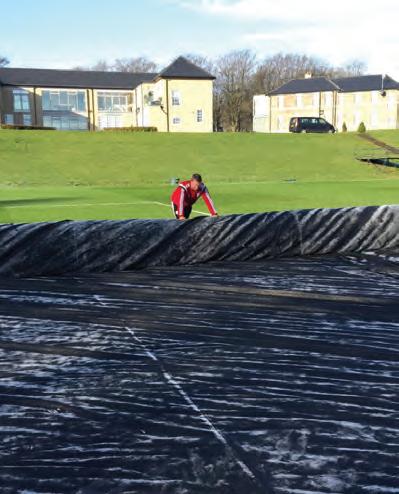


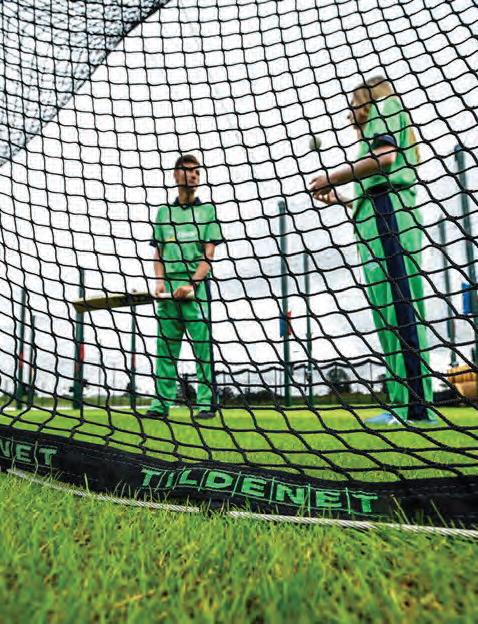
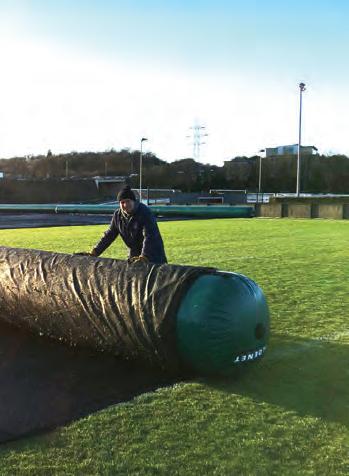


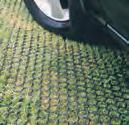
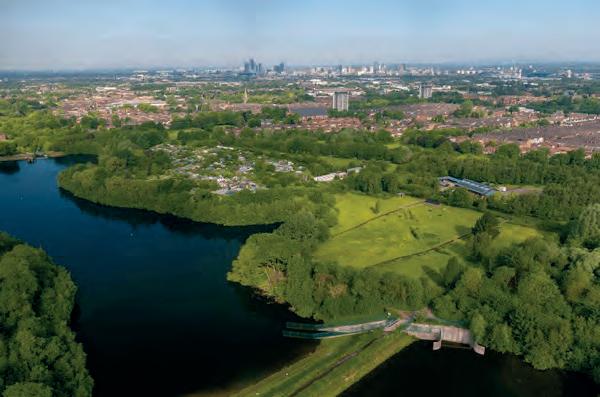

Parks across Britain have fallen under the cosh of widespread cuts in leisure provision over the last few years. As a discretionary service, sport and leisure can become a lower priority for councils already struggling to meet other commitments.
In Manchester however, parks are enjoying a welcome resurgence as the city council realises a wide strategy for regenerating valuable green spaces.
The city’s first park in more than a century – Mayfield - opened last year near Piccadilly Station, offering 6.5 acres of varied environments within a new neighbourhood, including lawns, wetland areas, wildflowers, hundreds of trees and 120,000 shrubs and plants, all aiding carbon capture.
Falling within Manchester’s parks strategy is its development of destination spaces – places not only optimising the ‘green lungs’ within the council boundaries but also creating ‘go to’ hubs for the local community to take ownership of, in
the wider sense.
Debdale Park in Gorton, east Manchester, a former manufacturing powerhouse regionally, nationally and abroad, is one of these – its 130 acres the standout green space among the town’s eight parks.
In becoming a designated destination, Debdale is set to celebrate return to the heyday of its provision in the 1960s. A huge expanse of grass features prominently, a remnant of extensive footballing commitment, now planned to return to life to serve rising demand.
“Seven football pitches provided Gorton with plenty of Sunday sport back then,” recalls Allan Grafton MBE, who at 80, is the energetic chairman of Friends of Debdale Park.

“New money from Government to Manchester City Council is earmarked to address drainage issues across the old playing surfaces to enable us to offer football again.”
Thanks to this hardworking, resilient group of Friends, Debdale can deliver a wide variety of indoor and outdoor activities.
Allan and wife Doreen’s commitment to Debdale’s future is proof enough that the park future and its scope of facilities is in good hands. “It’s always a battle for money to fund new provision,” says Doreen. “Long term plans include a cafe and nature centre,” she adds.
A vision already realised is the innovative Wheels For All initiative, held each Tuesday to extend mobility for disabled people of all ages. The project included creation of a bespoke track for attenders to ride their special bicycles around. It was in full swing on the day I visited –certainly an unusual, though welcome, addition to a park’s engagement with its local catchment.
The Friends are quick to pursue any available funding streams. Manchester City Council’s Neighbourhood Improvement Fund (NIF) grants each ward £20,000 annually to help voluntary and community groups ‘make their neighbourhoods better places to live’.
Funding helps groups stage events and initiatives to benefit local people, and that are
“environmentally sustainable”. Grants can span improvements to the physical environment, tackling climate change through greenIng, rewilding, increasing composting, recycling and reducing waste. “Usually, this amounts to £2,000 to £3,000 a year,” Doreen says, “and was used recently to buy and install an accessibility ramp for the bowling club.”
The Friends is not the only volunteer group steering the park’s future. Debdale Diggers appear each Wednesday morning to undertake various horticultural tasks. “They are corporate volunteers working for the Co-op,” explains Ricky Martin (no, not that one), the new park ranger, fresh from working in the besieged hospitality sector.

“Some 15 in number, they help their employer meet its CSR commitments and support the work of the 11 Friends regulars,” he adds. “Olwyn Taylor, another Friend, co-ordinates their activity, which includes weeding and planting. She visited Japan and sourced a species of ivy ground covering, which the Diggers have been planting out.”
“Debdale would not be the vibrant park it is without her help and that of the other Friends,” Ricky adds. “We can attract 6,000 people on a good day. There’s always plenty going on, like the vintage car shows, the bowling club cup and in July we stage Carnival Day, when the Lord Mayor of Manchester will be attending.”
Along with husband Fred, who runs activities in the bustling Men’s Shed, Olwyn is “a key
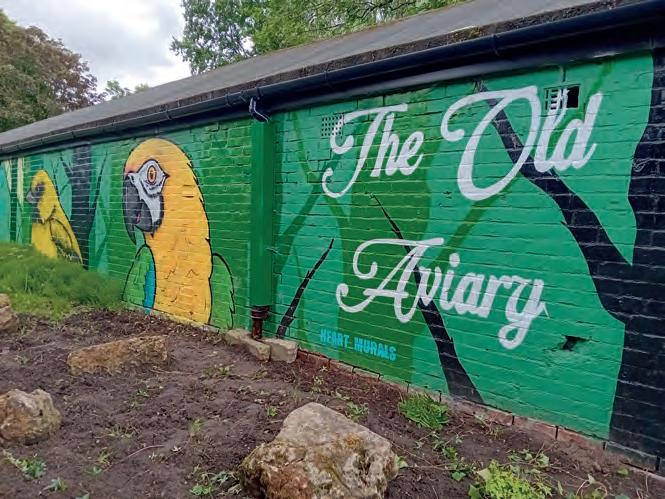
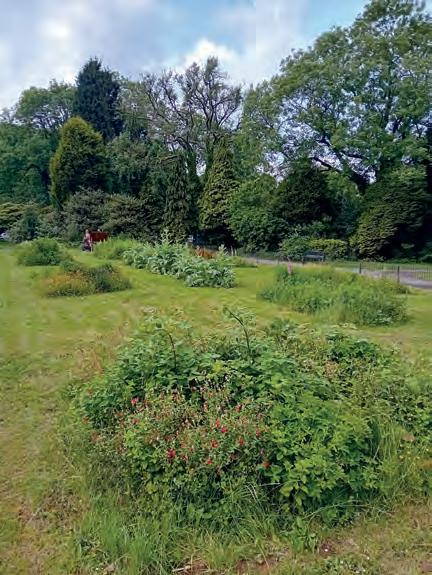
cog in the wheel”, Ricky adds, “co-ordinating volunteers to tend the rose and heritage gardens and prepare the ground for wildflower plantings.”
Ricky, who oversees three parks, reports to line manager Jenny Butler who has responsibility for all 18 parks in Gorton and nearby Levenshulme. “My main focus is the go-between for stakeholder engagement – It’s a role I’m really enjoying,” he says.
Returning to the planned £750,000 project to bring back football to the park, Ricky explains: “Three or four football pitches will host non-league games, including women’s and juniors. Abbey Hey FC caught wind of the plans and has already applied to stage its games here.”
As Manchester FA’s longest serving member, Allan may have proved a key element in Debdale’s application for funding, which the team is “optimistic” about landing.
Grasscare is left to the city council’s dedicated team, who gang mow the extensive areas at least monthly – weekly in the main growing season, while its arbor team tend the many trees within Debdale’s boundaries.
Activities run year-round. Indoor bowling in the outdoor centre from September to March, Fred’s Men Shed on Tuesdays, Olwyn’s Spanish lessons same day, sewing, upcycling workshops, Debdale Ramblers on Thursdays and cycling club on Monday mornings. Doreen raised funding for the latter activity, with governing body Cycling UK supplying picnic tables and safety surfaces.
She’s now pushing to fund an extractor fan for the Men’s Shed to remove the wood dust the activity generates. Externally, the building is dramatically painted with various exotically plumed birds, perched in a forest setting. “The
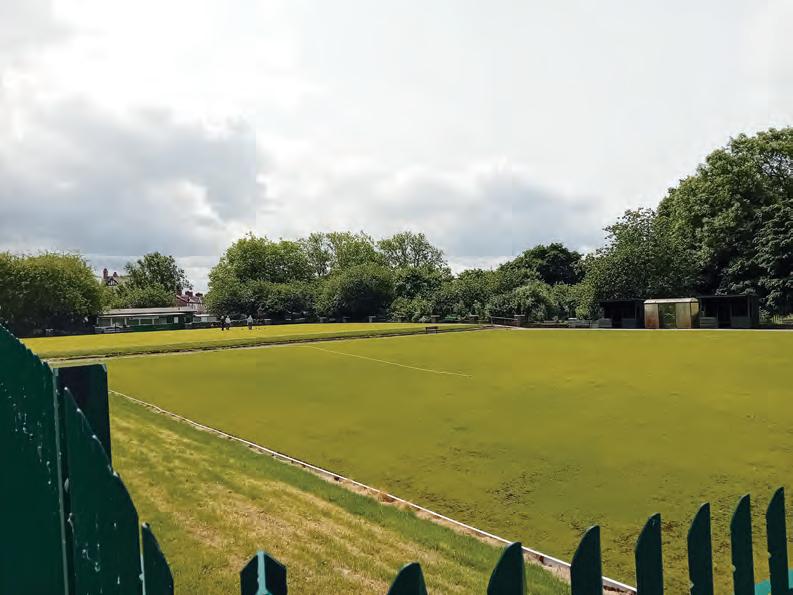

idea was Ricky’s,” Allan reveals. “Local artist Richard Heart specialises in murals. We’ve named it The Aviary Room to reflect its former use.”
Holding a coveted Green Flag Award, gained ten years ago (although Allan tells me the parks element of the scheme is on hold
currently), Debdale displays extensive herbaceous borders and landscaped areas to set off its skate park, basketball court and three hard surfaced tennis courts.
Half hidden among the greenery, lining the playing perimeter fence, is a stone epitaph to an eminent resident – Labour politician Sir Gerald Kaufman was MP for Gorton from 1970 to his death in 2017. ‘Patron of The Friends of Debdale Park’ the inscription proclaims.
Nearby is the children’s play park, while on the outskirts lies the outdoor centre watersports













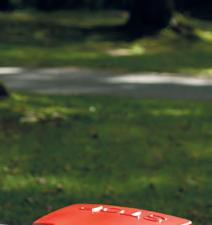









facility offering kayaking, dinghy sailing and canoeing on the adjacent picturesque reservoirs.
They present a ‘green, tranquil haven in a busy urban area’, with cycling and walking trails the park website states. An aerial shot of the water bodies, surrounded by attractive woodland, could fool you into thinking you were in the Lake District, such is the maturity of the setting.
Most prominent of the park’s sporting spaces are the twin Crown Green rinks run by Debdale
The town’s heritage is being remembered ever more forcibly as other local parks recall memories of the famous speedway track.
Internationally renowned Belle Vue fell foul of Covid, closing amid the lockdown to end decades of leisure service, including what was once Manchester’s biggest music venue.
“We’re committed to keeping the memories of Gorton’s heritage alive,” Doreen states, “because we are in danger of losing them.” The Heroes Wood memorial installed in Debdale five years ago is more evidence of that.
You feel her fears will not be realised as long as groups such as Friends of Debdale Park continue such sterling endeavours. What will ensure their own passion for the cause isn’t forgotten, however, will be bringing on a new generation with equal fervour to further enhance the town’s reputation.
As if reading my thoughts, Allan reminds me of the excellence of another of Gorton’s public spaces – its cemetery. “The first in Manchester to gain a Green Flag (2025),” he states proudly. “This year’s judges said they had never seen a cemetery as well kept.”
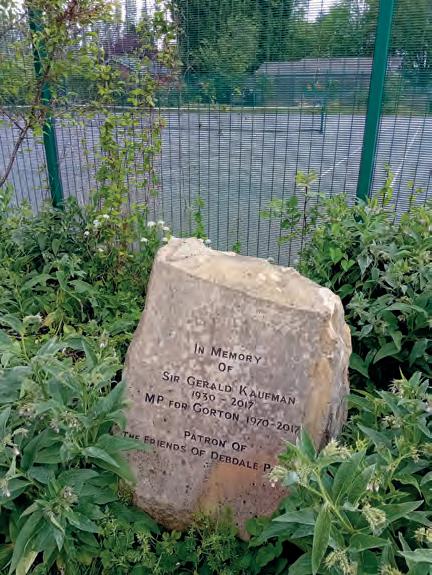
Bowling Club. “It’s popular with all ages,” Allan says, “and has a membership of 60 to 70,” – a pretty fair following given the turfcare costs besetting many clubs across the country, which have seen bowler numbers dwindle through ageing participants and poorly maintained surfaces, although this is being addressed now. These surfaces certainly looked in prime condition.
Created in 1823, the two hundred year-old space celebrated a time when Gorton was a hive of industry. Park plaques record the history of dyeing – the aniline works long since scrapped – steam locomotive manufacturing that supplied railway stock across the world and ammunition production.
Still active locally though is a company known throughout grasscare – Follows and Bates, which makes Qualcast mowers.
The then industrialists powering Gorton’s economy gave back to their community by helping fund huge green resources to introduce welcome breathing spaces for their workforces to relax in, away from the factories.
Before it became a park, Debdale had been the manorial estate of a wealthy landowner, who bequeathed it as a public amenity.
Elsewhere in the borough, sporting provision is emerging, the payback price of new housing. “Sadly, we lost Gorton Road football pitches,” Doreen reports, “but two are being created at Mellans Playing Fields under Section 106, where 600 homes are being built.”
Article by
Greg Rhodes.

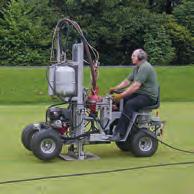

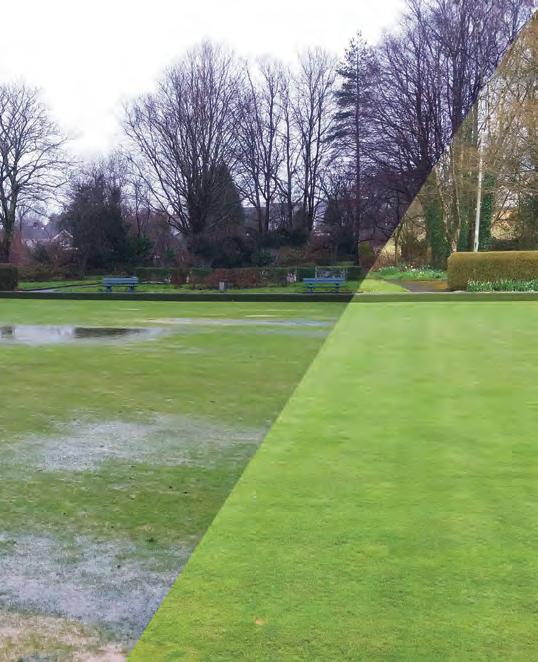



























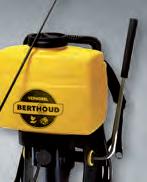





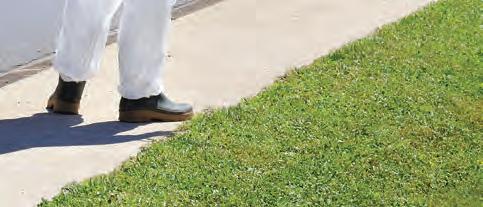
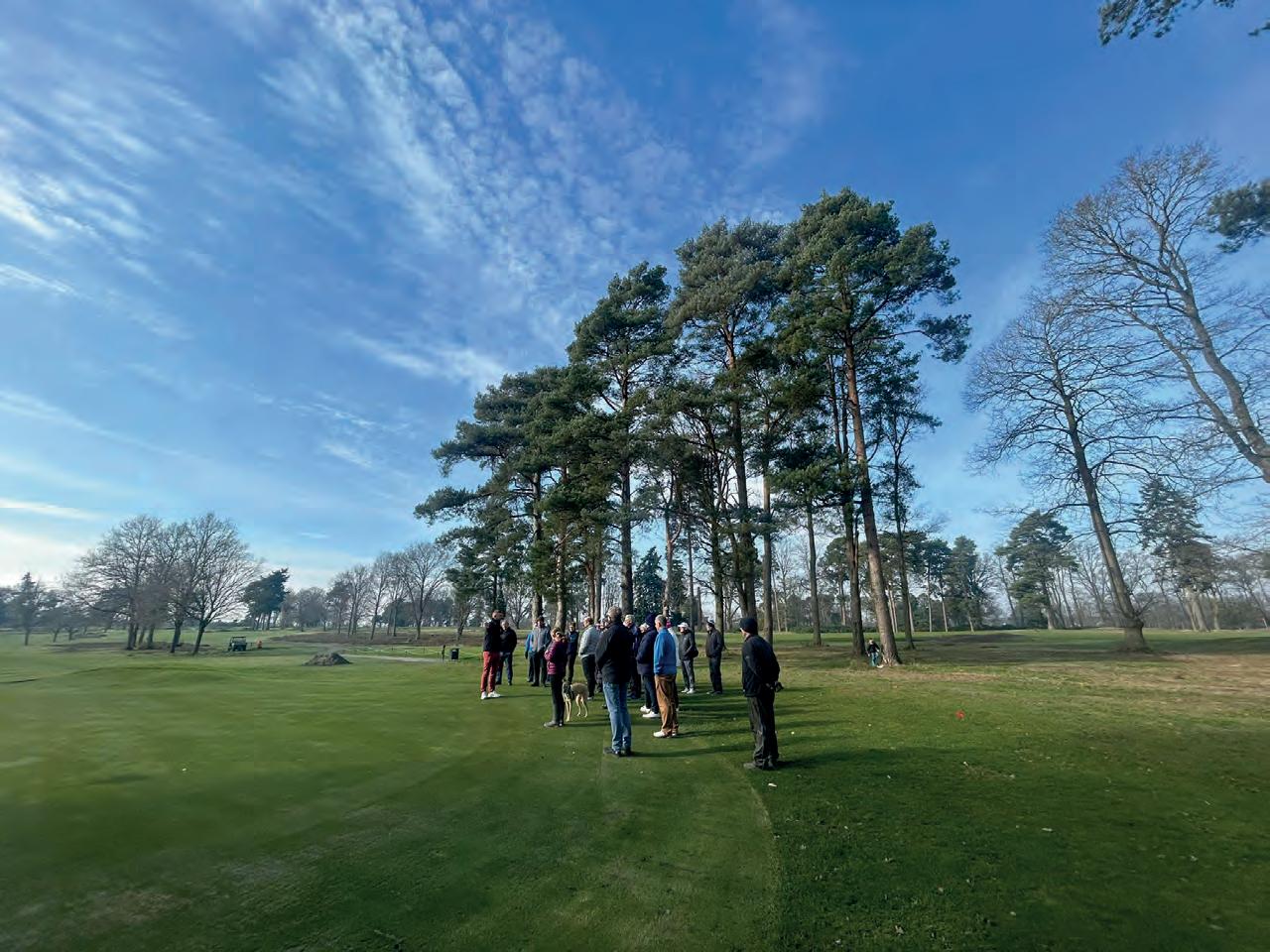
Deputy Course Manager Andy Reason was recently named Conservation Champion of the Year. An award celebrating individuals who make significant contributions to the success of environmental and ecological management.
Andy began his career at Reading Football Club before moving to Castle Royle, Sunningdale and St George’s Hill. In 2008, he joined North Hants Golf Club, where his passion for conservation really took off.
When did your interest in conservation begin?
It’s something I’ve always been interested in. One of the first books I bought when I started
working was A Practical Guide to Ecological Management by Bob Taylor. The club’s attitude really changed after COVID, with a focus on becoming greener. Sam Evans had just joined the team as Course Manager, and we started recycling our waste - initially as a cost-saving measure. Then we pursued the GEO certification, which was a key milestone, and things have really snowballed from there.

Have you implemented conservation projects on the course? How have you done this?
We’ve increased the volume of heather stands across the site using imported heather turf, heather scrapes, disturbing the seed bed with a Toro Procore, and even growing heather cuttings in a greenhouse. We’ve expanded wildflower meadows, conducted yellow rattle trials, built log piles and bug hotels, and installed bird and bat boxes. We’ve also introduced compost heaps and developed a tree replacement and planting plan. In addition, we’re carrying out carbon sequestration trials using Sida and have even rehomed fish from a local member’s pond. We collect used coffee grounds from local coffee trucks to add to our compost. We’ll literally try anything!
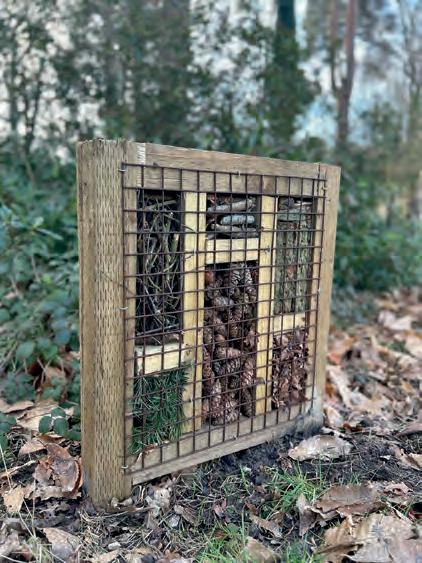

We actively seek to work with and share our land with local associations and societies. We currently have close relationships with Fleet Beekeepers (who make the honey we sell to our members), local birdwatching groups, the Hampshire & Isle of Wight Amphibian and Reptile Group, the Hedgehog Preservation Society, and Butterfly Conservation. Most recently, we’ve started working with the Hampshire Bat Group and Hampshire Swifts Group, expanding our commitment to wildlife conservation.
Do you think other golf courses should implement conservation projects?
Absolutely - it’s a great opportunity, and our members enjoy hearing our updates. The hardest part is just getting started. We had already implemented many initiatives without
Andy
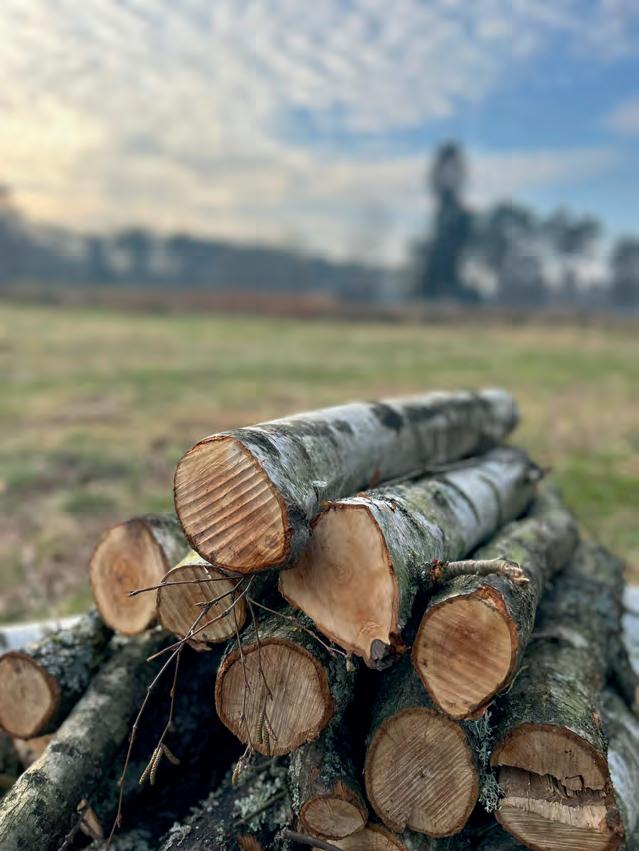
Above Andy discusses heather with apprentice Jack Stevens.
Below Rob Schofield, Hampshire and Isle of Wight Reptile and Amphibian Group (HIWAG), looking under one of the refugia.

fully realising it - until we took the time to sit down and document them..
It doesn’t have to cost a lot. We try not to throw anything away, we use recycled materials, and we even raise money from scrap metal skips. Over the past five years, we’ve spent less than £500 in total. We got our wildflower seeds using Turf Rewards, and we made all our bird boxes and bug hotels ourselves - initially as a bit of a joke during wet weather using old pallets from club deliveries. Now everyone is on board and coming up with new ideas regularly.
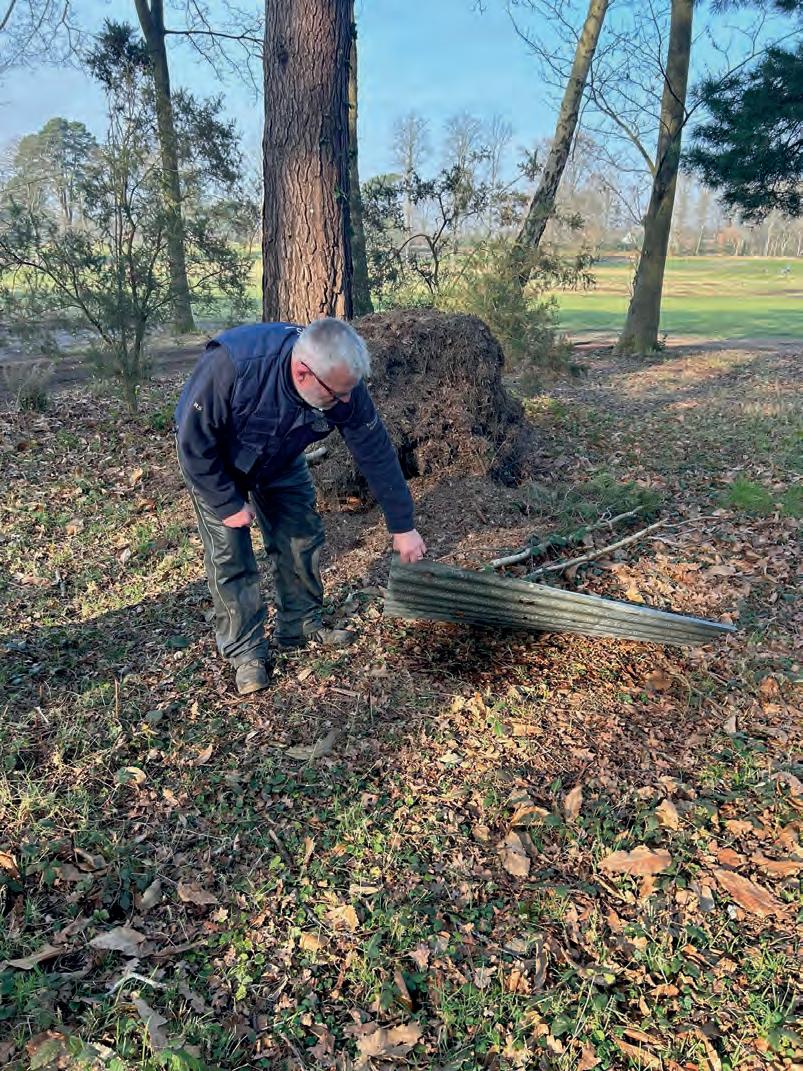
We’ve even created a compost committee within the greenkeeping team - myself, Paul Nield and Tom Ditchburn - to keep our sustainability standards high and implement new ideas. We also seek advice from local experts, and we’re currently planning our first breakfast meeting with all the local groups we work with - hopefully, they can support each other beyond the golf course too.
Have North Hants supported you in implementing conservation projects?
The club has been fantastic in supporting me and our sustainability committee, which includes members from each department and meets quarterly to discuss and implement plans.
We now have an active ecological management plan that we’re working towards and continue to improve.
Is it important that golf clubs and course managers buy into conservation?
Absolutely. It needs to be a team effort from the whole club, and it’s important to bring everyone along on the journey - showing the benefits for the club, golfers and the wider community.
Some of our club-wide commitments include the Big Butterfly Count, Big Garden Birdwatch, log piles, bird boxes and hedgehog hotels made from pallets and brash. We’ve also built compost heaps using old railway sleepers, and we now produce our own green waste to use on the course.
Have you faced any challenges in trying to implement conservation projects?
The biggest challenge is that we still have a golf course to maintain - that’s always the
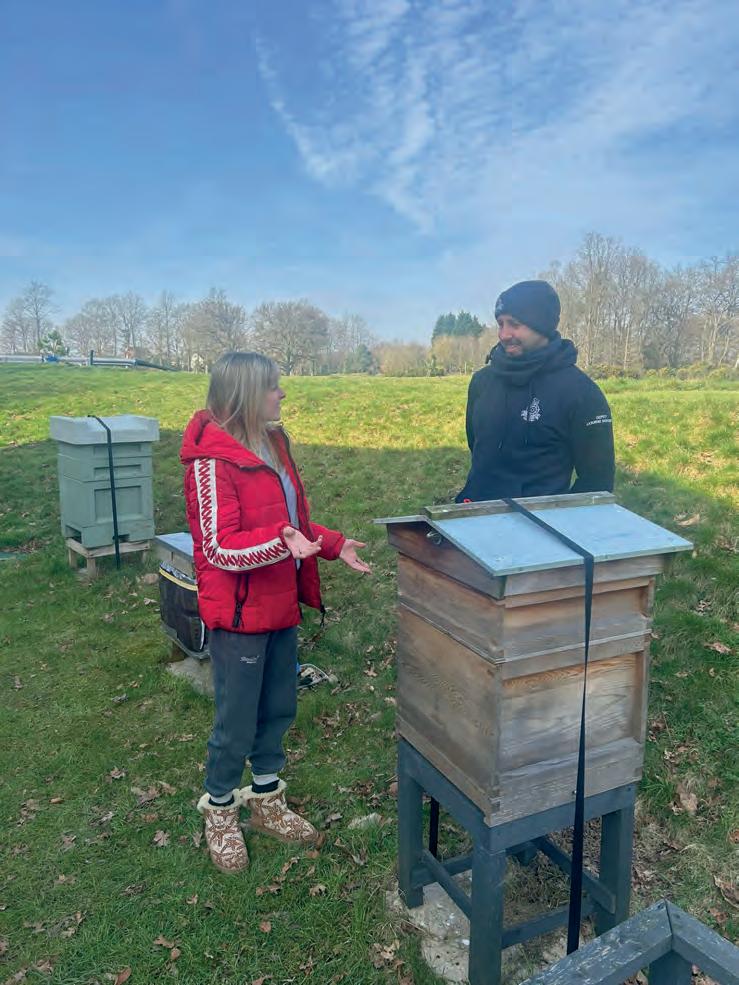
the past five years, we’ve spent less than £500 in total
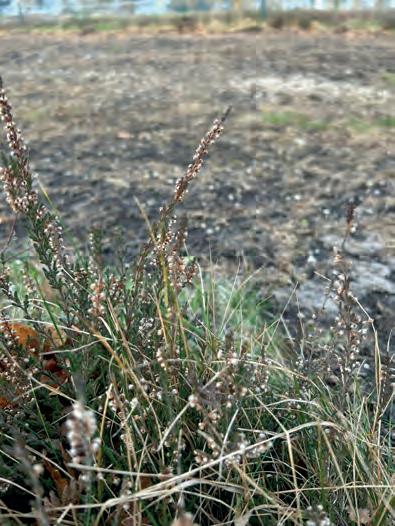
important is communicating these efforts to the wider community - to help shift the stigma around golf courses.
Many of our initiatives have been lowcost. Regular communication and member engagement are key - bringing them along on the journey allows us to keep building on our conservation efforts.
It’s also crucial that high-standard golf and conservation work in harmony - and they can. How did it feel to win the Conservation Champion of the Year?
It was, and still is, unbelievable - it hasn’t really sunk in. It’s an award for everyone at the club, staff and members alike. Everyone has bought into the project, and none of it would have been possible without them.
Have members reacted positively to the conservation projects?







Actively protecting conservation areas and wildlife habitats, both for now and the future, gives me a real sense of pride.
How important is wildlife on golf courses?
Historically, golf courses have been seen as bad for the environment. That’s why it’s important for clubs to take responsibility and try to mitigate their impact - ideally, becoming a force for good.
Green spaces are vital, and encouraging flora and fauna is only a positive. At North Hants, we’re surrounded by urban development, so providing a home for wildlife is essential. Equally
We try to communicate everything we do through social media, YouTube videos, member newsletters and regular course walks. We even started a wildlife sightings book in the clubhouse this year and are planning to add cameras to the bird boxes.
Members seem to really enjoy hearing about what we’re doing and some have even joined in.
We recently held a BIGGA First Green event, where a Year 6 class from a local primary school visited the course. We talked about the work we do with wildlife and ecology, helping to show children and teachers how golf courses can be environmentally positive - and hopefully inspire future careers in greenkeeping or conservation.



















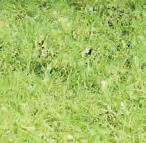





















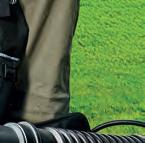





















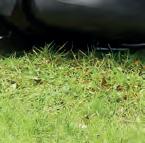
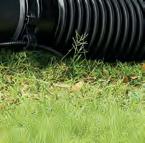


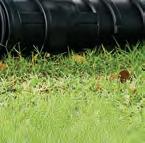

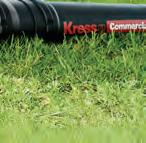
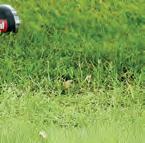
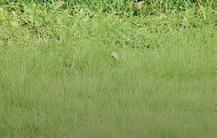














MORE POWER. LOWER EMISSIONS. NO COMPROMISES.




Every commercial landscaper deserves a robust, high-performance blower, but now you can choose to be environmentally conscious too. Designed with sustainability in mind, the Kress KC500.9 Backpack Blower is an uncompromising battery-powered alternative to traditional petrol leaf blowers.










With Kress QuietStorm™ low-noise technology, this 62 dB (@15m) blower is ideal for use in more sensitive environments such as golf courses, hospitals, schools, and hotels, ensuring minimal disruption to both workers and surrounding communities.

Strong vibrations and weighty equipment can leave a lasting impression even after the working day has ended. But with a breathable harness, no fumes, lower noise and less vibration, the KC500.9 provides a more comfortable and healthier experience for operators.











Speak to your local grounds maintenance machinery dealer today or learn more at kr ess.com









When the UK and Ireland host UEFA Euro 2028, the spotlight won’t just be on the players, it will be on the pitches too –and the grounds teams that ensure pitch presentation and playing conditions are of the highest quality.
For the first time, groundscare professionals have the opportunity to play a headline role in a major tournament when it comes to sustainability.
A tournament last attended by six million visitors and watched by over five billion spectators, it’s an opportunity to show that sustainability doesn’t just tick a box but has the power to make a meaningful, long lasting contribution to the industry on a global scale.
And it’s an opportunity that GreenGrounds –an initiative started by Bio-Circle, a specialist in environmentally friendly cleaning technologies, and Reesink Turfcare, a leading UK distributor of sustainable turfcare machinery – wants to make a reality.
In this article, we catch up with Mark Tomlinson, Head of Environmental and Sustainability Projects at Bio-Circle, about the GreenGrounds initiative and why this is a pivotal time for sustainability in groundscare.
What is GreenGrounds – and why does it matter?
“GreenGrounds was launched to champion sustainability within the turf and groundscare industries,” says Mark. “We’re encouraging facilities to focus on groundscare and see it as an essential part of their sustainability strategy.”
GreenGrounds offers free guidance, shared knowledge, and realistic, practical solutions for sports clubs and venues who share that vision. “We work with nature; it’s a beautiful part of the job,” he continues. “But there’s no support network in our industry to protect it. That’s why GreenGrounds was founded – to start the conversation and help guide groundscare towards a more sustainable future.”
From high-volume water use to harmful solvent exposure, many groundscare practices are not just outdated; they’re environmentally hazardous and unnecessarily risky for the people carrying them out.
By making environmentally responsible practices feel less overwhelming and more achievable for clubs at any level, GreenGounds gives grounds teams the recognition and voice they deserve in the wider sustainability conversation.



Too often, sustainability is only thought of in terms of carbon emission reduction, with groundscare overlooked in a club or organisation’s environmental efforts. But sustainable operations should start from the ground up. You can’t be a sustainable club if your turf isn’t managed sustainably. As Mark explains, groundscare is the missing piece in the sustainability puzzle.
“At Bio-Circle, we’ve developed a portfolio of sustainable cleaning solutions that can significantly reduce the environmental impacts of routine practices like washdown processes. But with no industry standard for environmentallyfriendly cleaning practices, widespread adoption is slower than it should be,” says Mark. “In the build up to Euro 2028, that needs to change.”
Since the English Football League launched the new and improved EFL Green Clubs earlier this year, a scheme which helps clubs improve their environmental sustainability in partnership with GreenCode, an internationally-recognised accreditation scheme, we’re seeing more clubs working towards a green grounds policy.
“Initiatives like EFL Green Clubs, which 36 teams have now signed up to, are essential for making real, positive change in sport,” says Mark. “It gives clubs and their grounds teams structure
Below
The BioCircle EKO Natural Clean System is a 3-in1 solution to remove contaminations which uses less than 10% of a standard pressure washer’s water consumption.
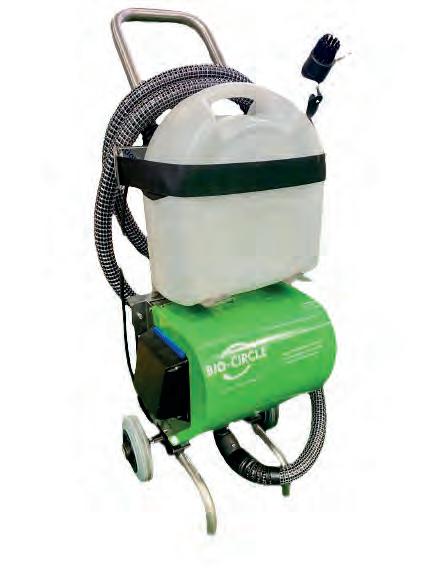
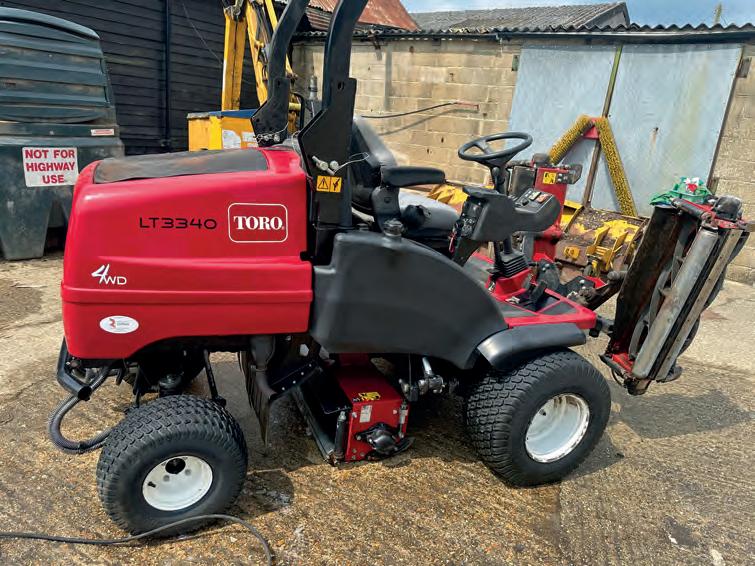

which aren’t just bad for the environment –they’re also bad for our health.”
Why industry bodies must get behind this We need to develop safer practices for all. So why not start now?
and assessment criteria to meet.”
“At these clubs, the central focus is quite literally the turf. But the way that turf is managed somehow falls by the wayside when it comes to sustainability. By partnering with an industry leader like Reesink, GreenGrounds can help drive support for initiatives like EFL Green Clubs and raise awareness about sustainable groundscare.”
But for that to happen at scale, there must be shared standards and measurable criteria for grounds teams to work towards. For Mark, what makes sense most is a GreenGrounds charter that can act as the benchmark for sustainable groundscare.
“Let’s not forget how important sustainability is for groundscare,” explains Mark. “Heavy water use, pesticides, chemical runoff entering natural rivers, streams and brooks. Those tending to machinery also often work with solvents containing volatile organic compounds (VOCs),
Companies like Bio-Circle have pioneered eco-friendly washing systems to significantly cut water use, VOC-free solvents, and other sustainable cleaning solutions – but to enact change across groundscare, industry organisations need to play their part.
As Mark explains: “Because they have a bigger collective call, industry organisations must work with grounds teams to help start their sustainability journey. Only then we can make a real difference in our industry.”
“Together, they can encourage sports facilities to work towards a shared and common goal: a new, revolutionary GreenGrounds charter that can act as a blueprint for clubs and sports facilities across the country.”
Clubs leading the way in sustainable
Some clubs aren’t waiting for sustainability to be handed down as a mandate. They’re already proving what’s possible, and in the process setting new standards for sustainable groundscare.
Recognised as the world’s first UN-certified carbon-neutral football club, Forest Green Rovers has achieved global status with a local league budget. “They set themselves a goal of what they wanted to be – the most sustainable club in the world – and they did it,” says Mark.
“By working with partners like Bio-Circle, Forest Green Rovers has won many awards for its green efforts, including the Elite Organisation of the Year at the BBC Green Sport Awards. Premier League and Bundesliga clubs
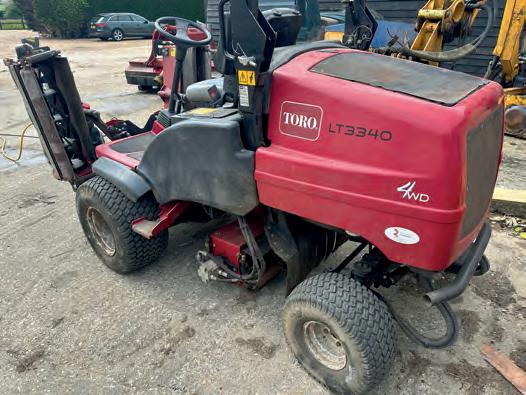
visit them all the time to learn more about their sustainability work, which is phenomenal when you consider the fact they’re a low league club.”
“We’ve been able to help the club implement high levels of water savings, installing a new sustainable three-in-one parts washing EKO system, recycling groundscare equipment, and bringing in VOC-free cleaning practices –eliminating runoff, improving health and safety, and extending the lifespan of machinery.”
Using a smart blend of water and air, EKO

creates a fine mist that delivers high cleaning power while cutting water usage by 39.5 litres per minute. “That equates to around 120,000 litres of water saved per washdown, per site – with zero chemical runoff and no damage to battery-powered equipment,” explains Mark.
“When you consider that big clubs have a stadium, multiple training grounds, and an academy, that’s an incredible amount of water you’re saving during every washdown.”
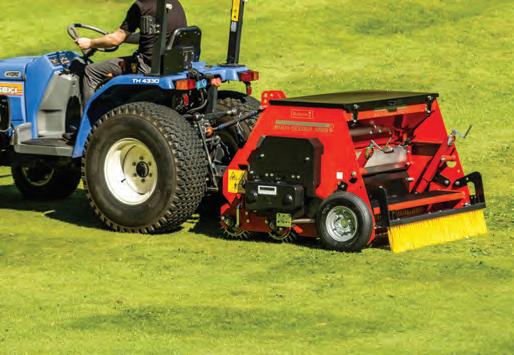
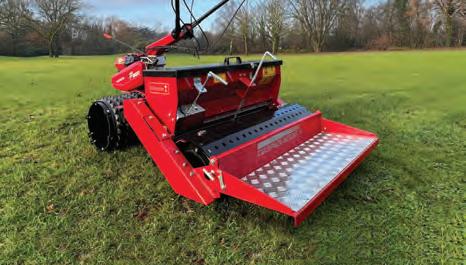




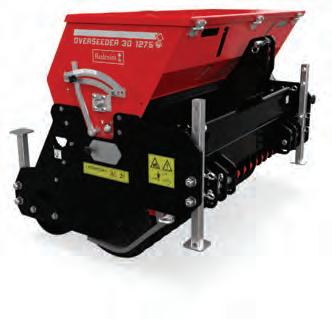

There are many other examples of sustainable groundscare. “We’re seeing areas of stadiums and training grounds transformed with ponds and wildflower mix, as well as orchards and beehives,” says Mark. “Grounds staff are even encouraged to attend beekeeping courses, highlighting a cultural shift towards better environmental engagement.”
“It shows just how brilliant our industry can be. These clubs and stadiums are showing what’s possible and leading by example. And the best part is that none of these things require a Premier League budget – any and all clubs can implement these strategies.”
The road to Euro 2028 runs green
There’s no better opportunity to demonstrate how green groundscare can be than Euro 2028. More than that though, it’s an opportunity to give grounds teams the platform they deserve.
Nine stadiums have been chosen to host the tournament, including Wembley Stadium, the home of English football. Beyond the goals and the glory, these venues now have the chance to make history in another way: by setting a new environmental benchmark for international sport.
The big goal: hosting the most sustainable Euros ever
While an investment of nearly €30 million saw UEFA implement over 120 sustainability actions for Euro 2024, groundscare wasn’t included. “All previous sports tournaments have missed something,” says Mark. “They’ve been praised for being sustainable. But what about groundscare?”

“In the build up to Euro 2028, we have an incredible opportunity to spotlight groundscare and drive sustainable progress in our sector. In doing so, the tournament we host can be the most sustainable tournament in the world.”
“The tournament should be about making a statement that people will listen to and leaving a legacy we can be proud of,” Mark continues. “If we commit to adopting environmentally responsible groundscare practices, from reducing water use and chemical runoff to embracing cleaner technologies, then Euro 2028 will be more than a brilliant moment for British sport. It will be remembered as the moment our industry came together and changed the game for good.”
Join the GreenGrounds conversation
Grounds teams have always played an essential role in the success of major tournaments, ensuring the surfaces meet elite performance standards. Now they deserve to play an essential role in sustainability, too.
GreenGrounds is here to help make that happen. “We want to be part of your sustainability journey,” concludes Mark. “We can help grounds teams make a case for being involved in the overarching green strategy of their clubs, offering practical guidance and supporting the professionals already doing the work behind the scenes. Only then can we make sustainable groundcare a reality.”
Will you be part of the change? Learn more about Reesink, Bio-Circle and GreenGrounds by calling 01480 226800 or finding us at reesinkturfcare.co.uk











Phil Helmn explores negotiation techniques and reveals how diverse styles influence our interactions. As well as fresh perspectives on refining your personal style and developing winning strategies.
His insights empower you to turn negotiations into opportunities, enabling you to confidently achieve successful outcomes that not only seal deals, but also forge lasting partnerships built on trust and mutual success.
In the intricate fabric of daily interactions, negotiation skills subtly weave their way through your everyday, often unnoticed. Though commonly associated with high-stakes business deals or diplomatic negotiations, the principles of negotiation are inherently present in most of our decisions and discussions that shape everyday life. Many individuals unknowingly employ negotiation skills in their personal, social and professional life. Whether it’s deciding on household chores, agreeing on social plans or managing workplace responsibilities, each negotiation fosters important skills such as effective
communication, empathy and strategic thinking. For instance, negotiating household tasks ensures a fair division of labour, while workplace negotiations promote productivity and teamwork.
We all accept, everyone has different communication styles. Individuals bring their own set of experiences, skills and tools that affect the way they interact with others, both at home and in the workplace. Individual communication styles also translate into how they negotiate. From these natural patterns of communication, five distinct negotiation styles appear:
• Competing
• Collaborating
• Compromising
• Accommodating
• Avoiding

Each of the five styles usually uses a different combination of assertiveness and cooperativeness, creating different scenarios of “I win, and you lose,” or a “I win, and you win” and so on, (see figure 1 right).
Competitive style (I win at all costs)
Competitive negotiators tend to do whatever it takes to reach their desired agreement, even when it comes at the expense of another person or entity. They are focused on achieving shortterm goals quickly.
Collaborative style (I win, you win)
This style values strengthening, setting up and building relationships. Individuals are willing to invest time in finding solutions and building valued partnerships. A collaborative negotiation style is effective in most negotiations.
Compromising style (Split the difference)
This style can be sometimes confused with collaborative. Unlike the “win-win” style, where each party concedes part to gain another part, the compromise negotiation focuses on splitting all parts of the negotiation equally.
Avoiding style (I lose, you lose)
People who identify with this style dislike conflict and tend to talk in vague terms. If an agreement is reached and they dislike the outcome, they undermine the result before the other party even knows that they were unhappy.
Accommodating style (I lose, you win)
Accommodating is the direct opposite of competitive. Accommodators try to win people over by giving in to their requests and tend to share more information than they should.
Avoiding negotiating pitfalls
Investing time and effort prior to any negotiation situation yields significant benefits. It enhances understanding of both parties’ needs, strengthens one’s position, builds confidence and allows for strategic planning. This preparation leads to more effective communication, better solutions and more successful and mutually beneficial outcomes in the negotiation process. In the intricate dance of negotiation, avoiding common pitfalls is key to achieving favourable and lasting outcomes:
• Unclear communication
Misunderstandings, ambiguous statements can derail the negotiation process. Clear and assertive communication is crucial for articulating one’s own needs and interests without being aggressive or confrontational.
• Being afraid to offend
You may fear rejecting other people’s proposals or find it embarrassing or stressful. Unlike an argument, negotiation is a conversation aimed at reaching an agreement. It’s just part of the process!
• Not listening
If you talk over or ignore what is being said, it will make it harder to agree.
• A rigid approach
Being too rigid in one’s demands or unwilling to consider alternatives can lead to deadlock and missed opportunities.
• Caring too much
You need to care about the outcome, but not so much that you make an unwise decision because you feel unable to walk away. Keep your emotions in check and decide when to call it a day.
The term “B.A.T.N.A.” (Best Alternative to a Negotiated Agreement) relies on knowing the ‘zone’ of negotiation, and even though your aim in negotiation is to get what you want, you need to decide when it’s best to cut your losses and walk away. Having a clear B.A.T.N.A. means you can push harder during negotiations and get a better deal than you expected (see figure 2 above).
Understanding the negotiation lifecycle provides significant benefits. It allows individuals to approach negotiations systematically, ensuring thorough preparation, strategic execution and effective resolution.

By recognising each stage, negotiators can predict challenges and adapt their strategies accordingly, (see figure 3).
• Preparation
• Discussion
• Bargaining
• Finalise
• Follow up
Preparation
By gathering relevant information and predicting potential challenges, negotiators can confidently address issues and propose practical solutions. Ultimately, preparation fosters confidence, reduces uncertainties and increases the likelihood of reaching a mutually beneficial agreement. Key points:
• Identify the issue
• Define your B.A.T.N.A
• Decide your style
Discussion
During this phase, parties exchange information, clarify their needs and explore potential solutions. By engaging in open and respectful dialogue, negotiators can collaboratively develop strategies that address the concerns of all parties. Key points:
• Understand the other parties B.A.T.N.A
• Build relationships and trust
• Be clear and concise in your communication
Bargaining
This phase tests negotiation skills, including persuasion, strategic thinking and compromise. Ultimately, successful bargaining leads to outcomes that are satisfactory for all involved,
enhancing the potential for sustained cooperation and long-term relationships.
• Stick to your ‘plan’ (remember your B.A.T.N.A.)
• Generate alternatives
• Try not to win. Encourage give-and-take
Finalising
This phase solidifies commitments and formalises the negotiated terms, fostering accountability. Proper finalisation includes documenting the agreement in writing, which serves as a reference and legal safeguard. It also provides an opportunity to review and confirm details, ensuring alignment and satisfaction.
• Double check agreement and get it in writing
• Create an action plan and timeline for outcomes
• Congratulate the other party (never gloat)
Follow up
Following up on previously agreed negotiated












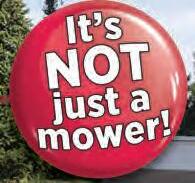


You already know that Ventrac has four di erent mowing options – rotary, flail, cylinder and brushcutter – but with over 30 other attachments, it’s the most versatile grounds management system available in the UK today. Your team will accomplish so much more!
See for yourself and call us today on 01284 827540 for a demonstration
Tel: +44 (0) 1284 827540 email: info@priceturfcare.com web: www.priceturfcare.com
Step into the conversation like a pro - trust your instincts, finesse your approach and turn negotiations into effortless victories.
In the realm of negotiation, the environment in which discussions take place plays a pivotal role in deciding the success of the outcome. While the skills and strategies of the negotiators are undoubtedly crucial, the physical and psychological space can significantly influence the dynamics of the negotiation process. Therefore, the importance of a good space for negotiations cannot be overstated. By carefully considering factors such as physical comfort, privacy, neutrality and technological support, one can create a space that fosters trust, effective communication and collaboration.
Negotiations often involve sensitive information and confidential discussions. A private space ensures that conversations stay secure and that parties can speak freely without fear of being overheard. This sense of privacy fosters openness and honesty, allowing negotiators to share their true interests and concerns.
The setting of the negotiation should be neutral and free from any partisan influences. Neutral environments prevent any party from feeling disadvantaged or dominated by the host. A neutral setting helps support focus on the issues at hand and promotes a balanced power dynamic among the parties.
Psychological safety means that individuals feel respected, valued and free to express their thoughts without fear of judgment or retribution. This can be fostered by setting up ground rules for respectful communication and ensuring that all voices are heard.
Having a neutral mediator present can enhance the negotiation process. A neutral party can help manage the flow of conversation, ensure that all sides have an opportunity to speak and help in resolving any conflicts that may arise.
In a globalised world, negotiations often involve parties from diverse cultural backgrounds. A good negotiation space should consider seating arrangements, hospitality practices and communication styles.
One of the key challenges in negotiation is managing our emotions. Emotions, when left unchecked, can cloud judgment, escalate conflicts and hinder the achievement of mutually beneficial agreements.
Emotional outbursts or erratic behaviour can undermine and create an atmosphere of suspicion and hostility, while a composed and rational demeanour shows professionalism and reliability. This fosters a positive negotiation climate, where parties feel respected and valued, leading to more sustainable and satisfactory agreements. Effective negotiation requires a blend of strategy, communication and

